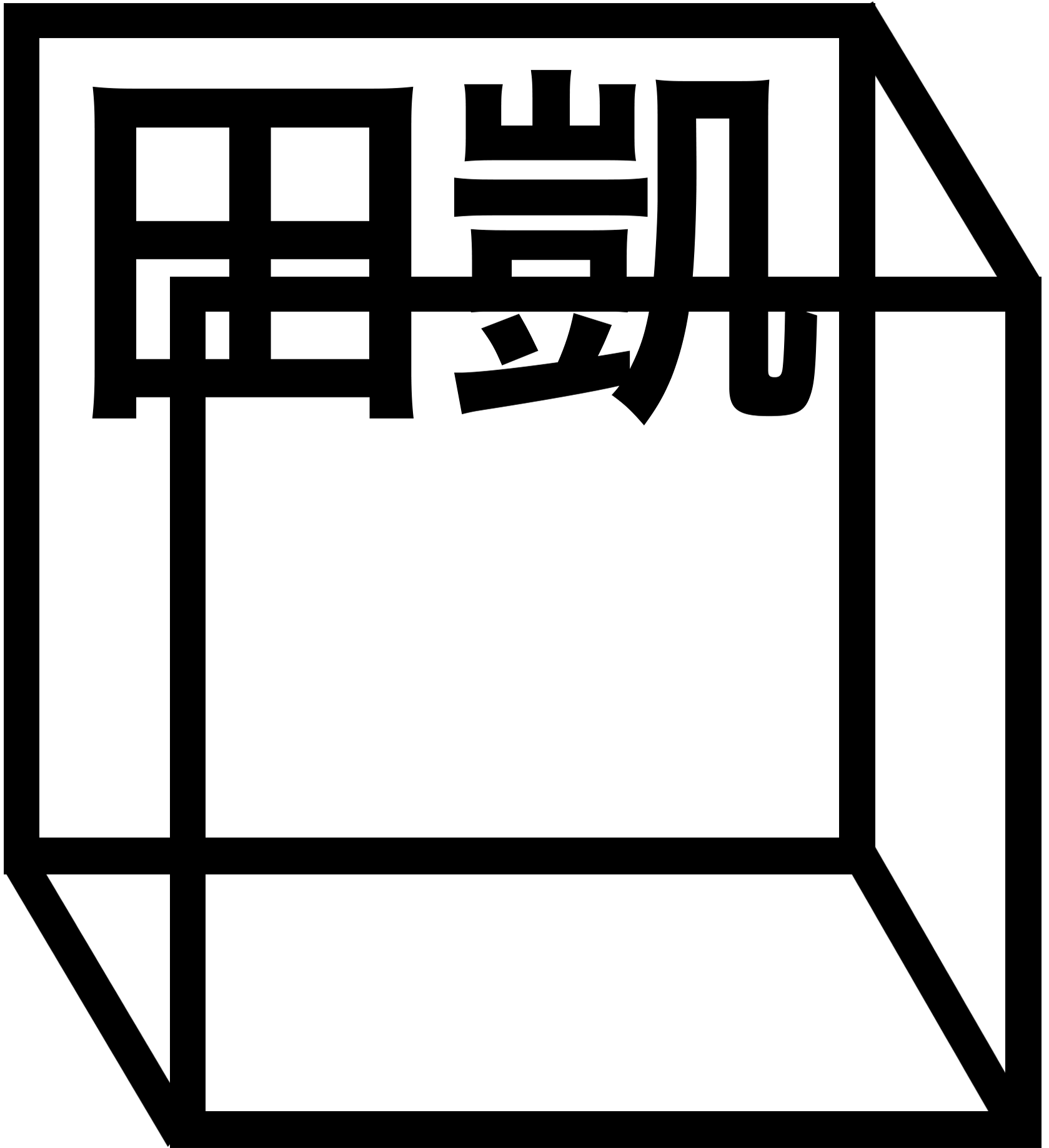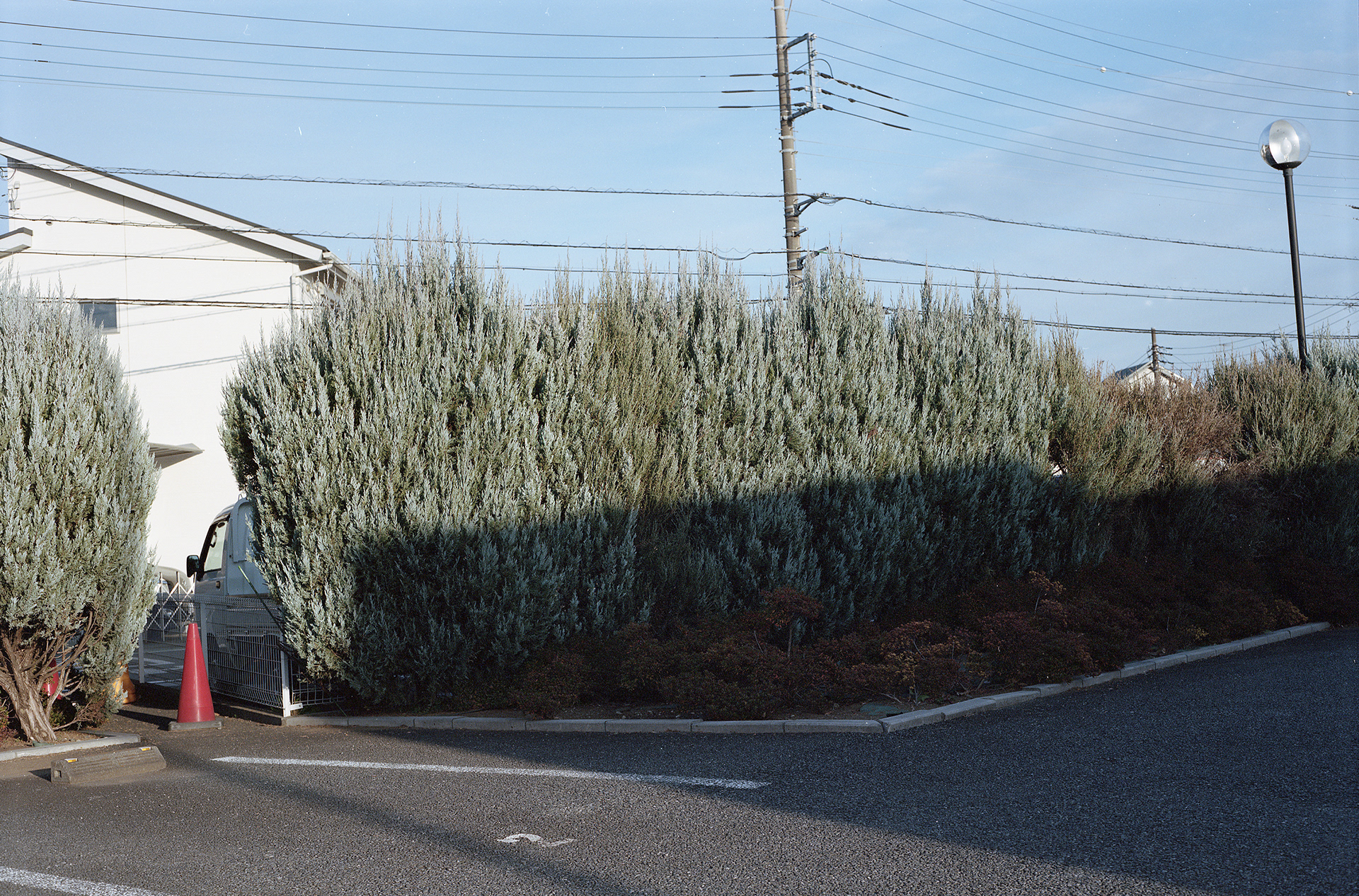
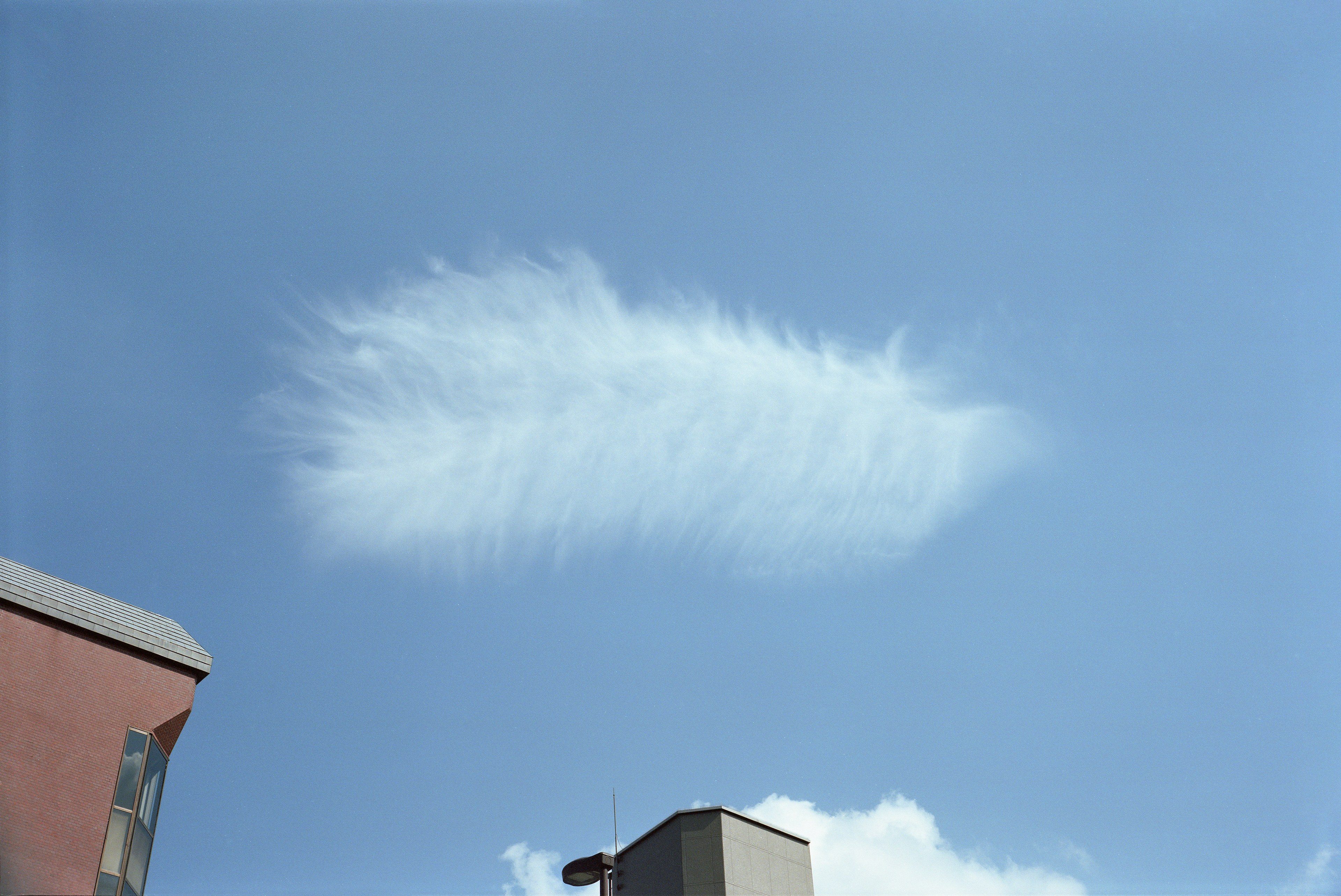
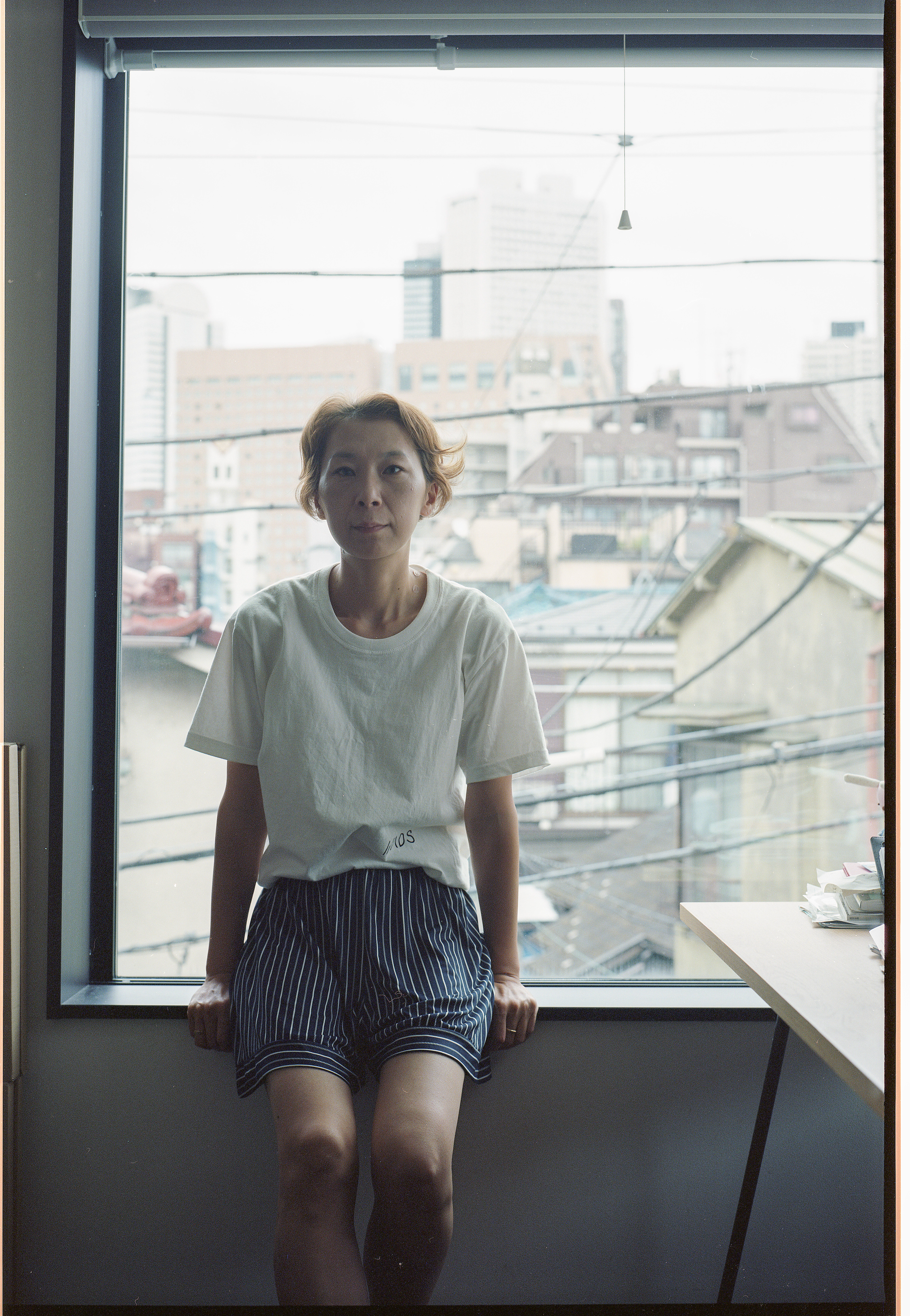
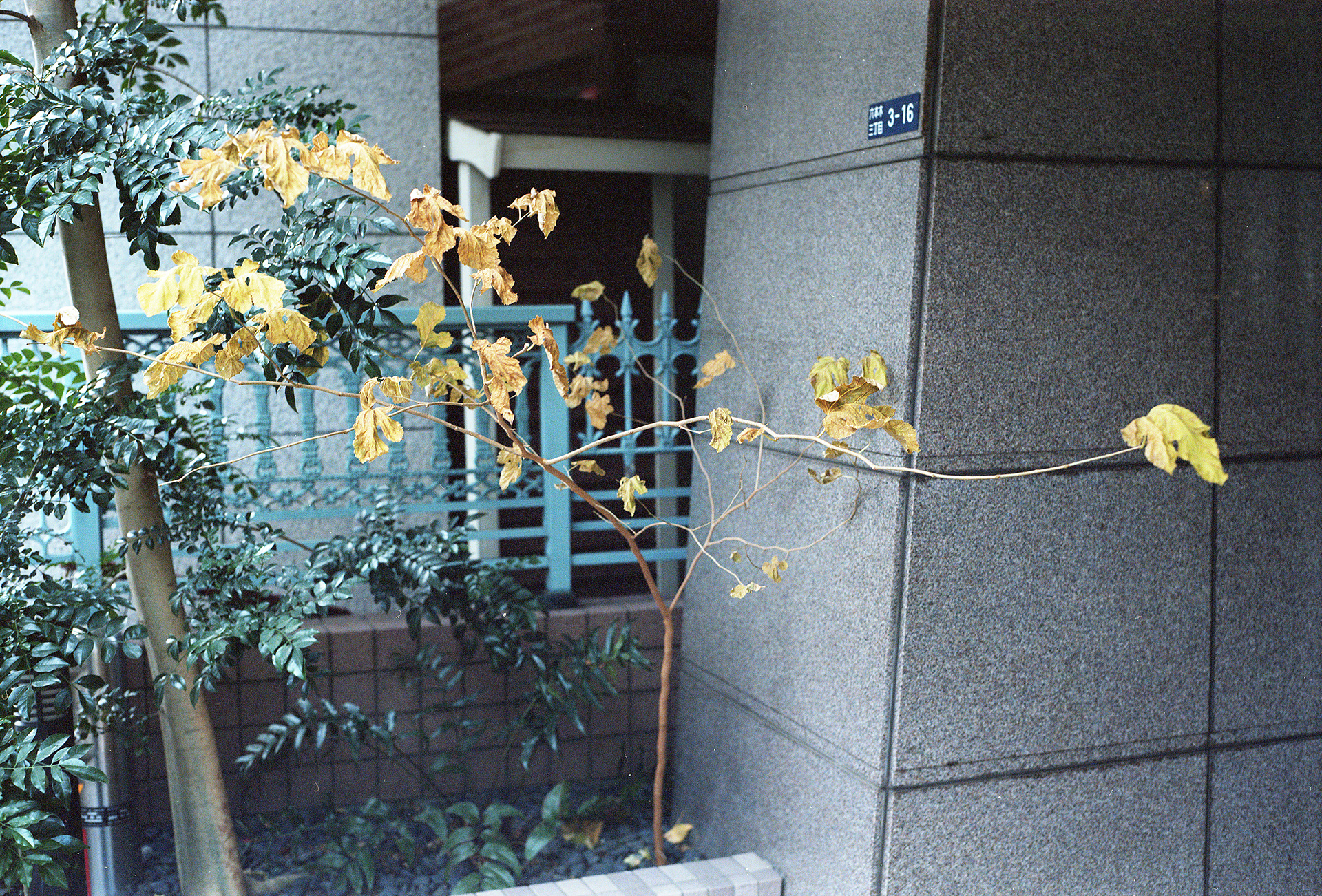
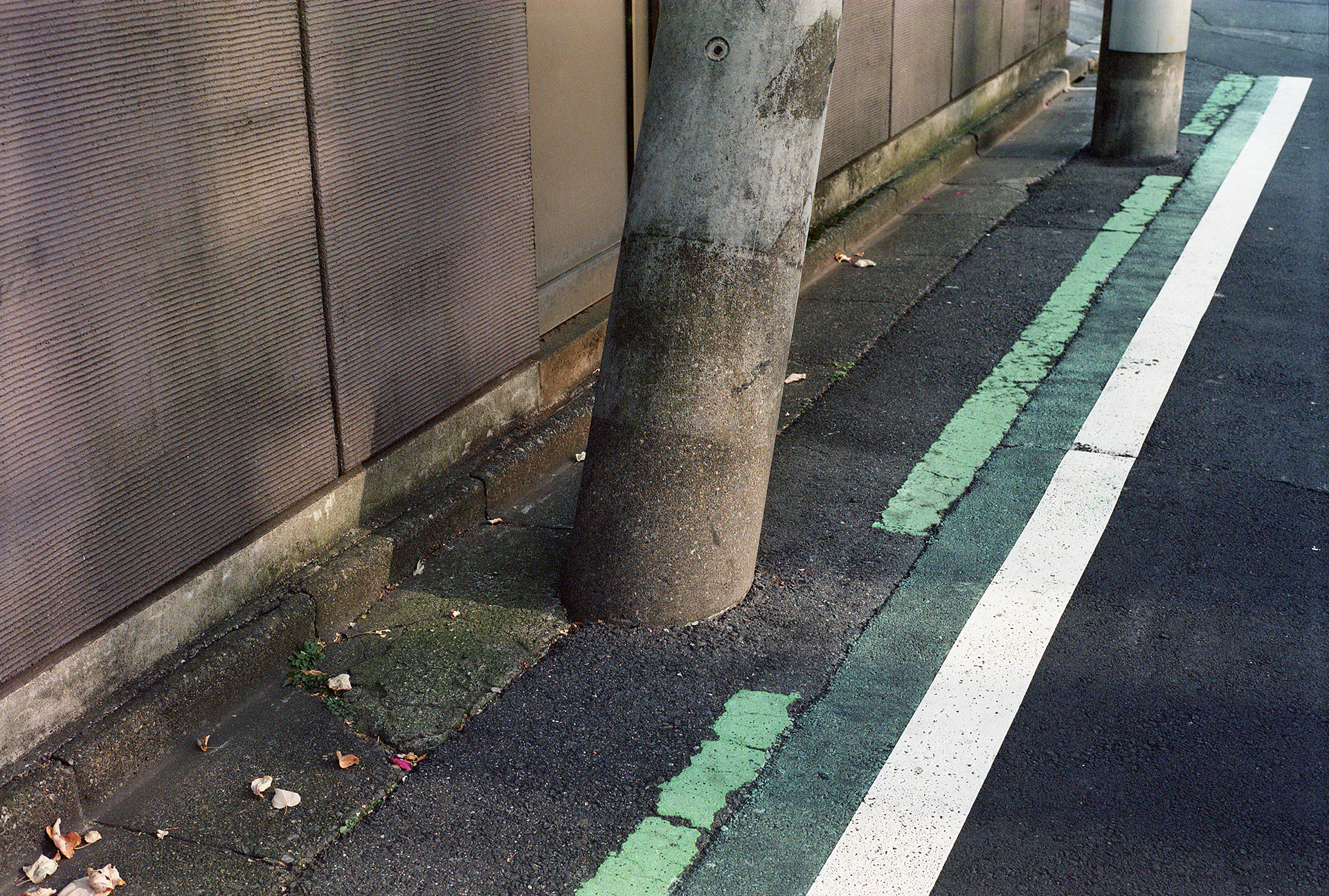
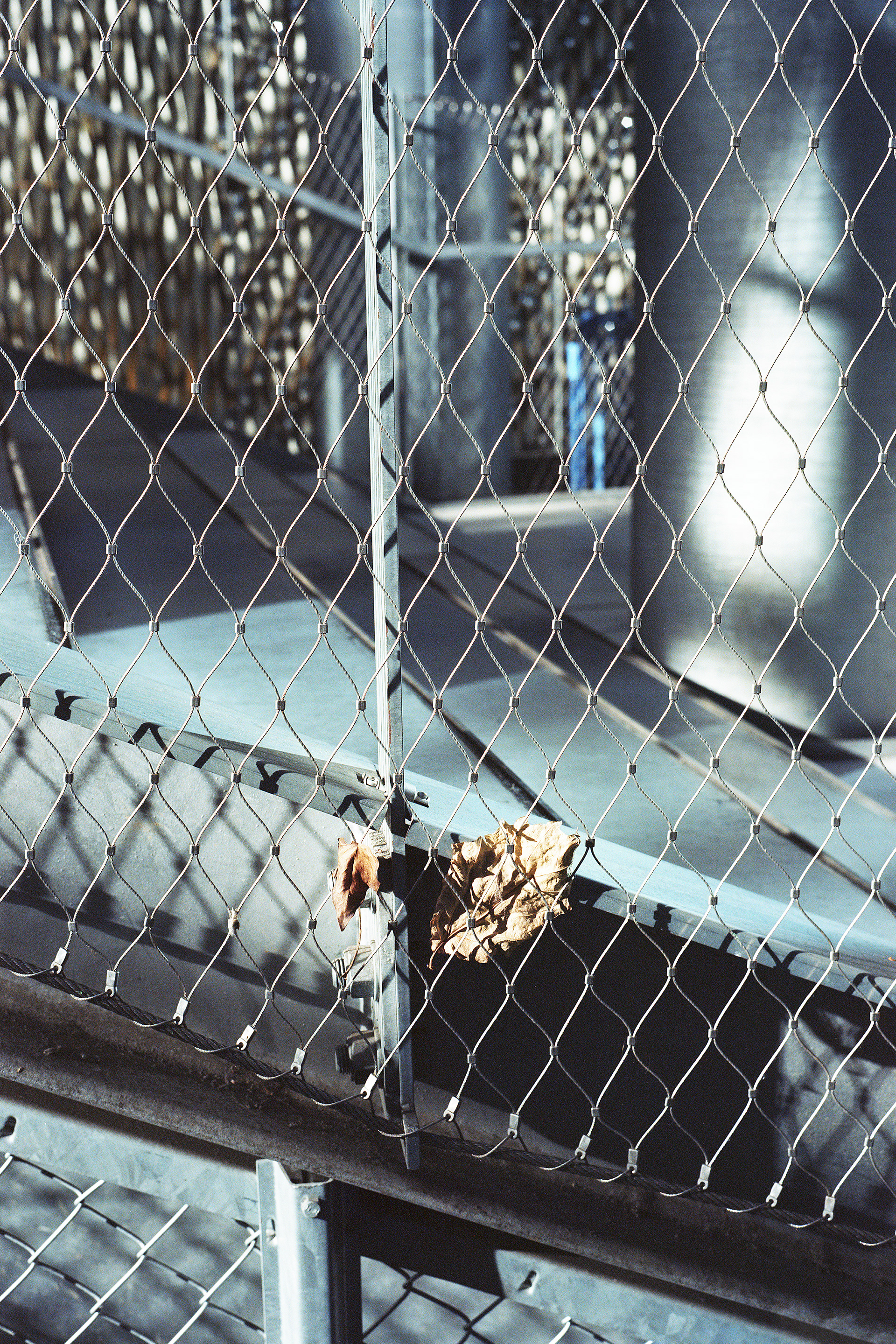
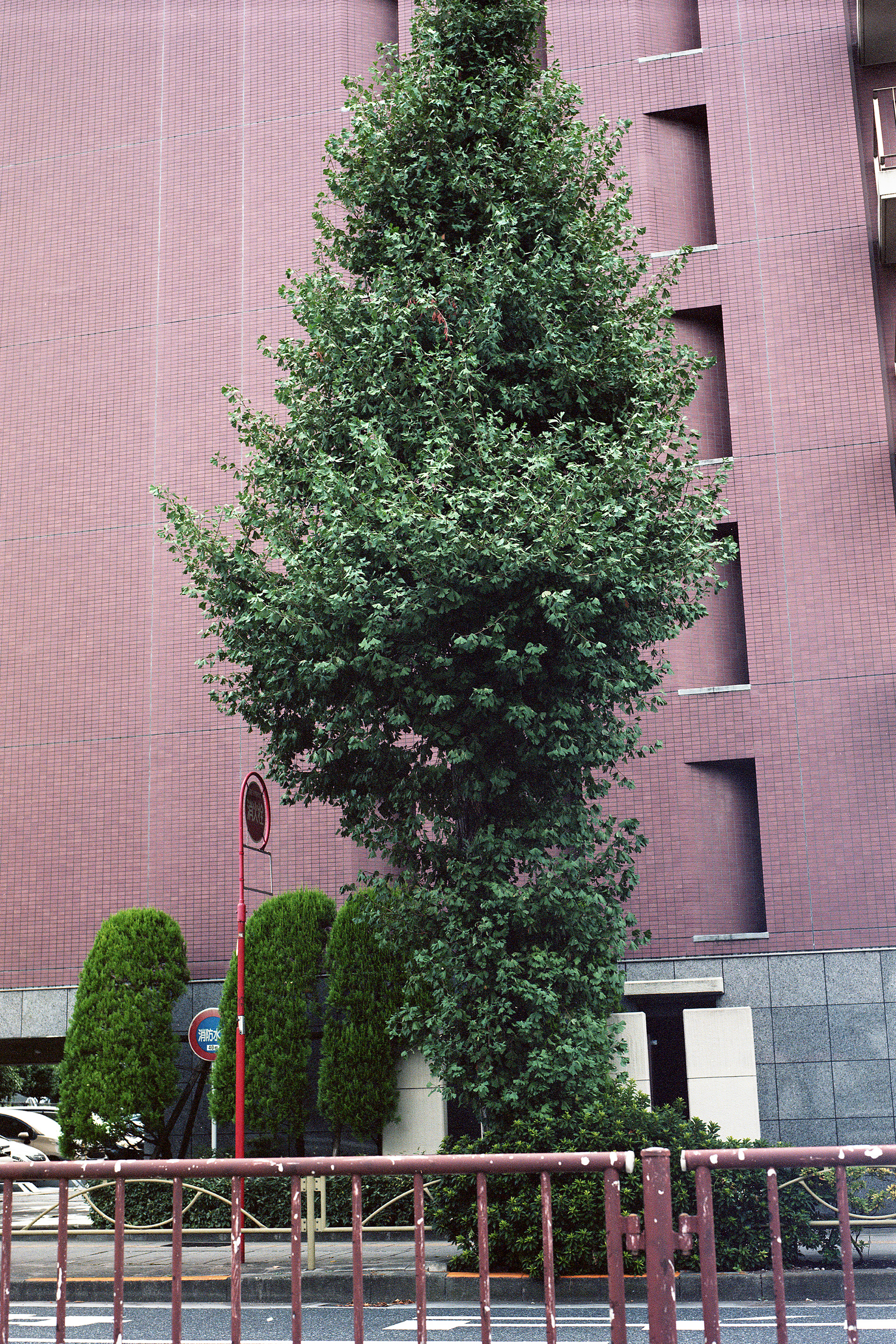
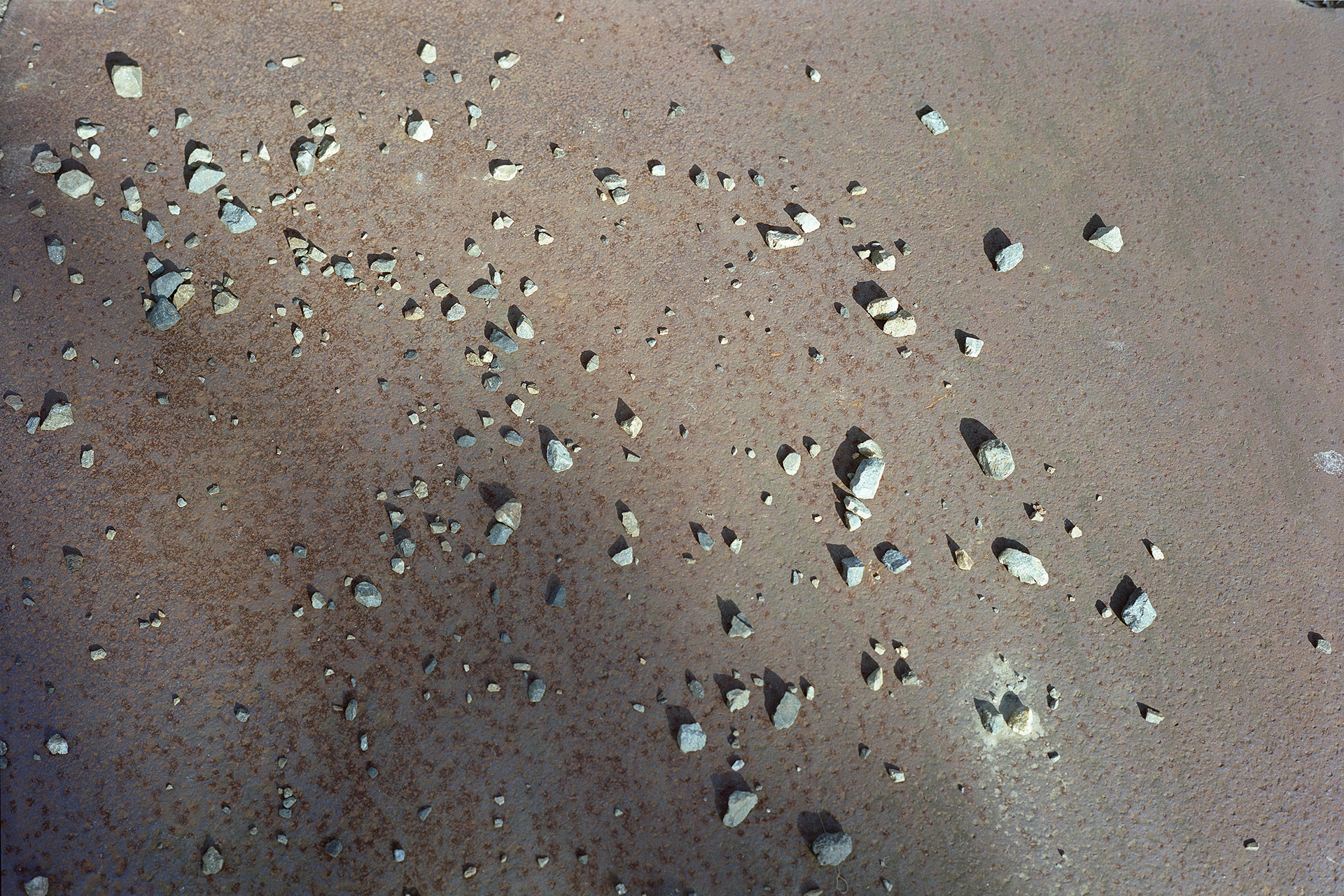
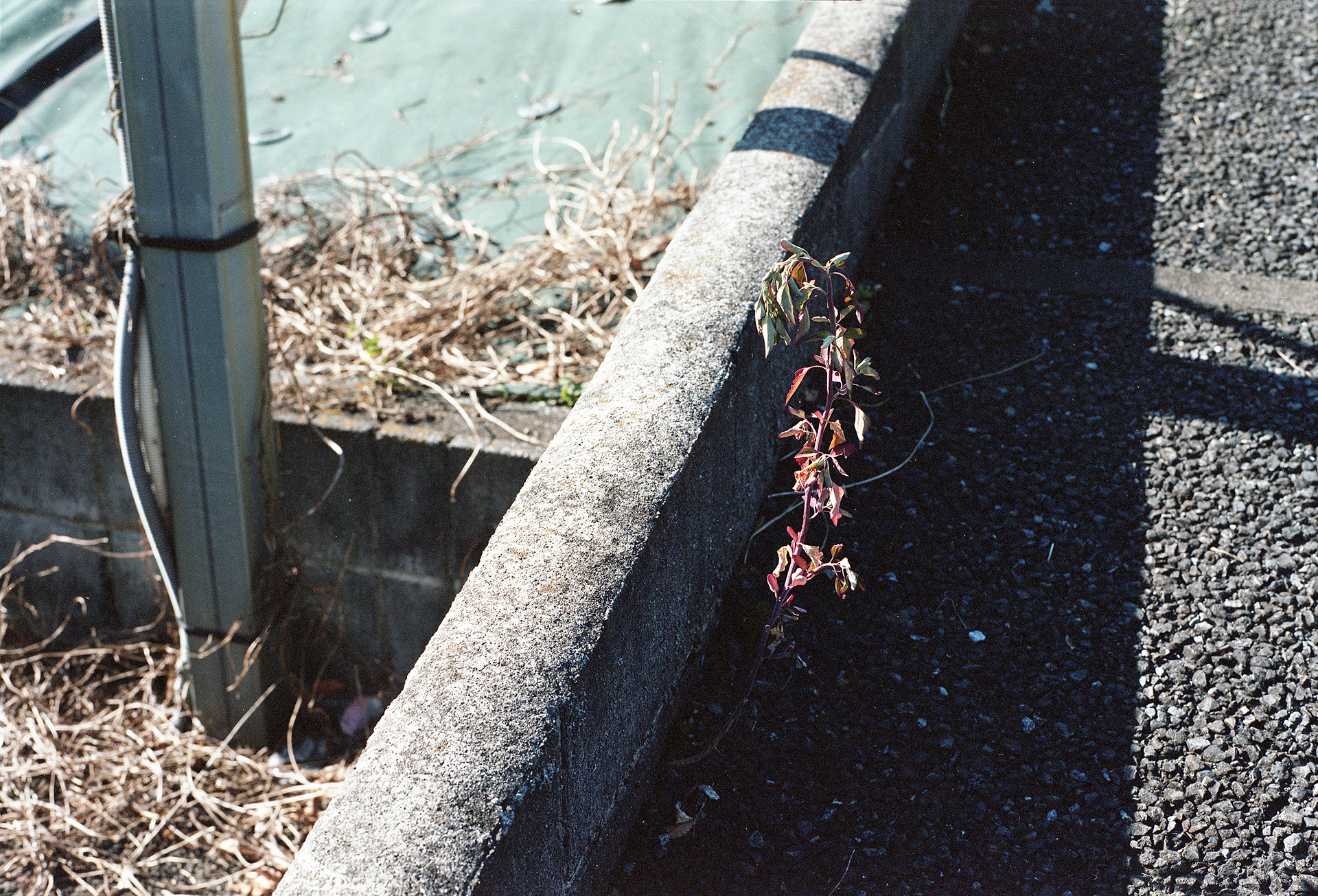
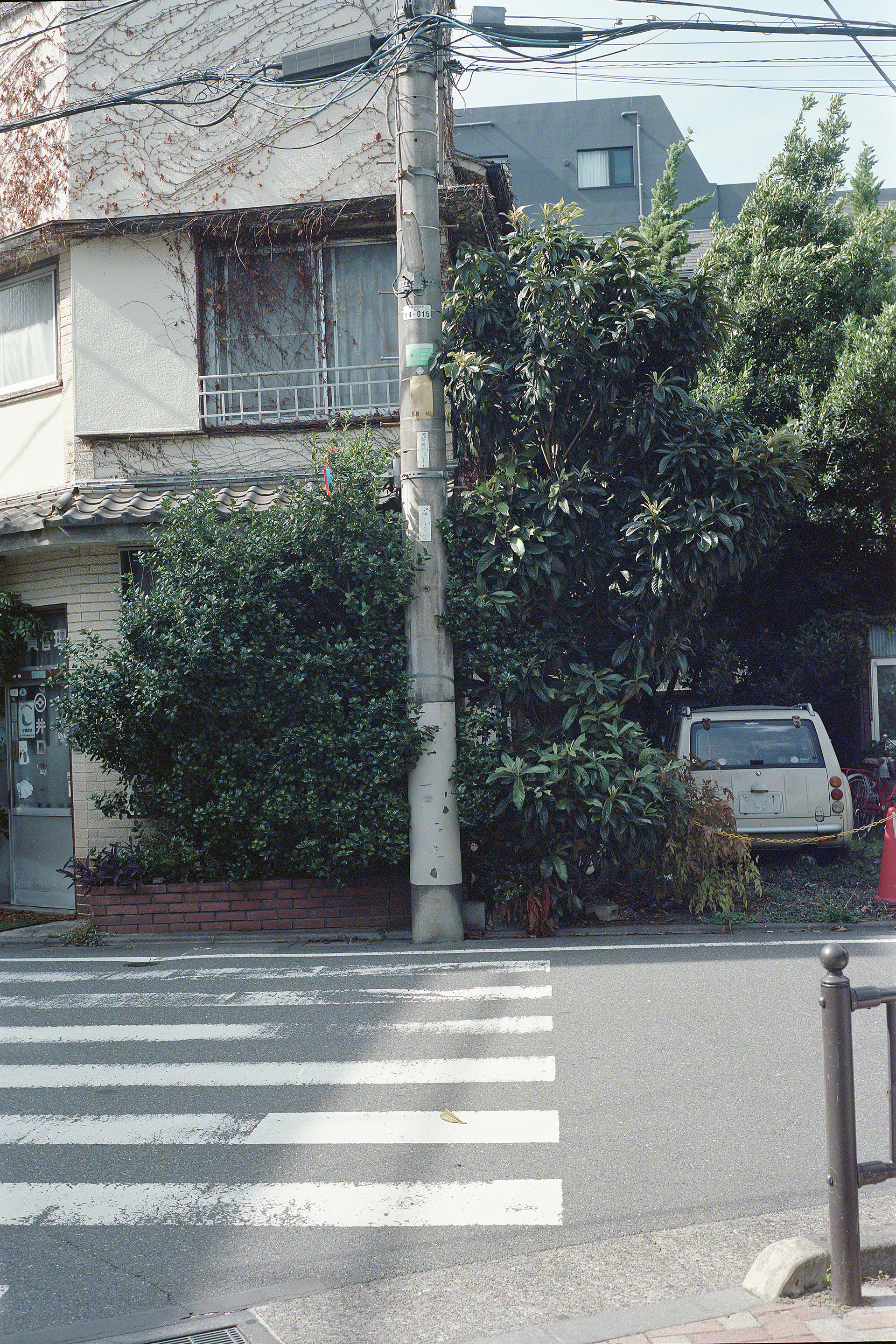
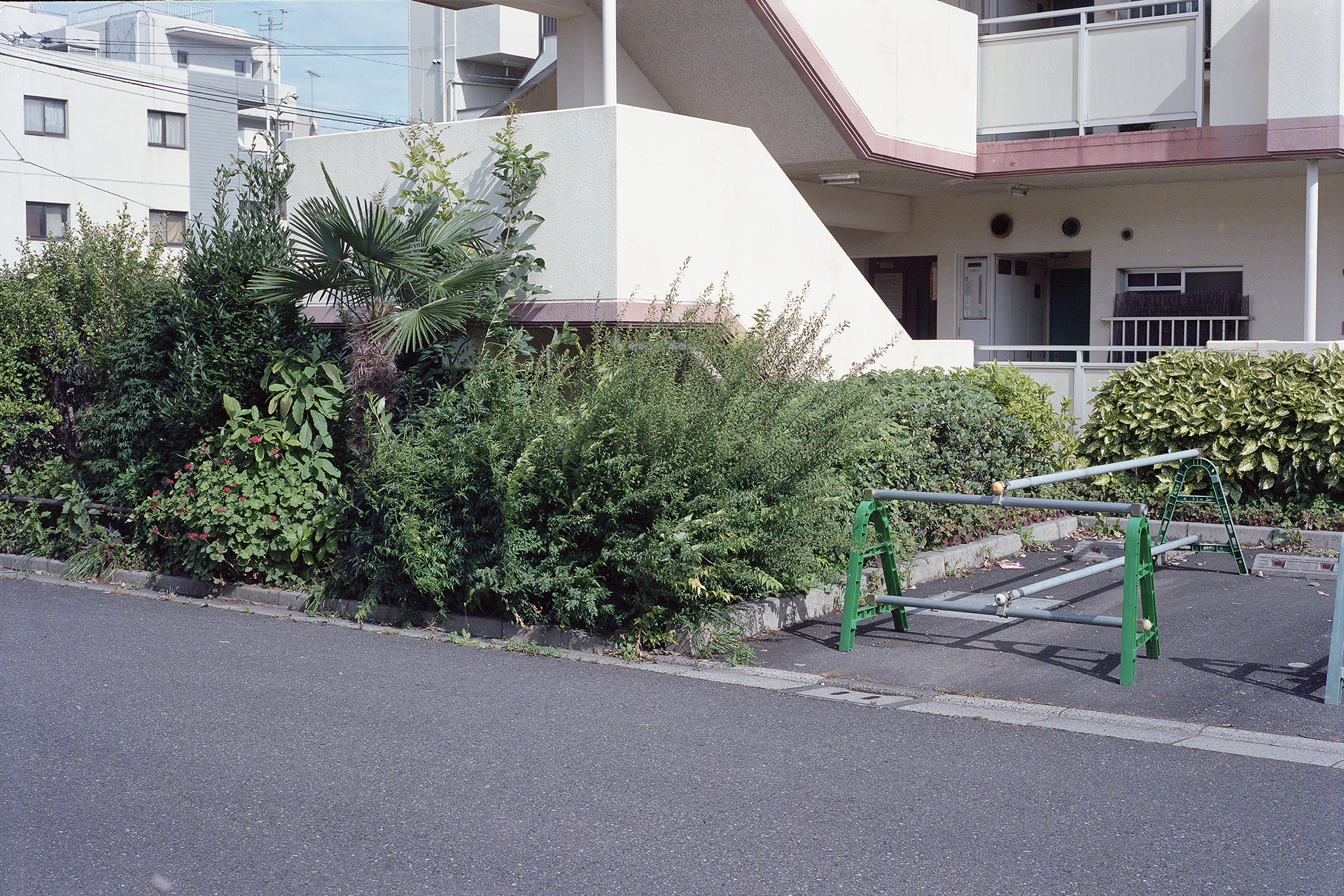
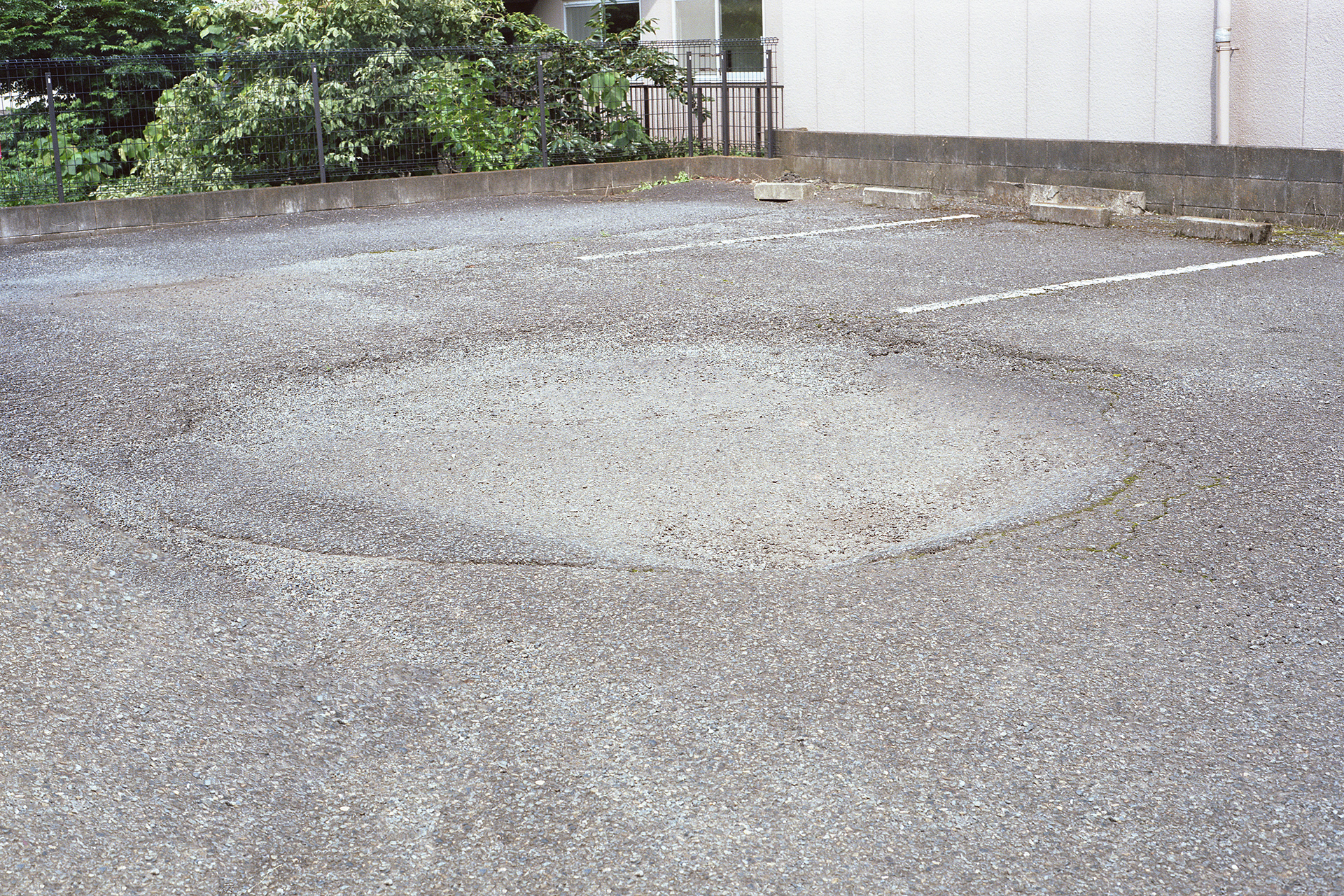
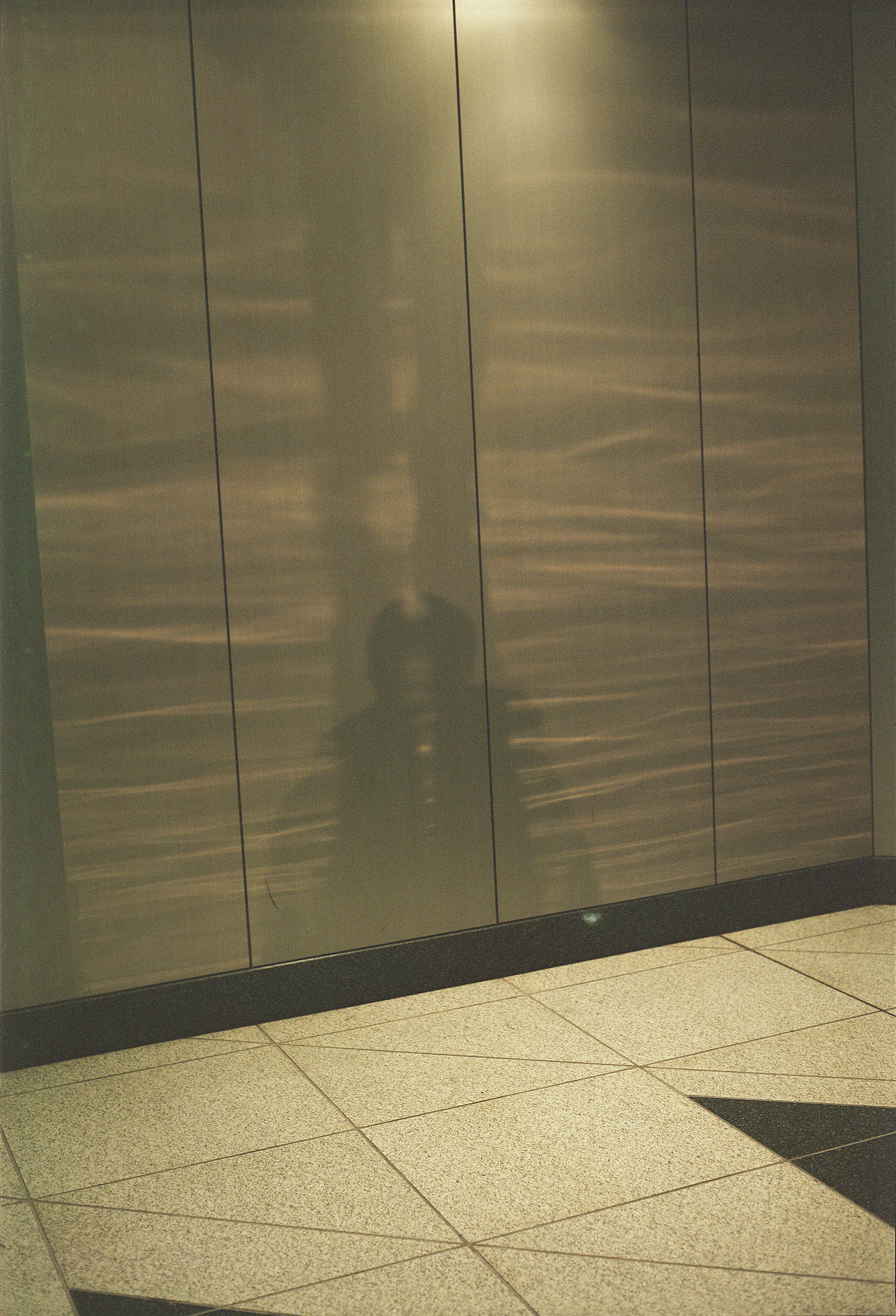
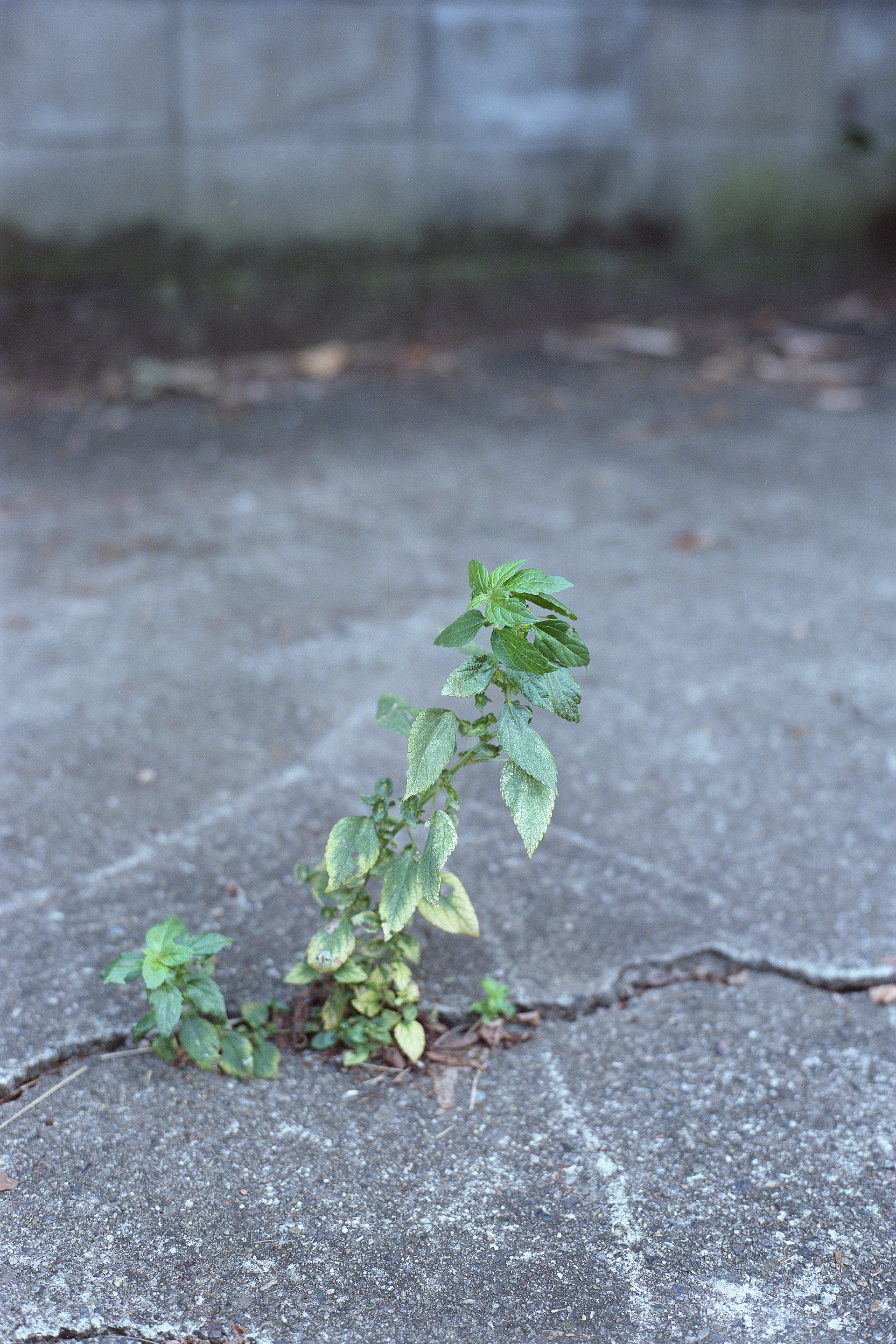
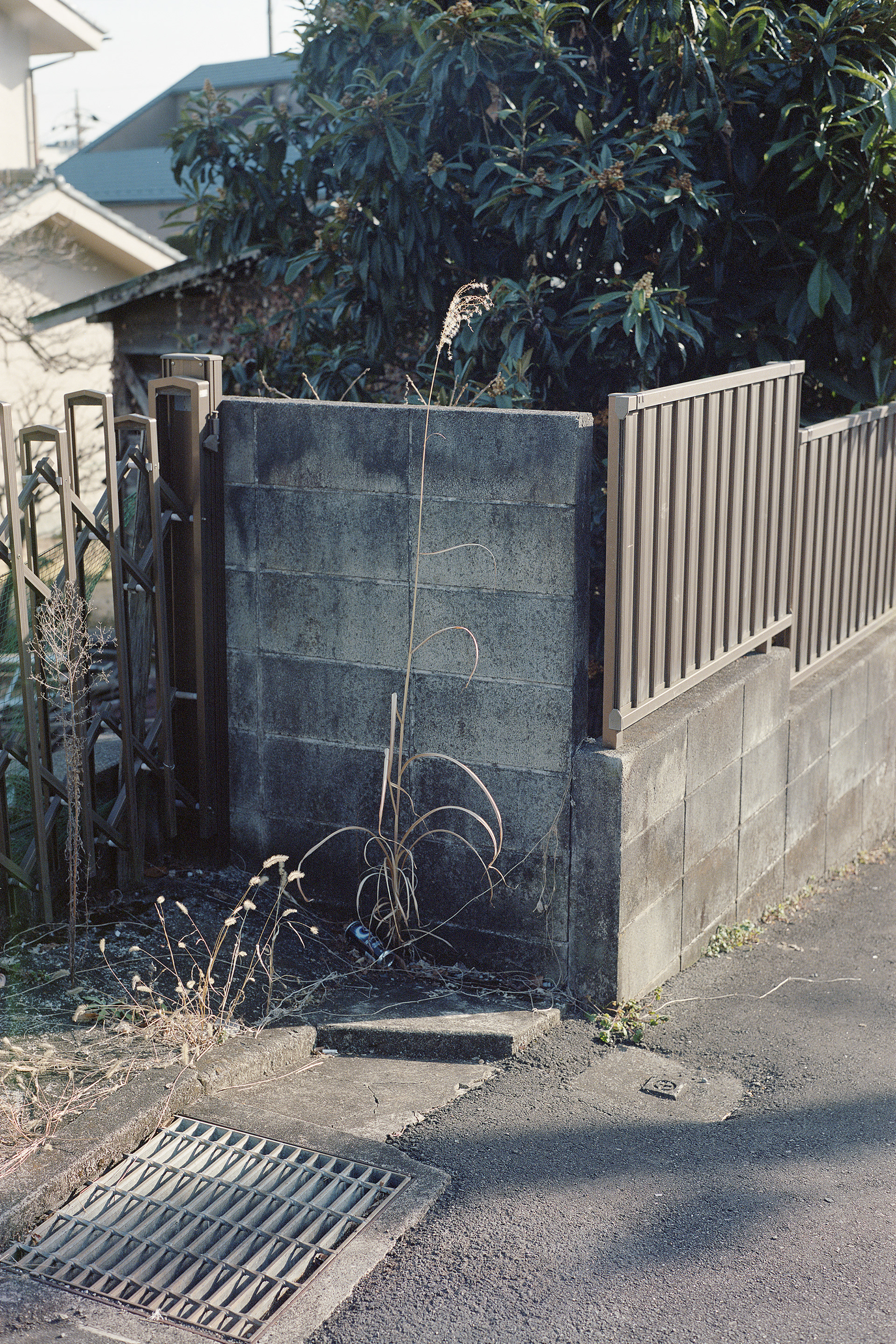
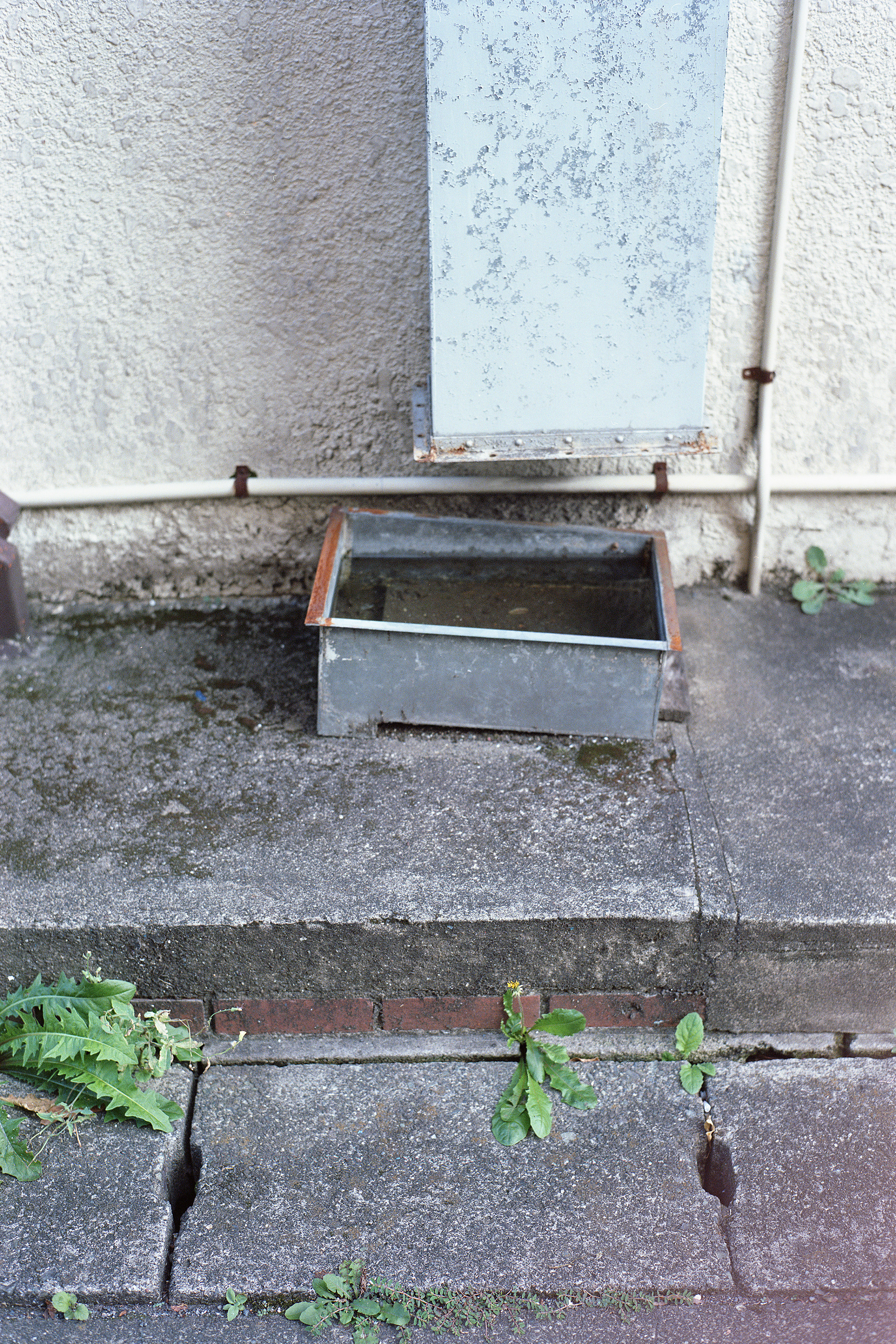
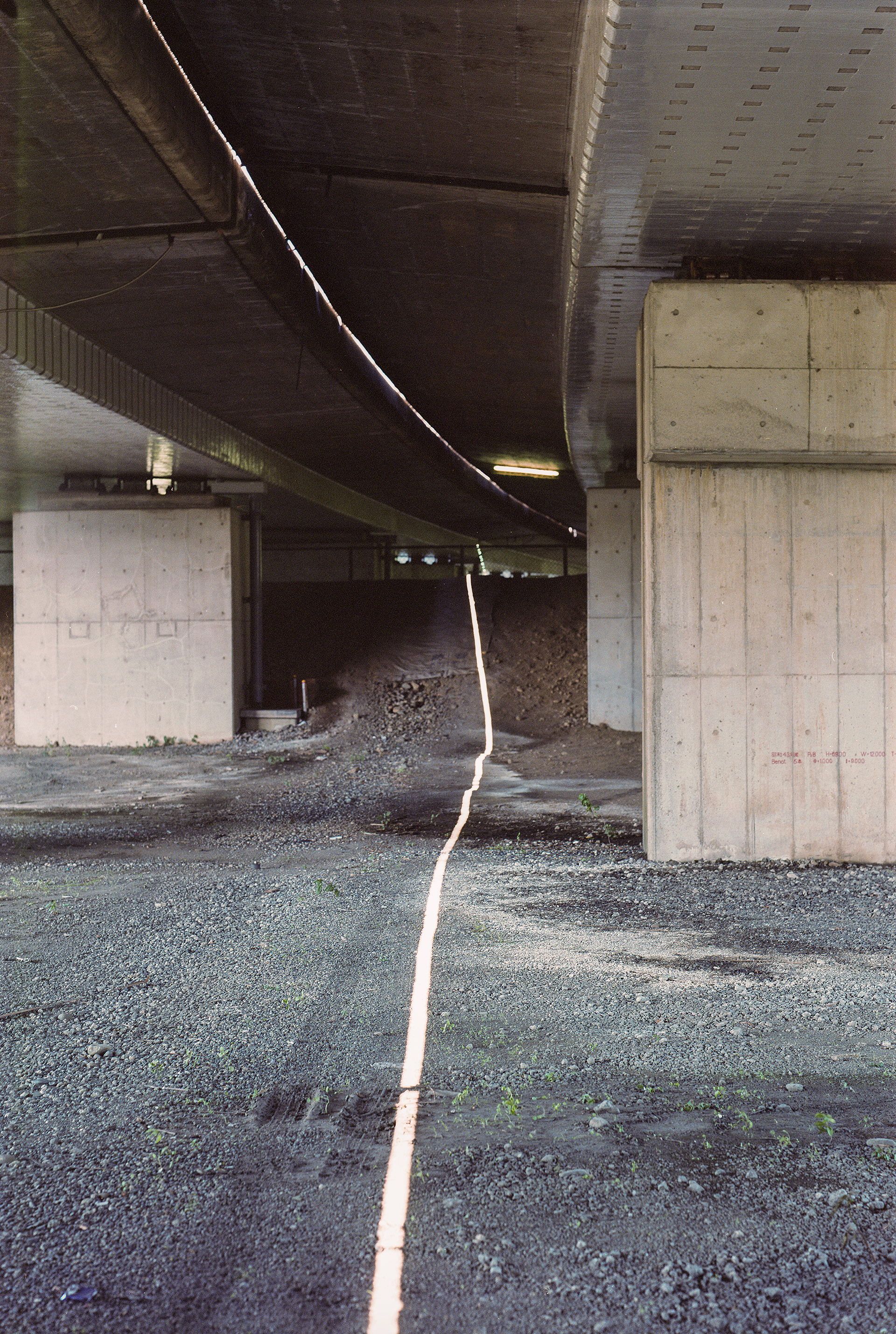
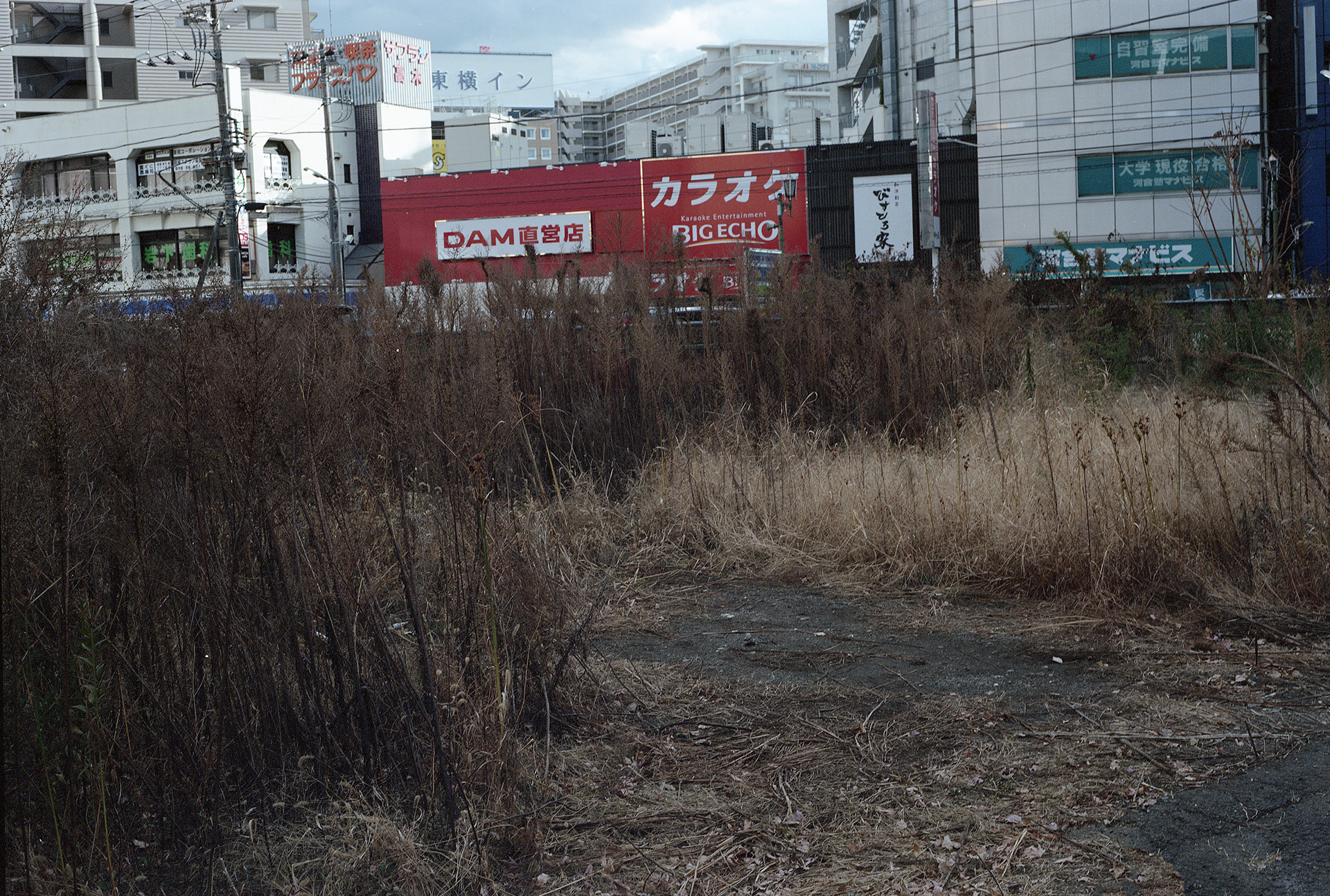
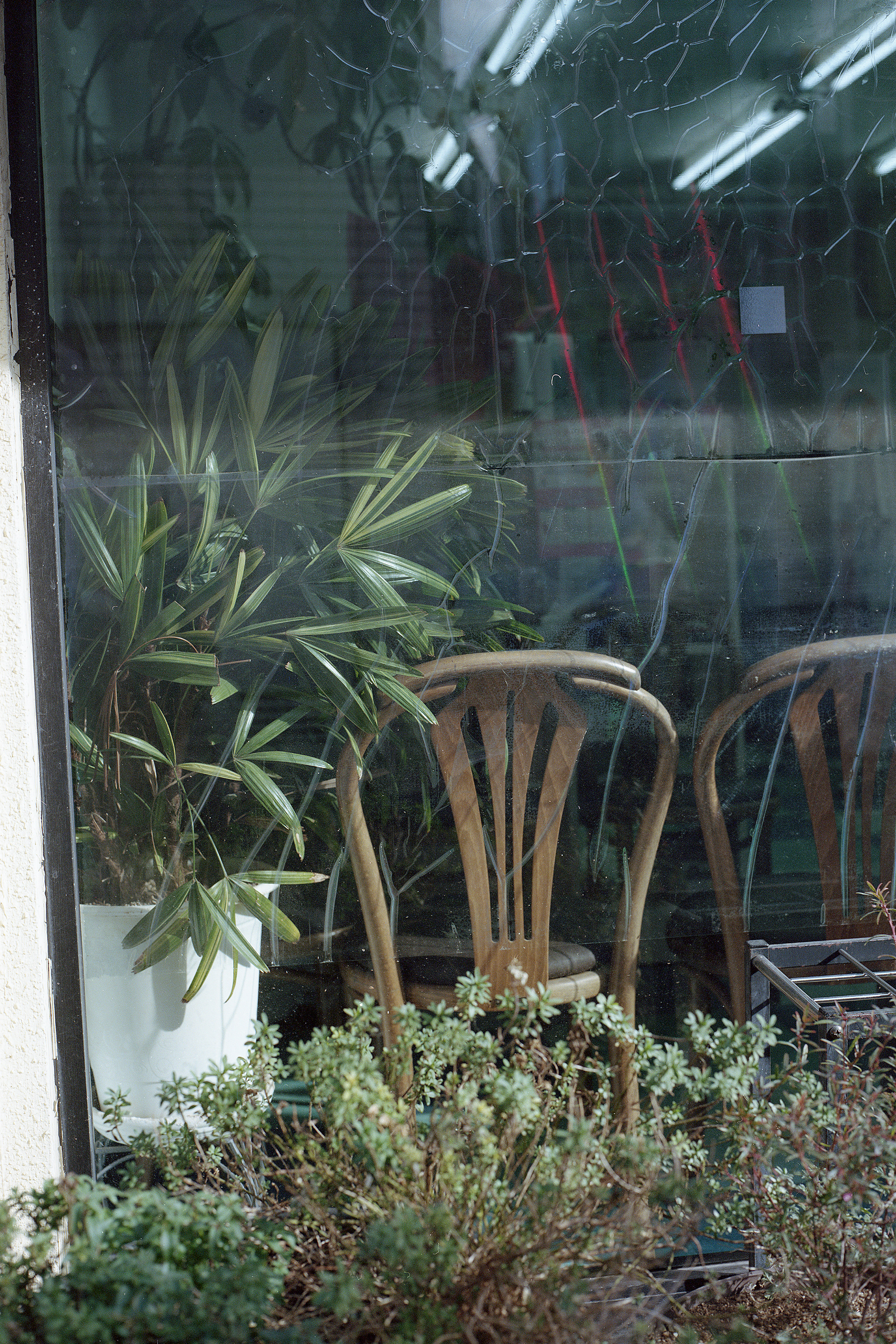
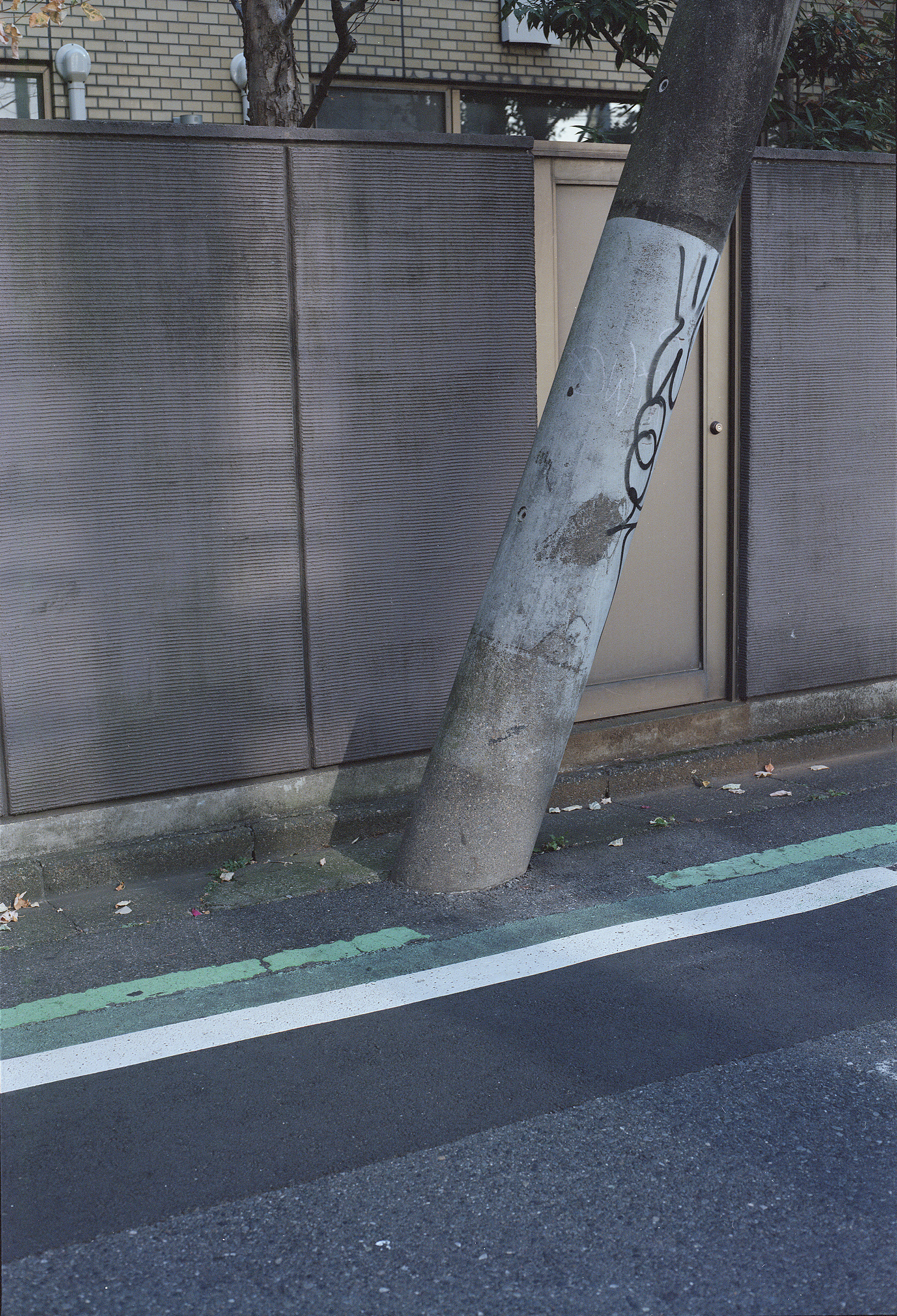
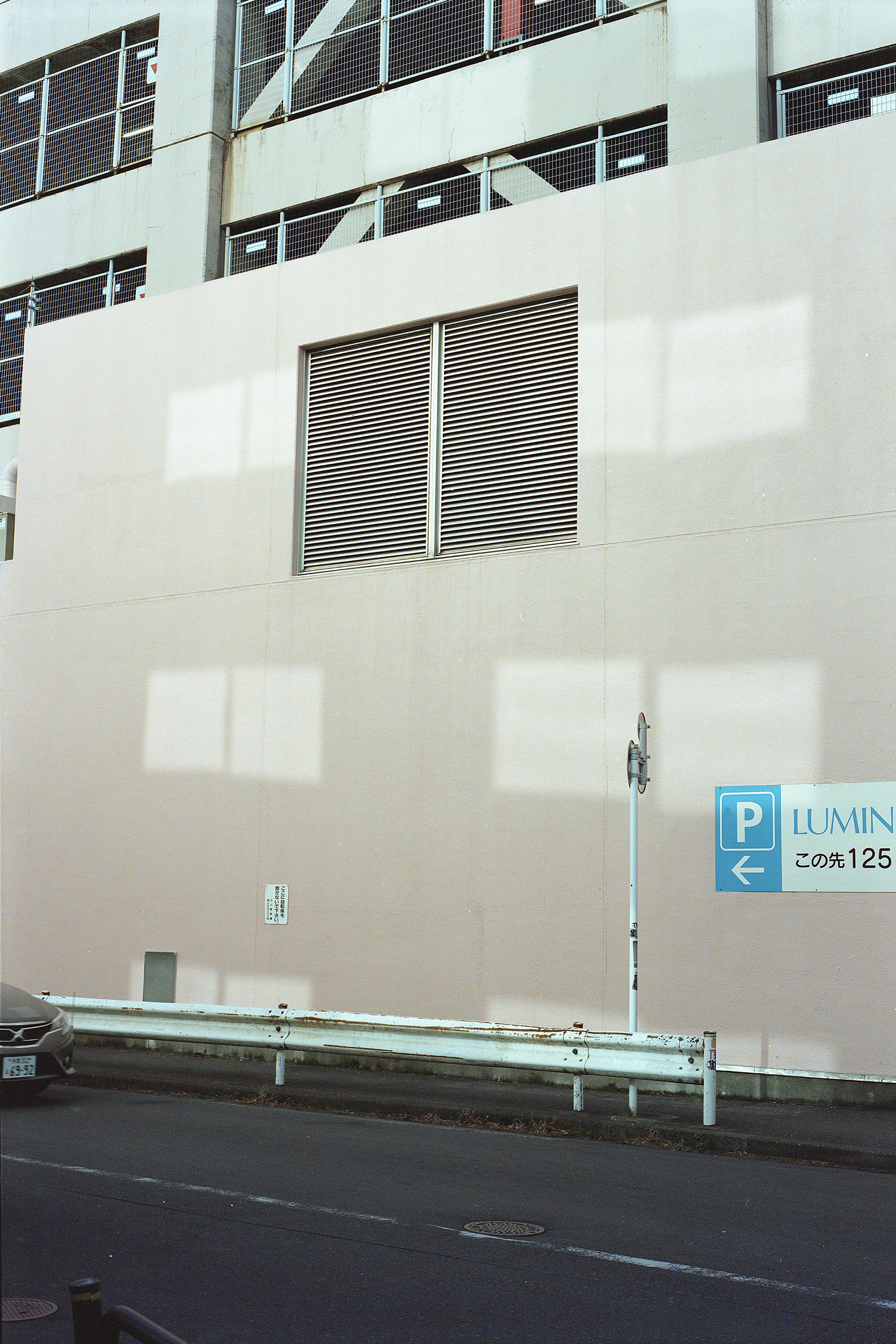
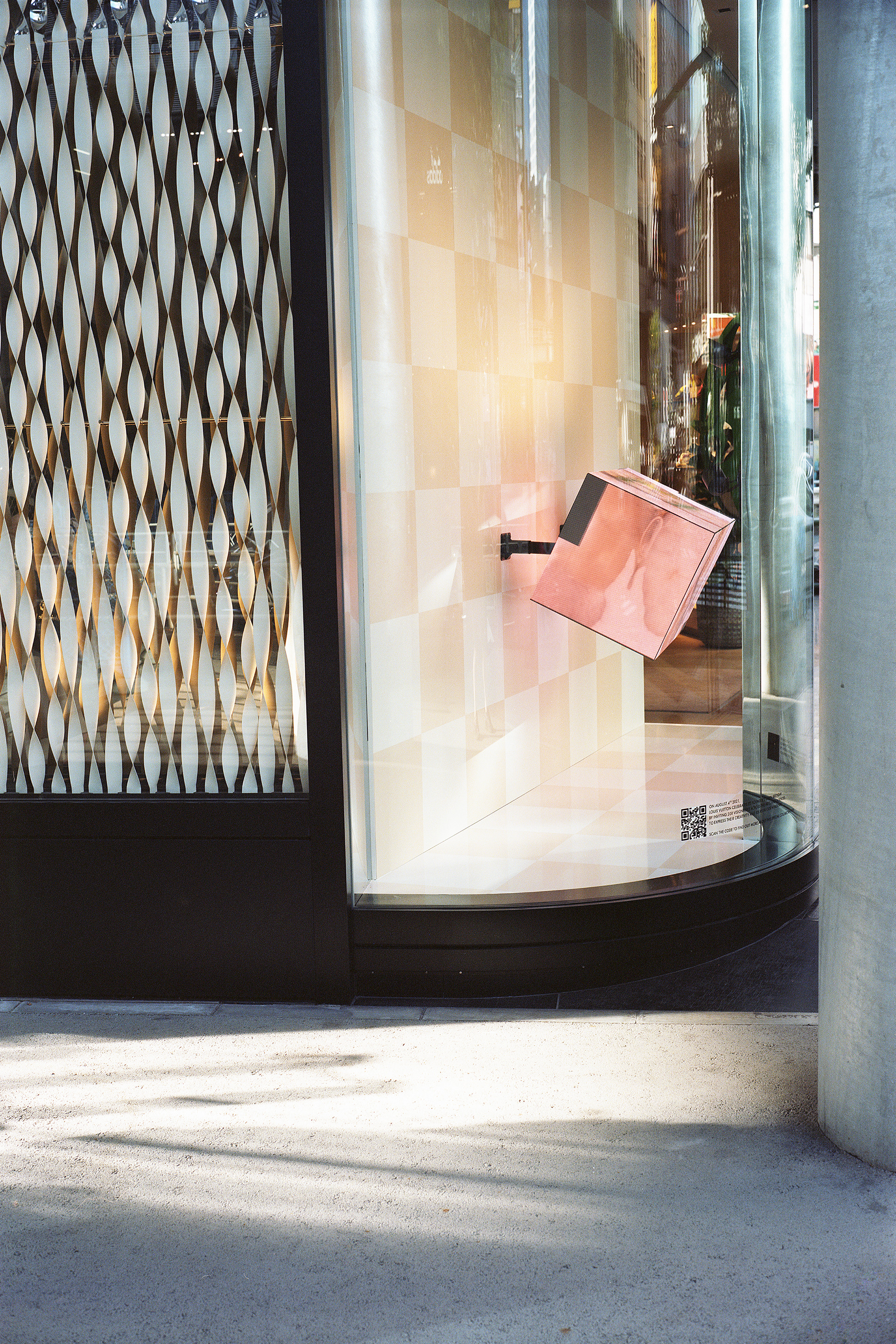
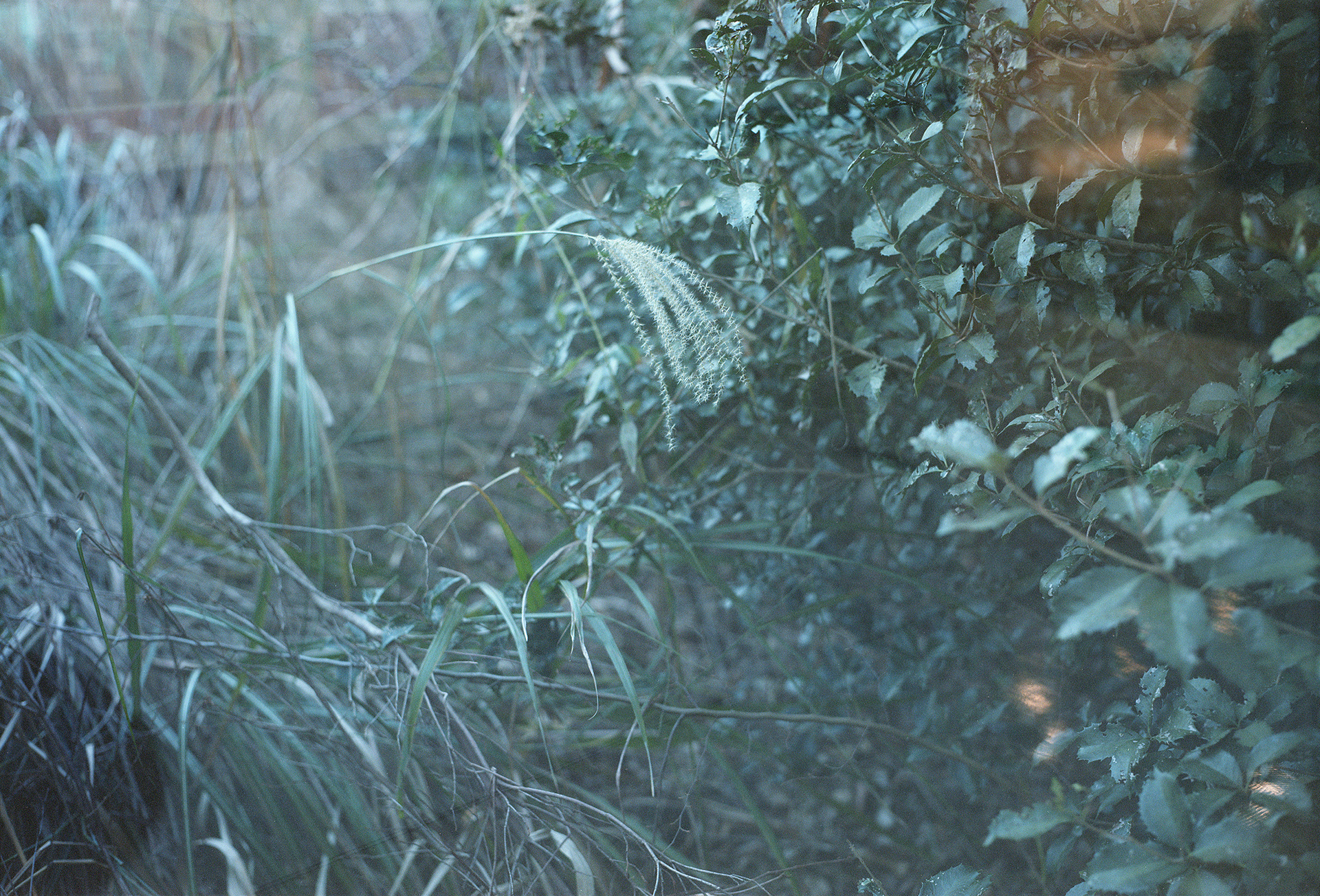
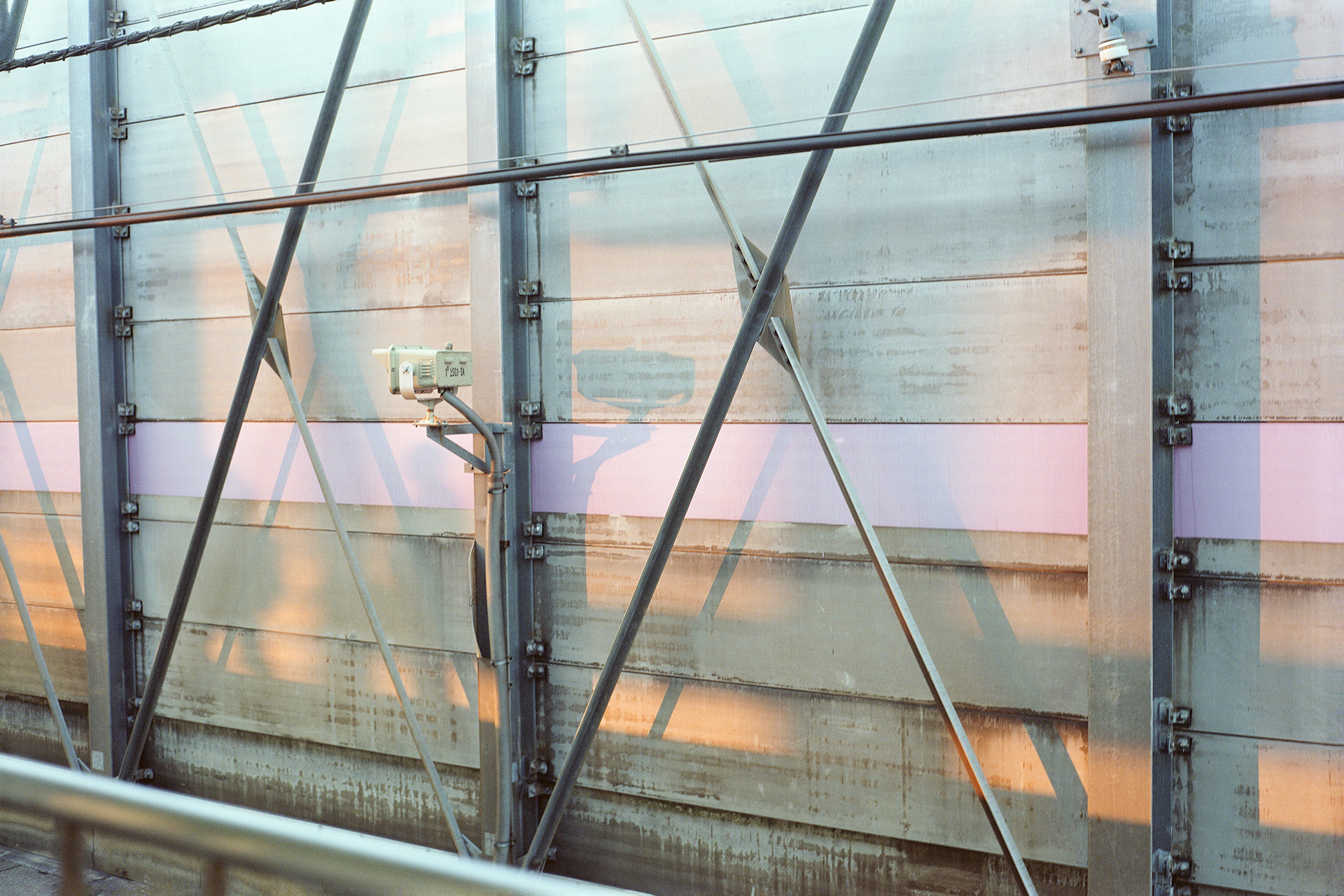
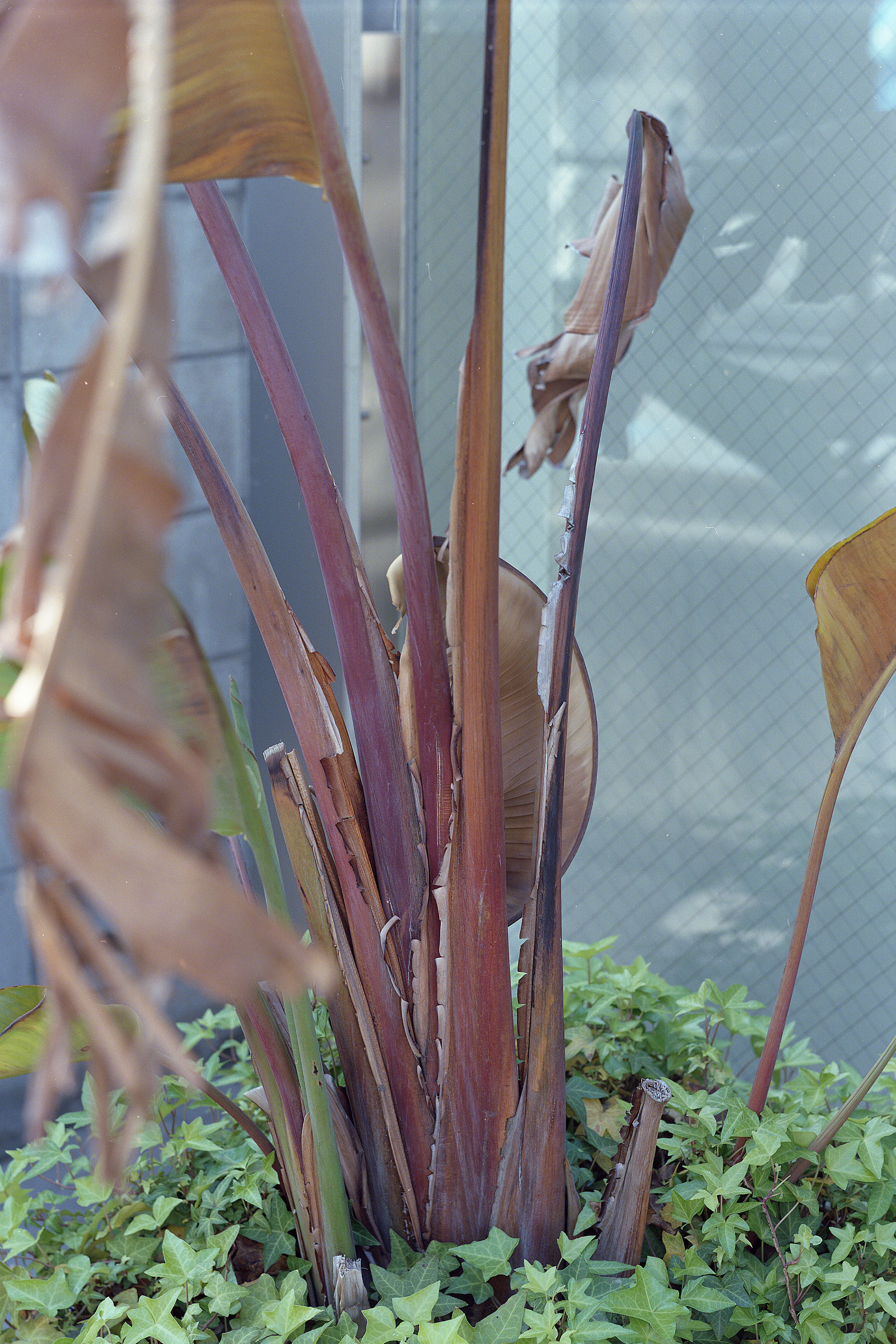
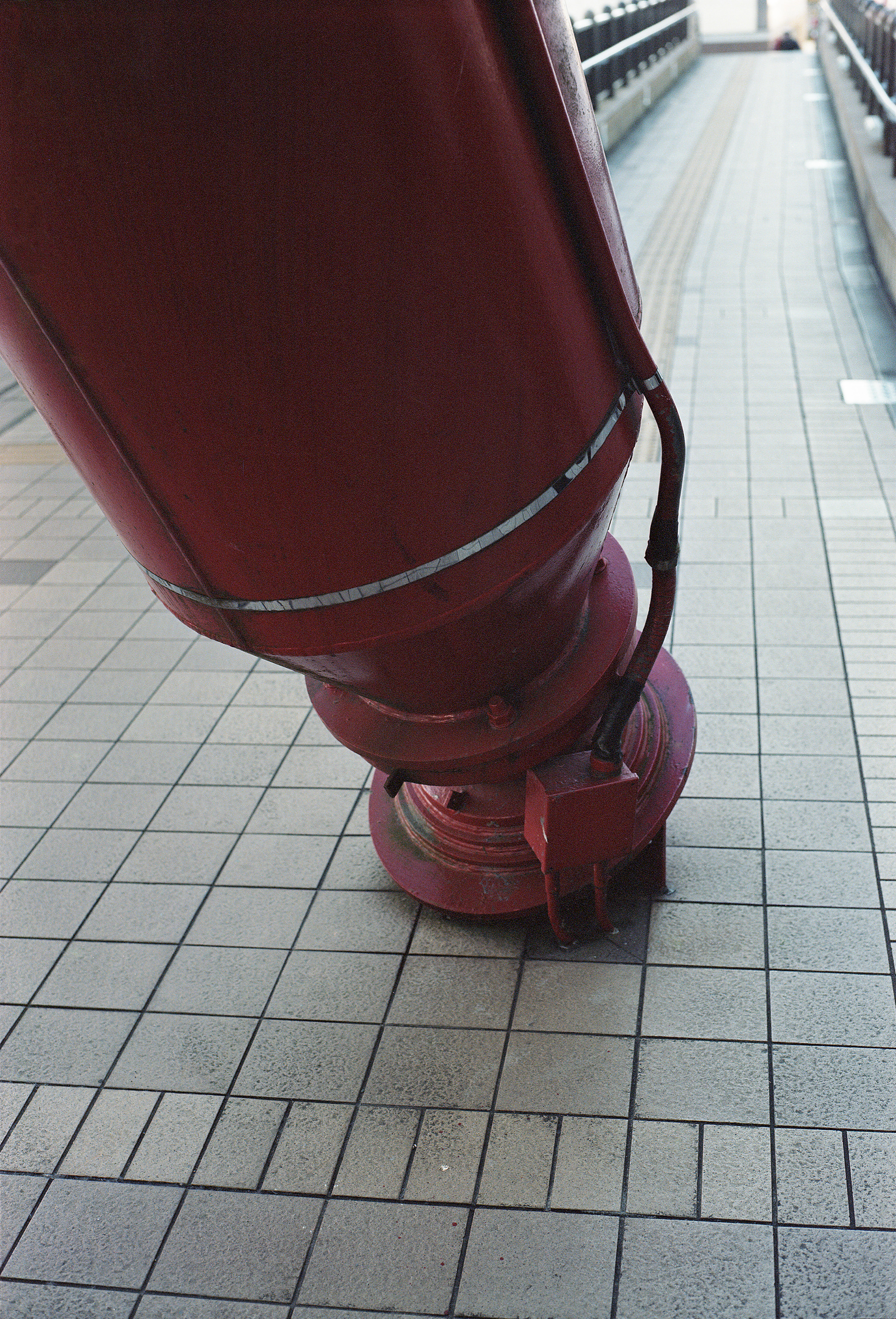
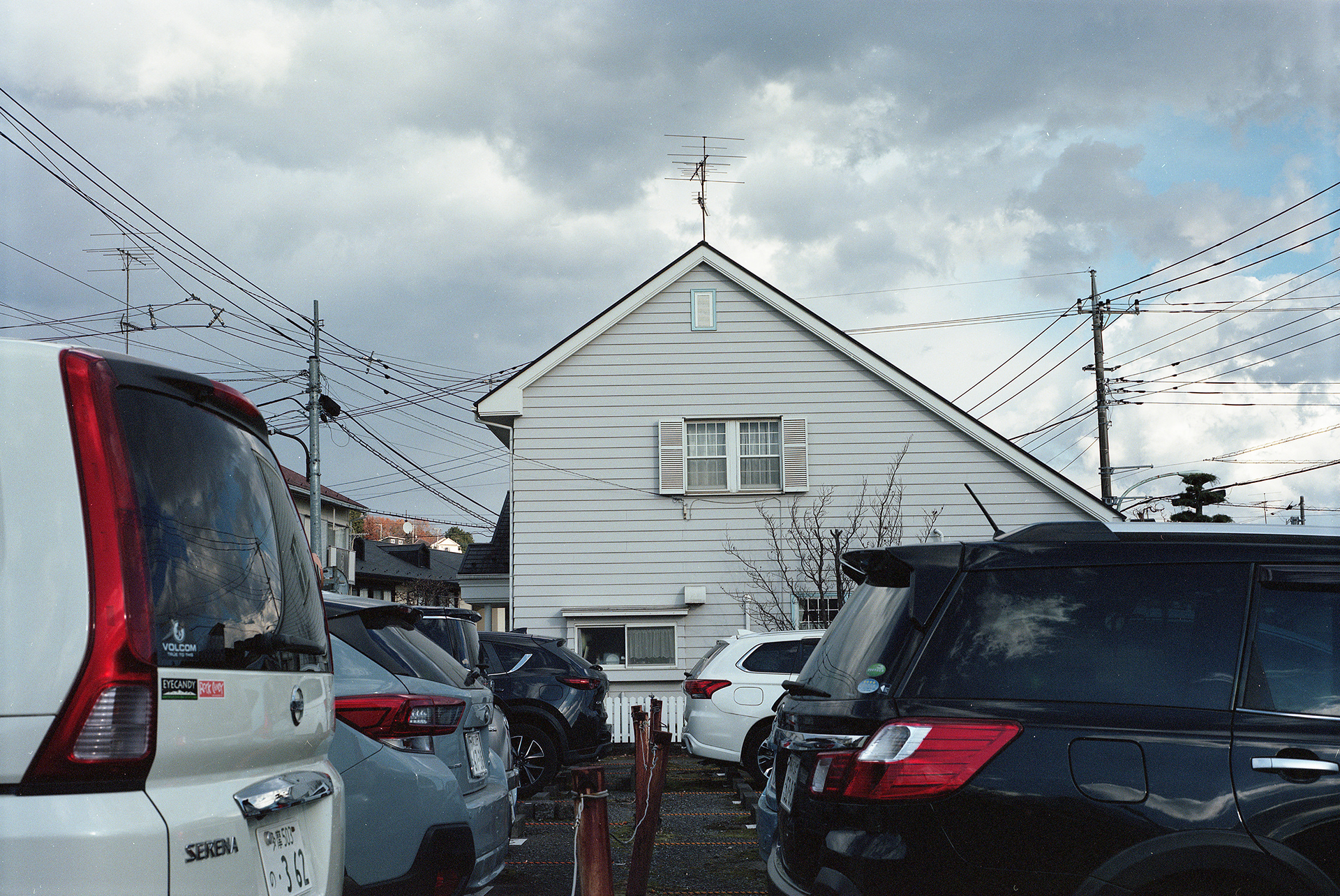
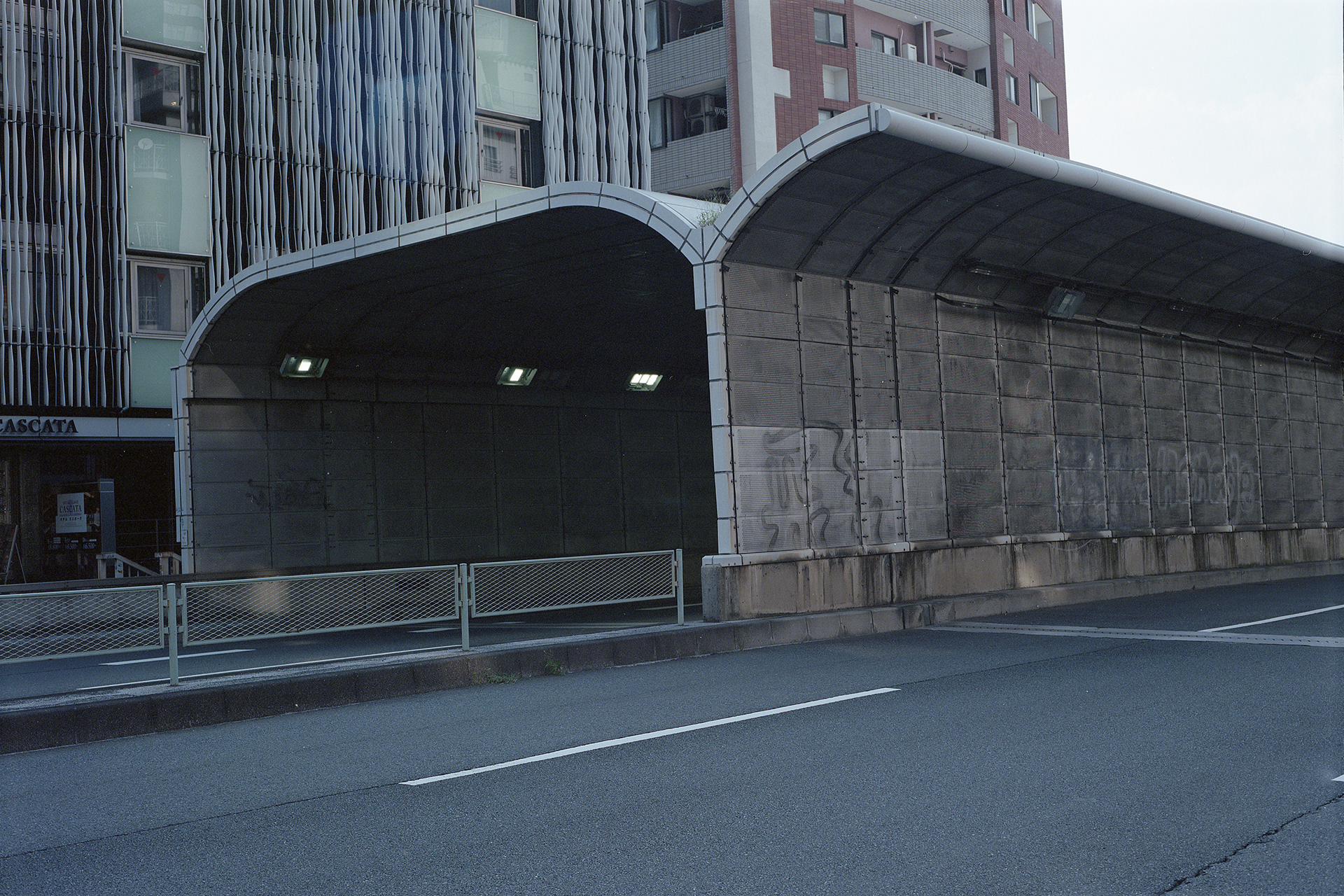
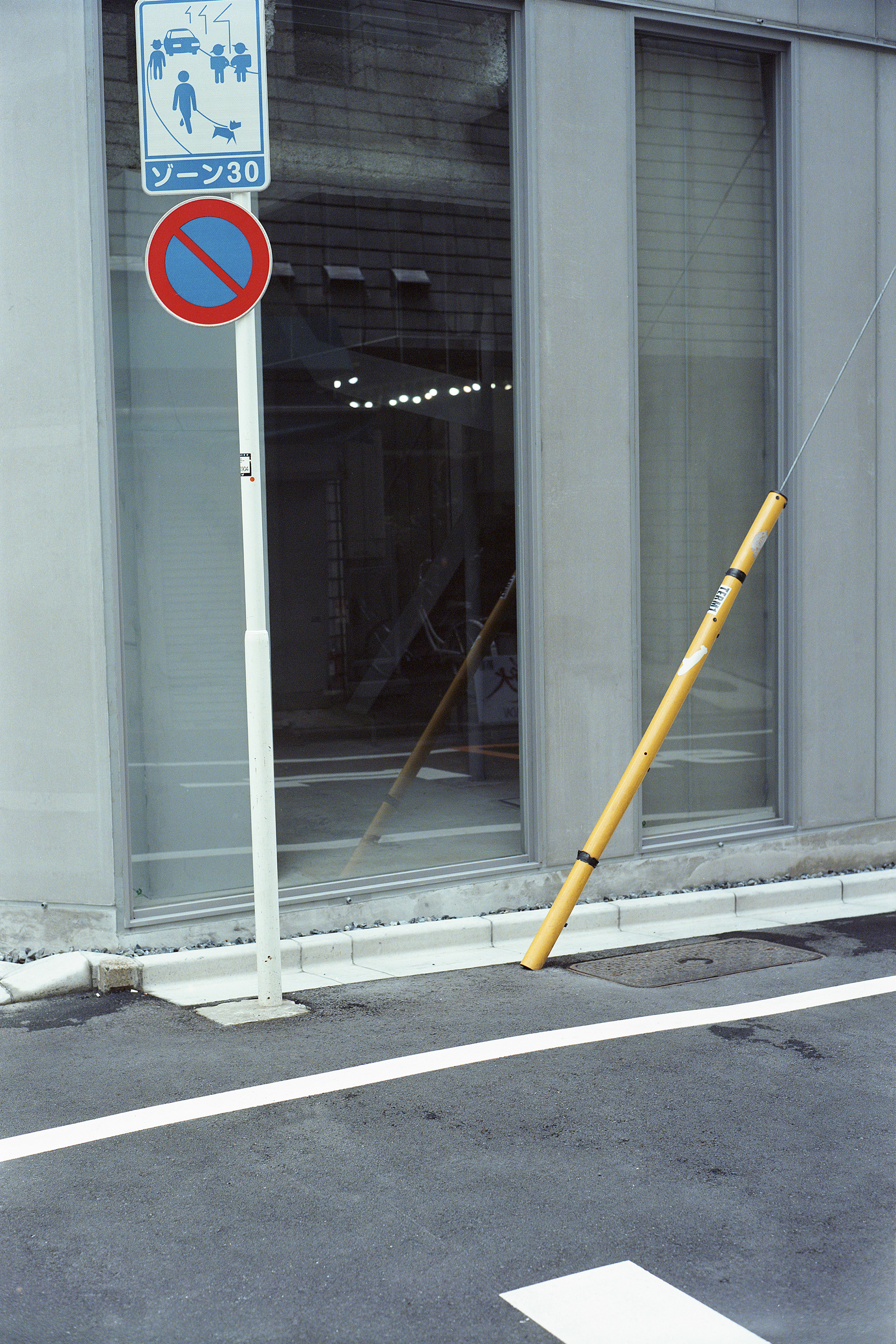
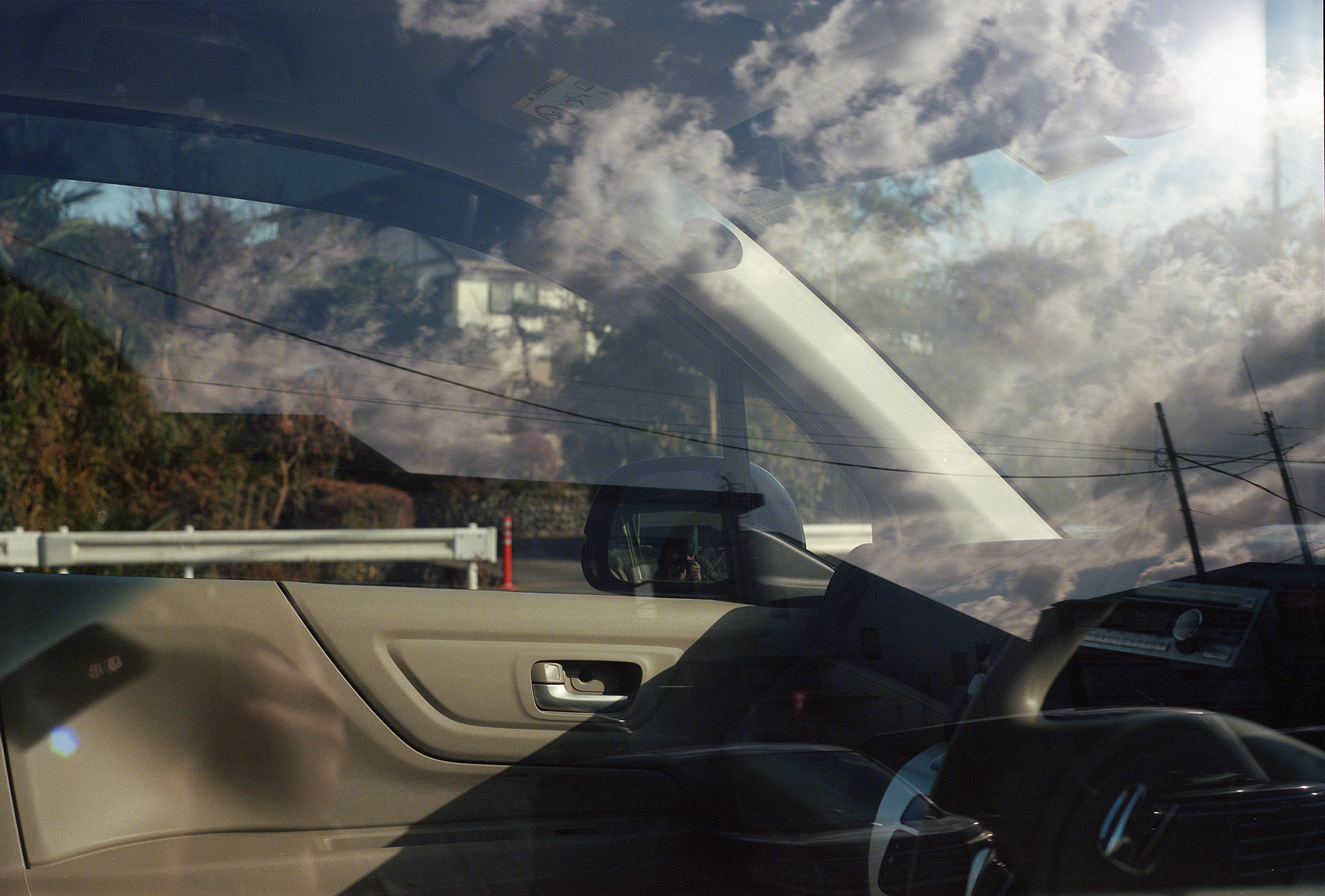
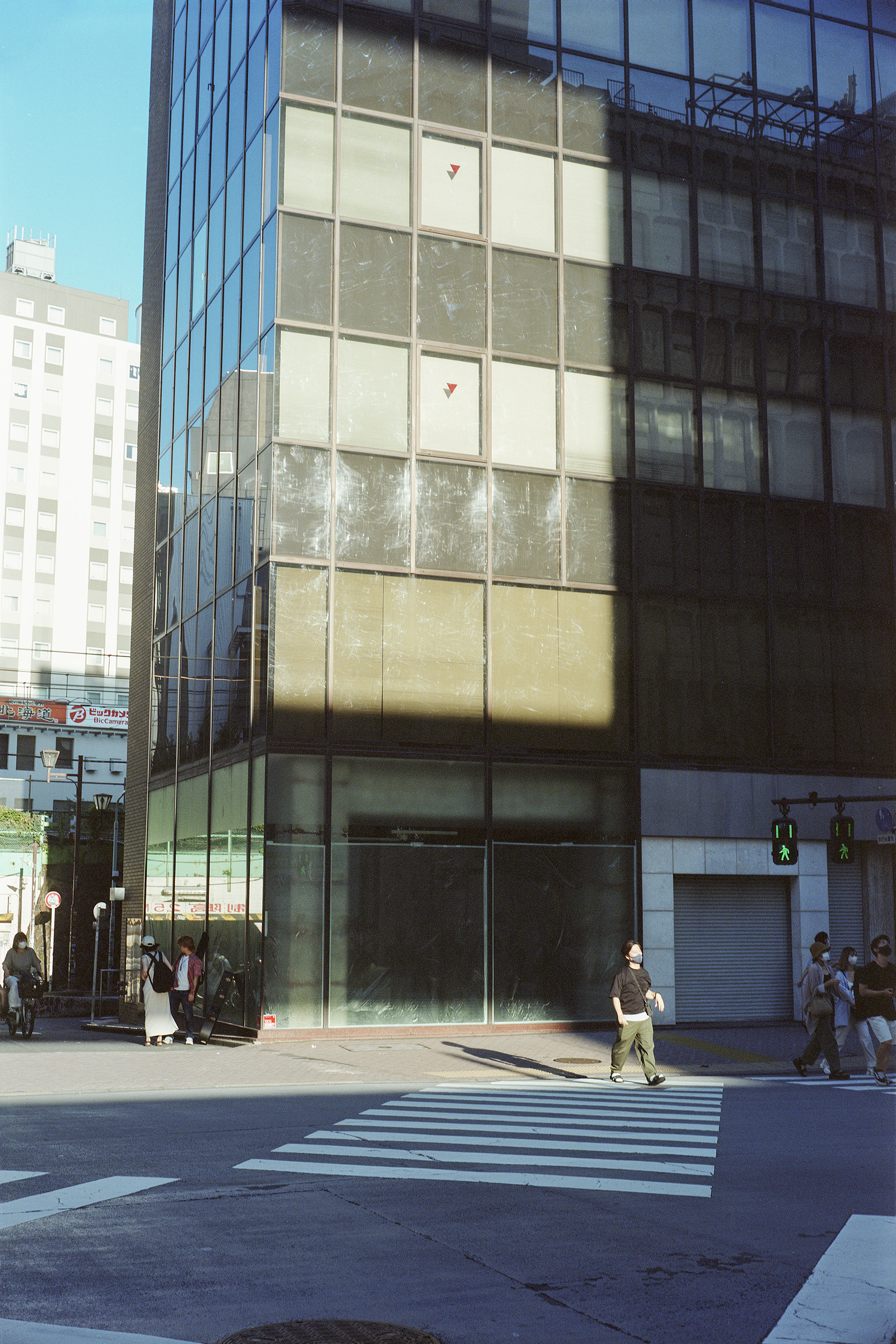
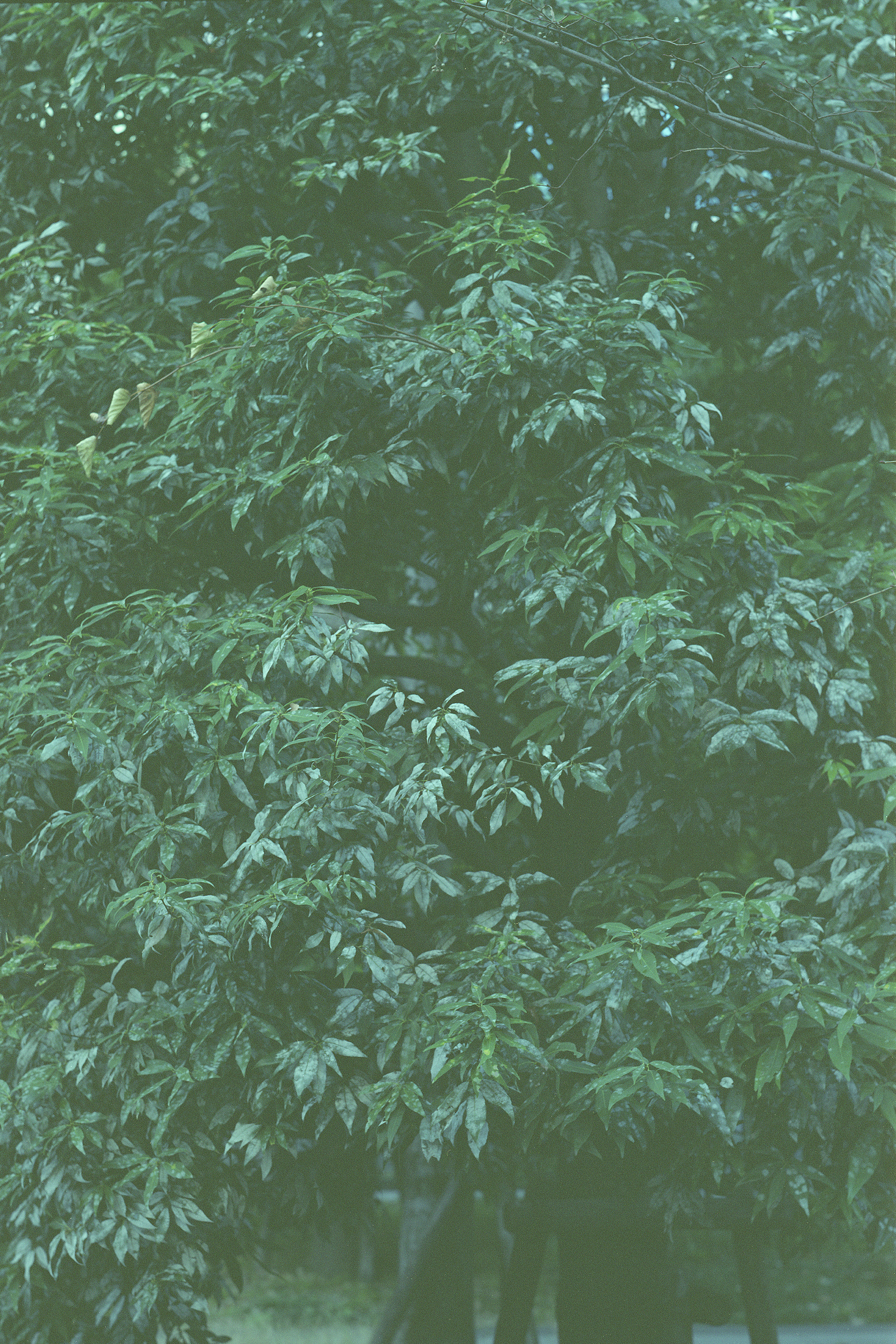
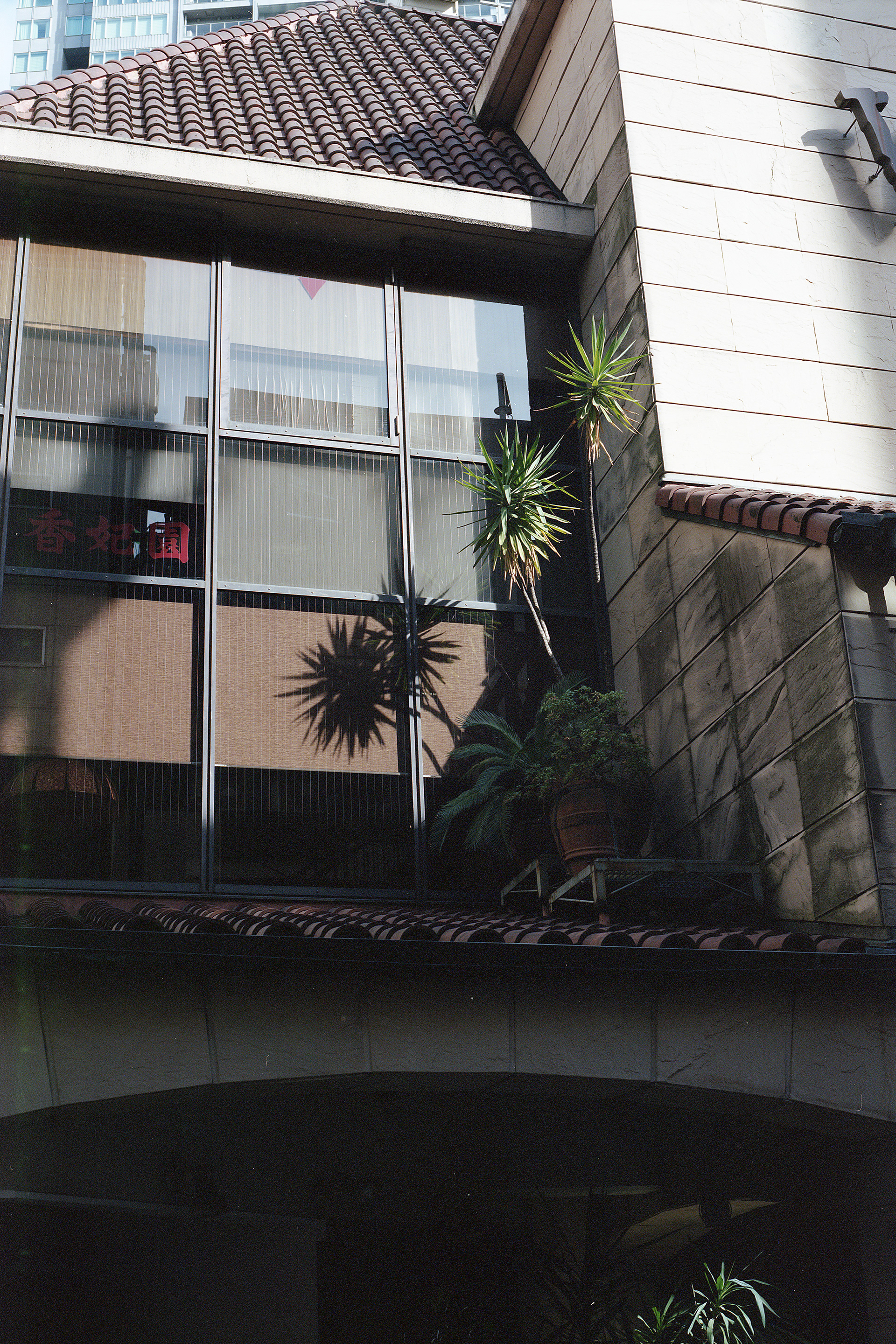
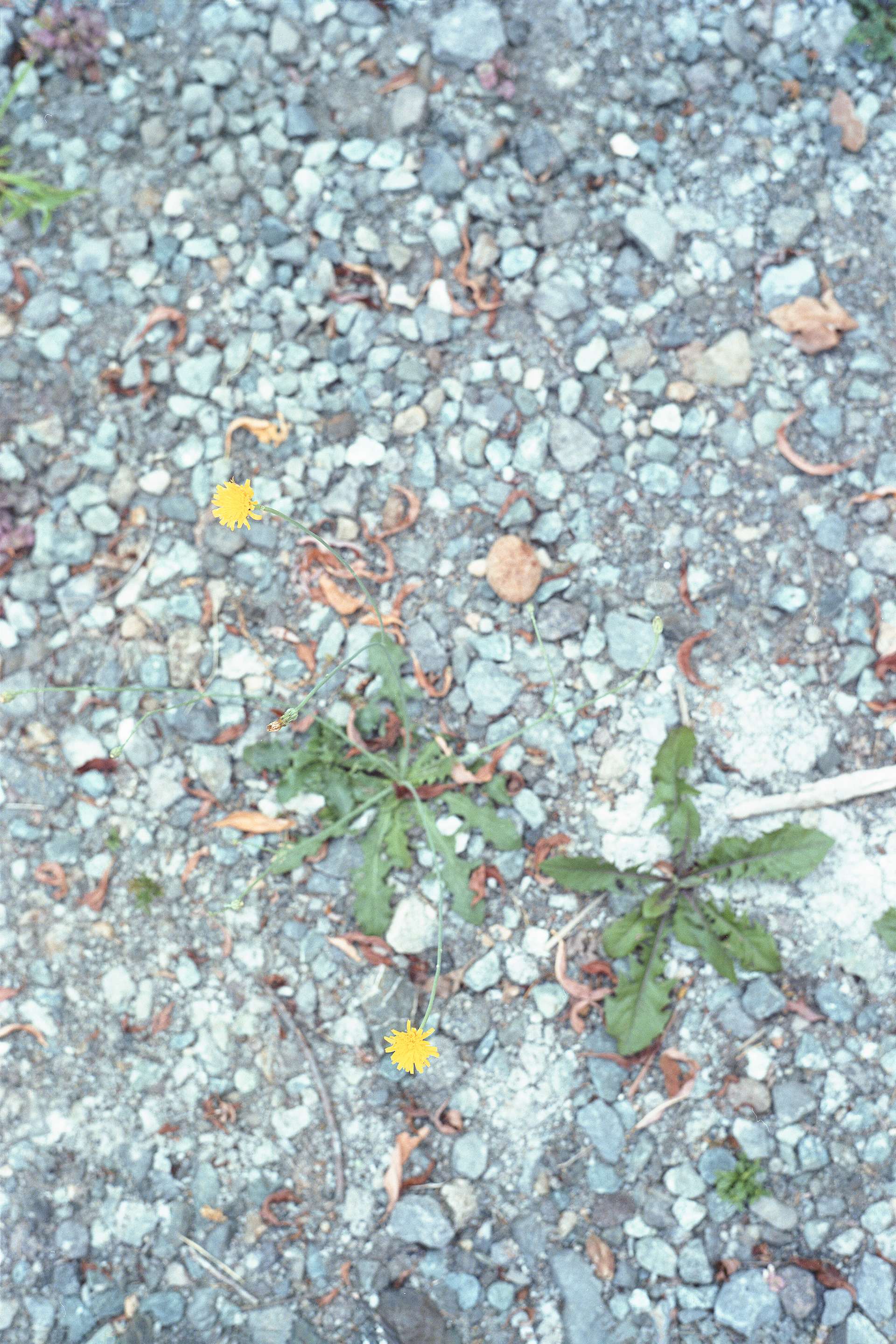
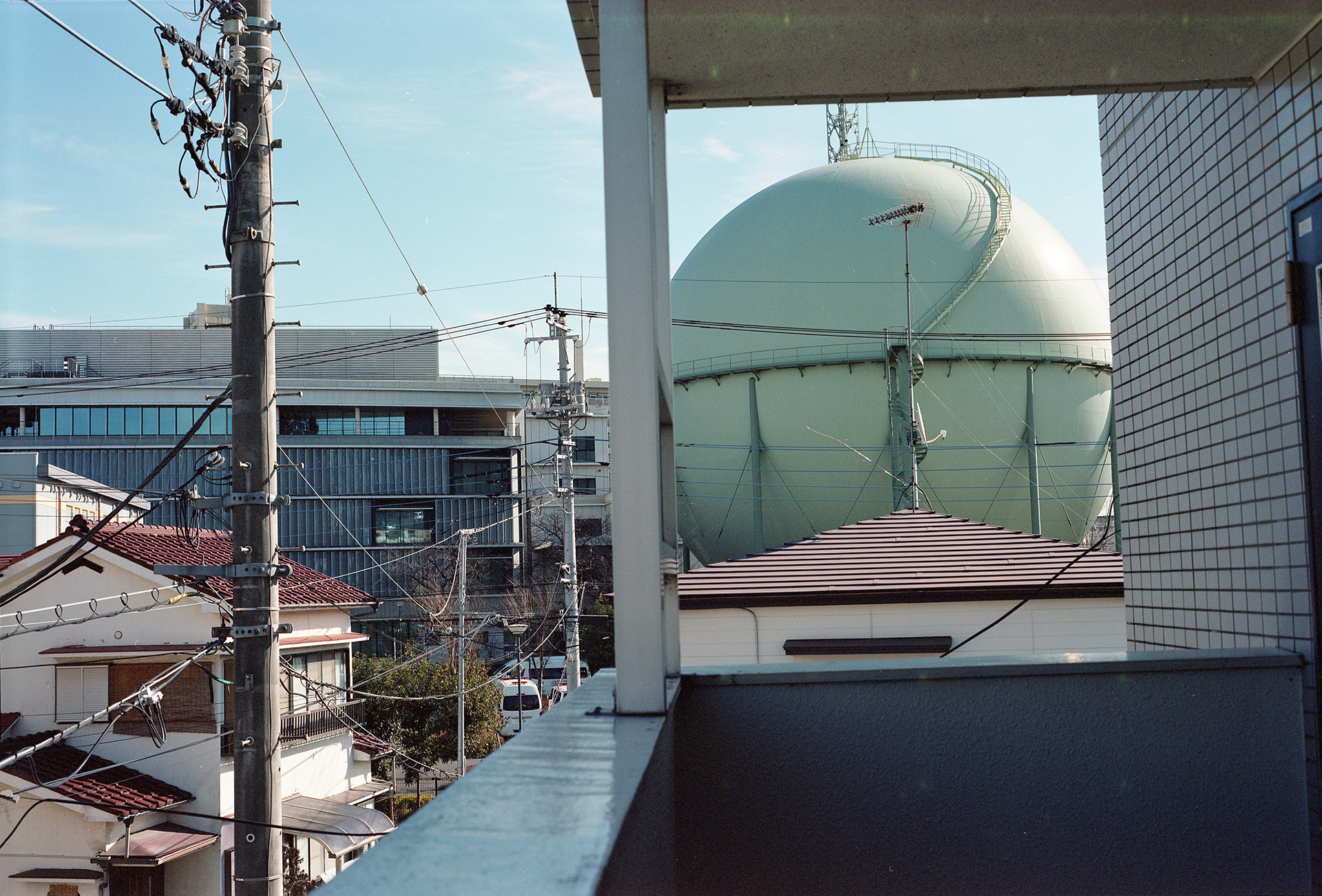
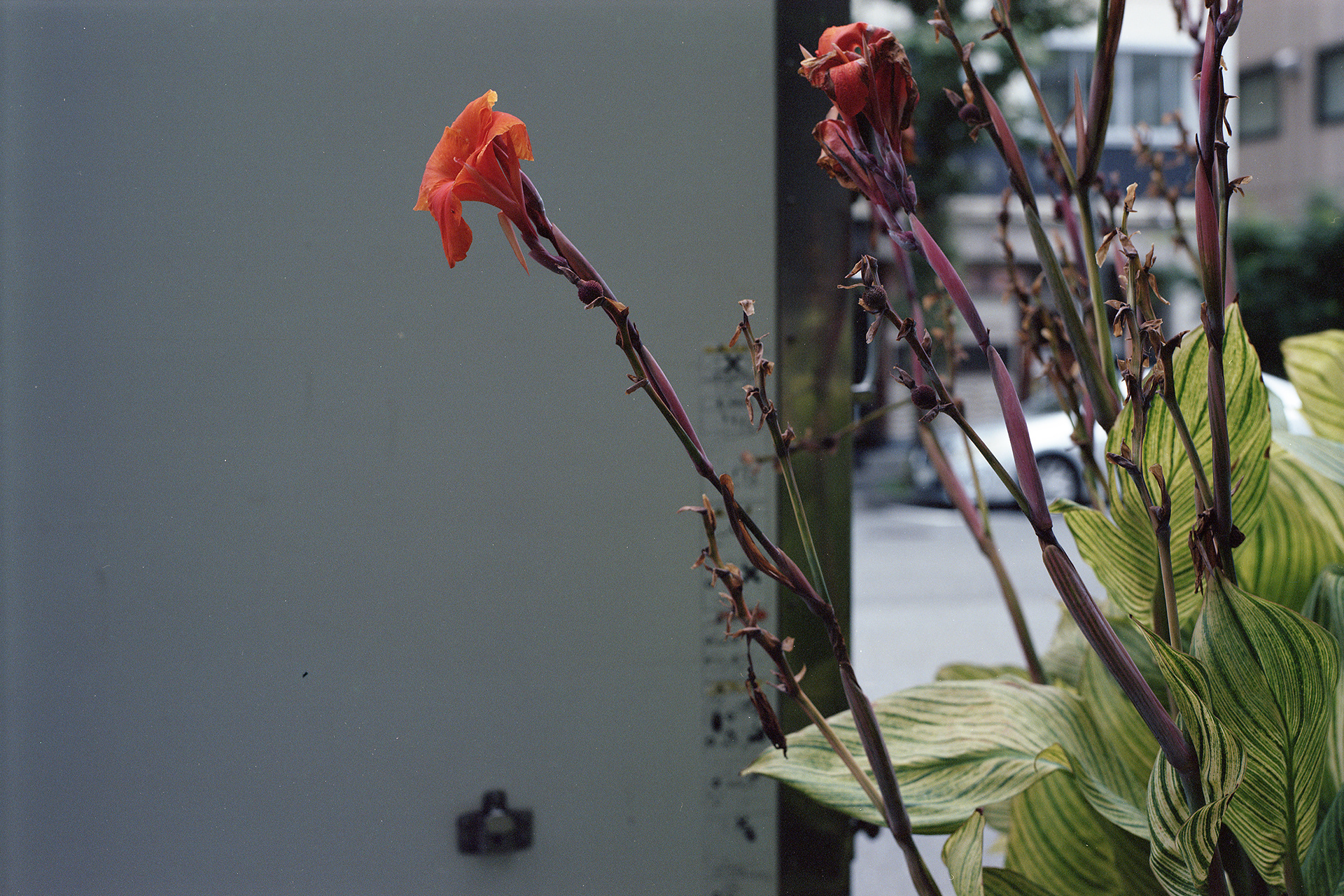
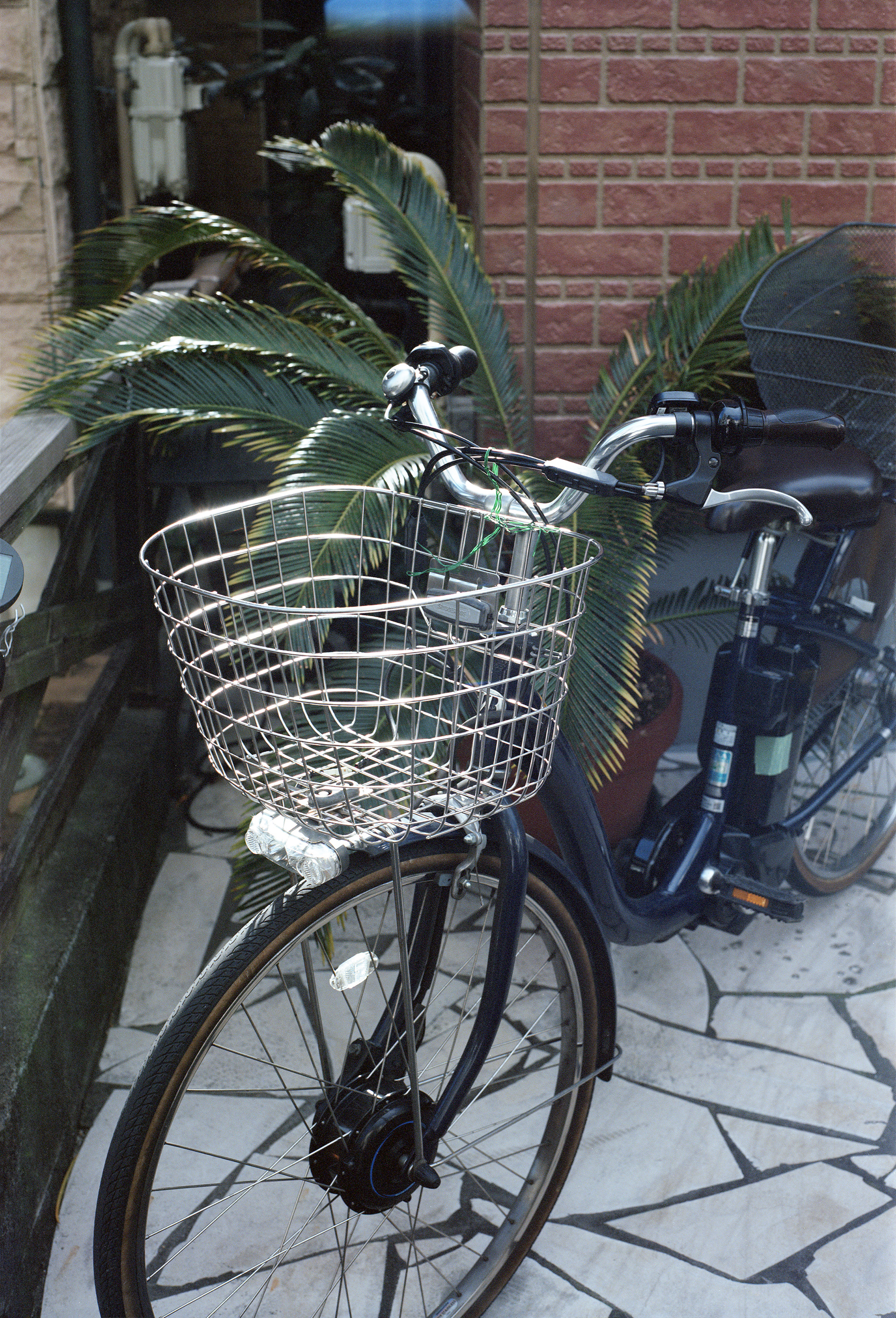
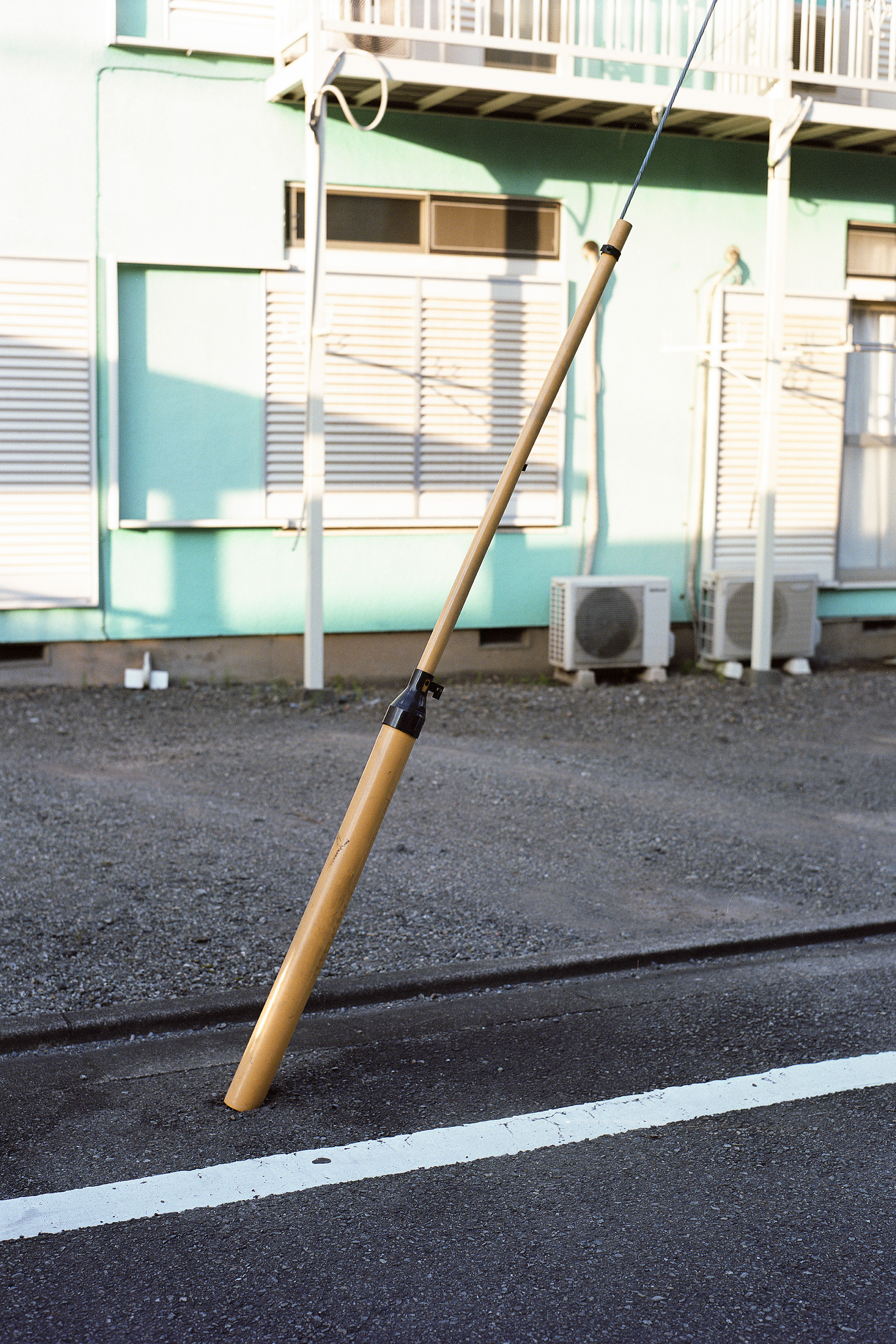
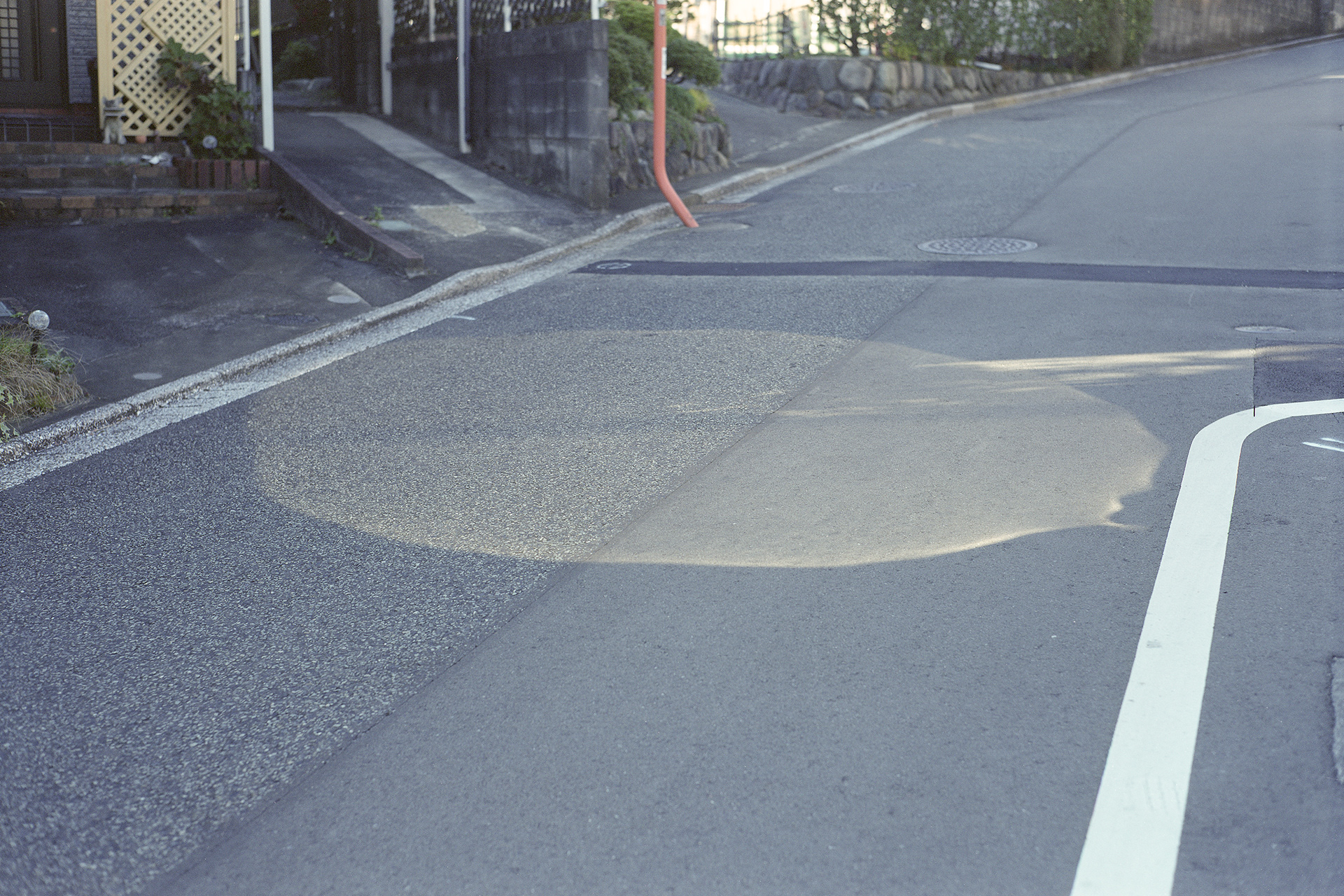
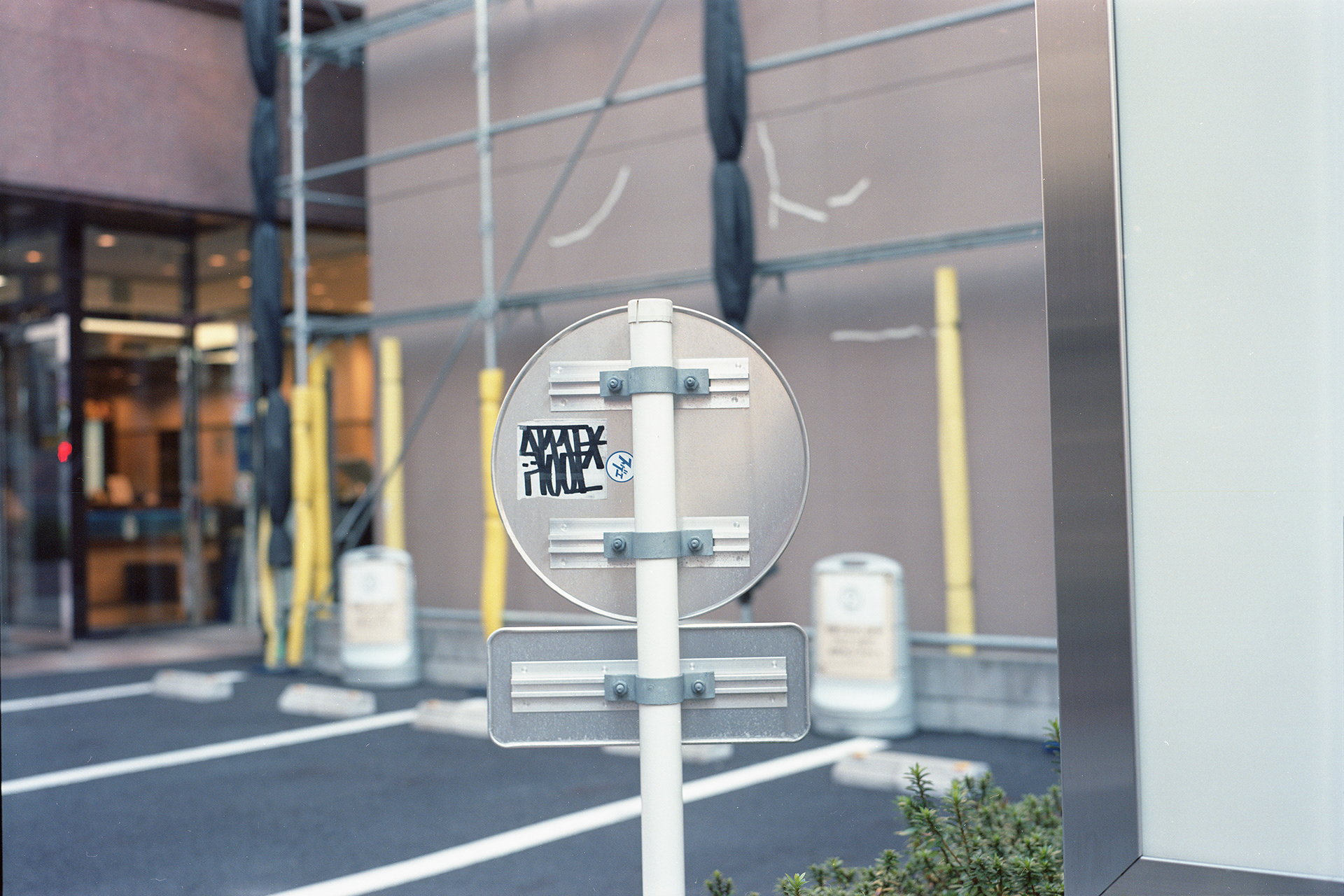
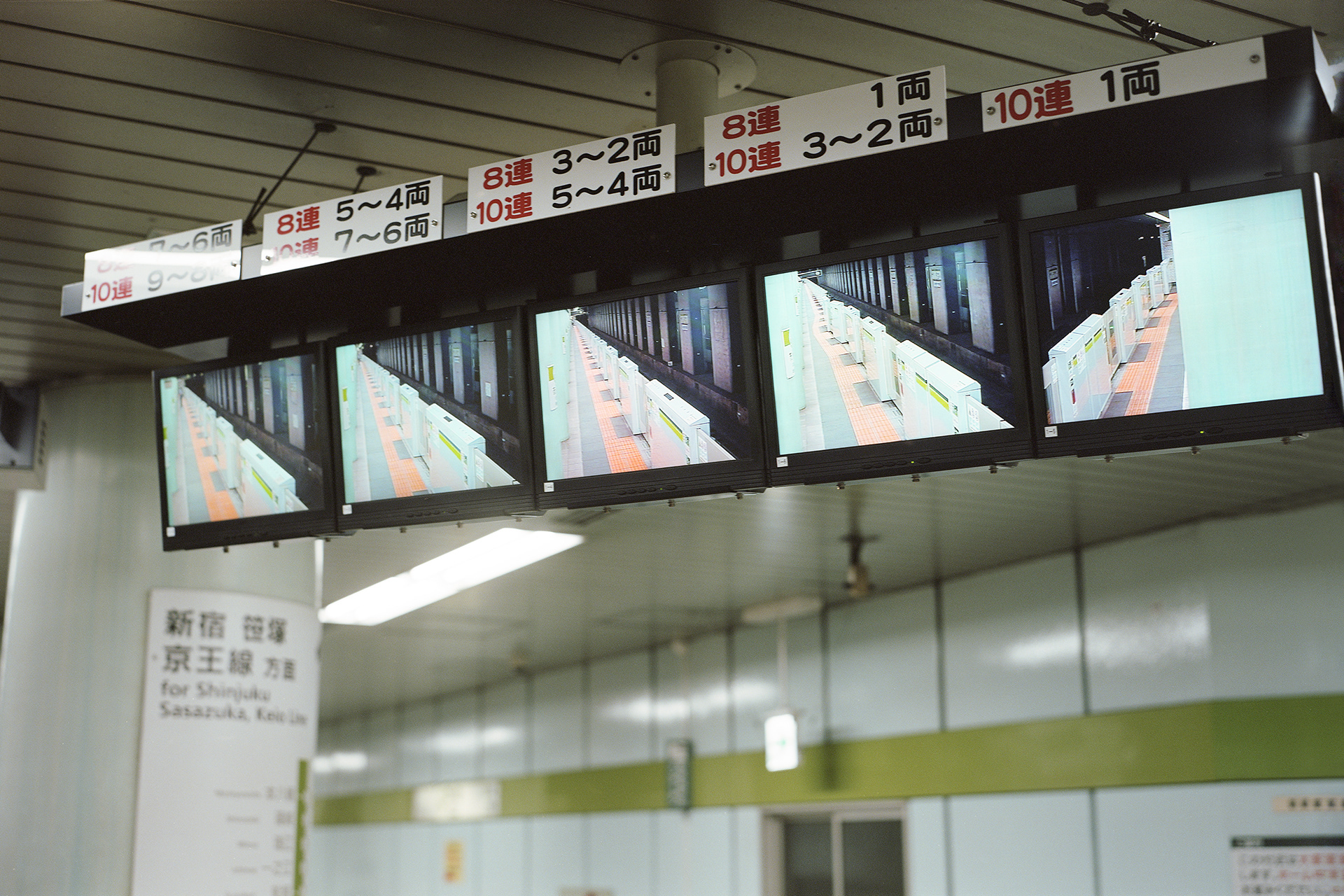
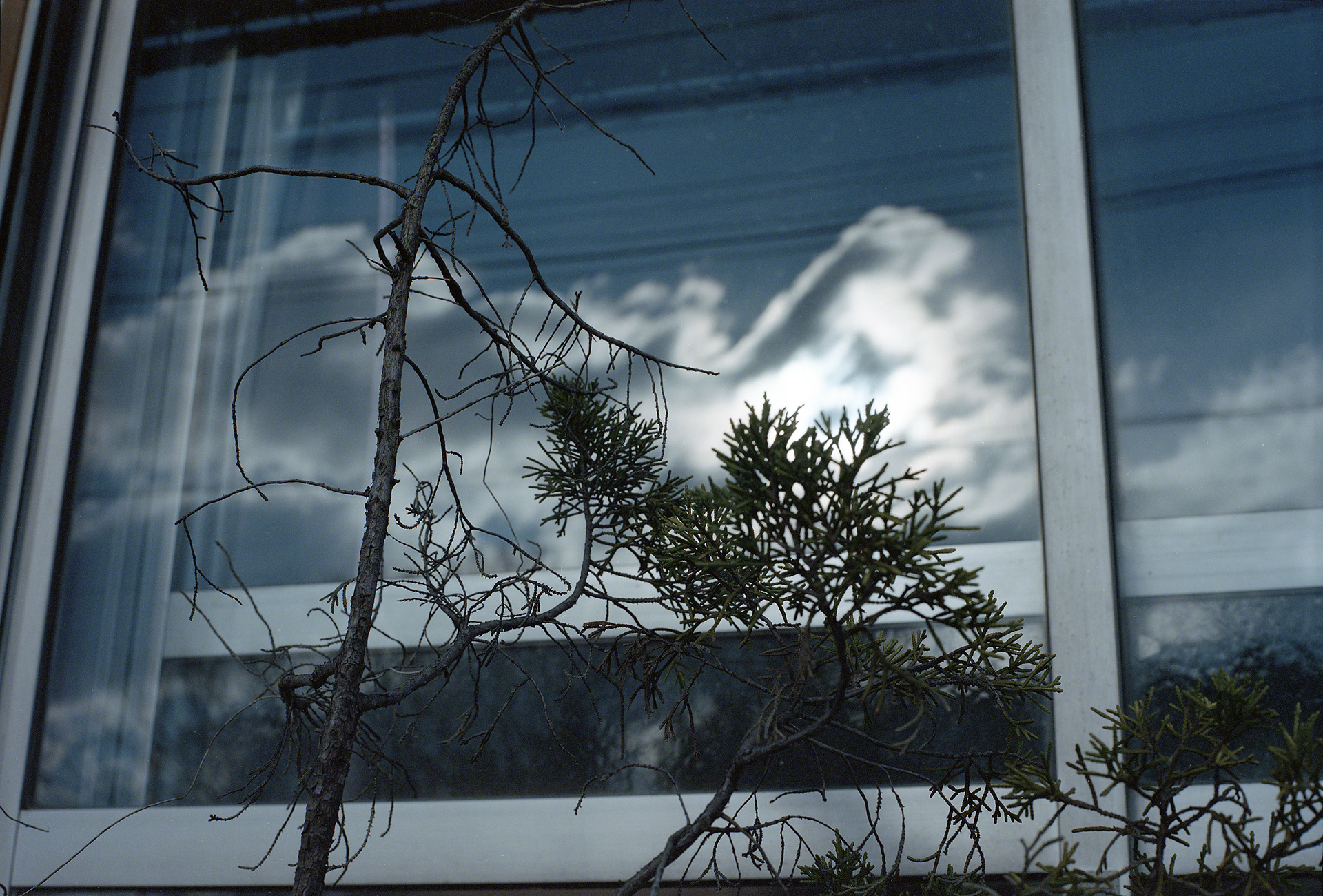
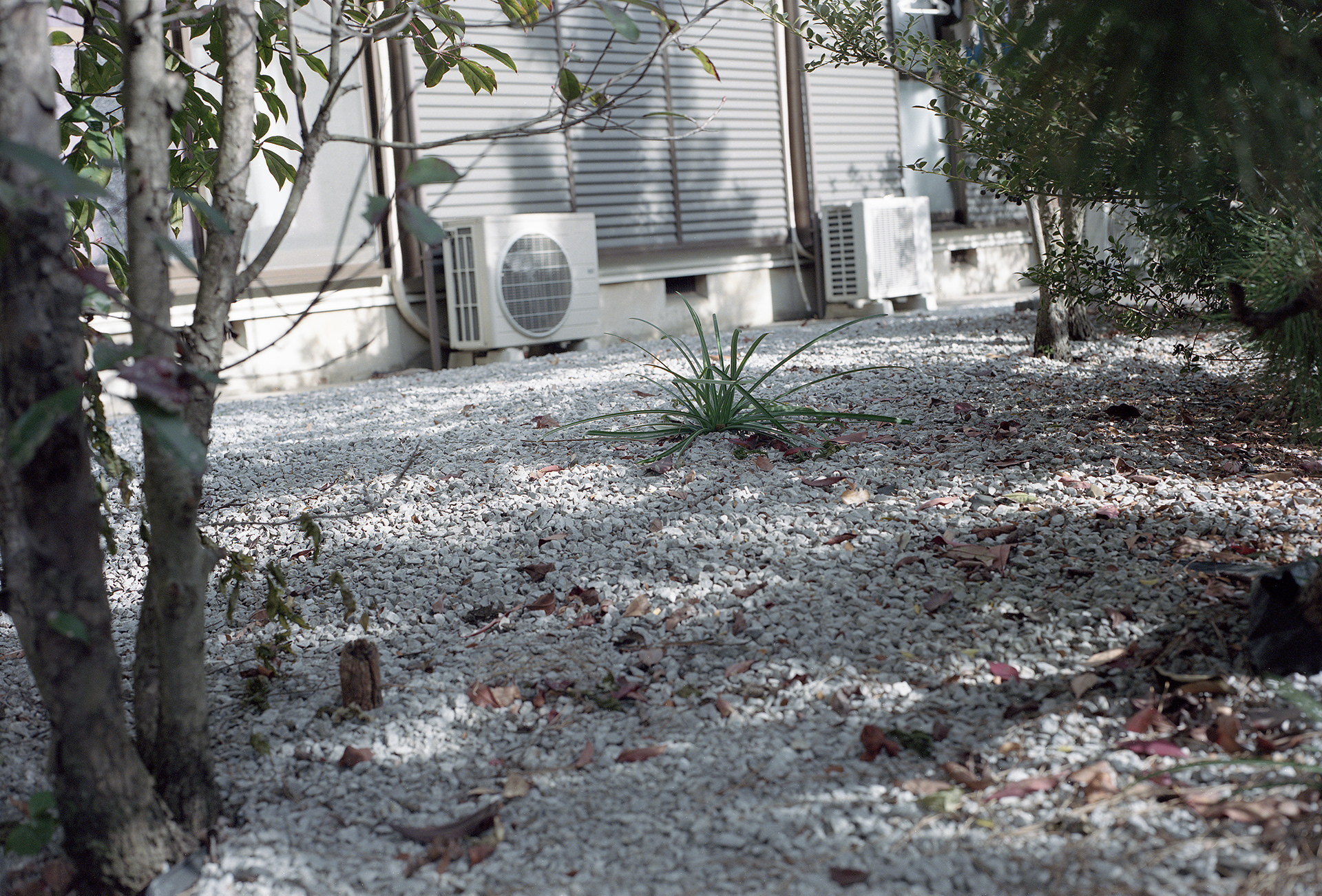
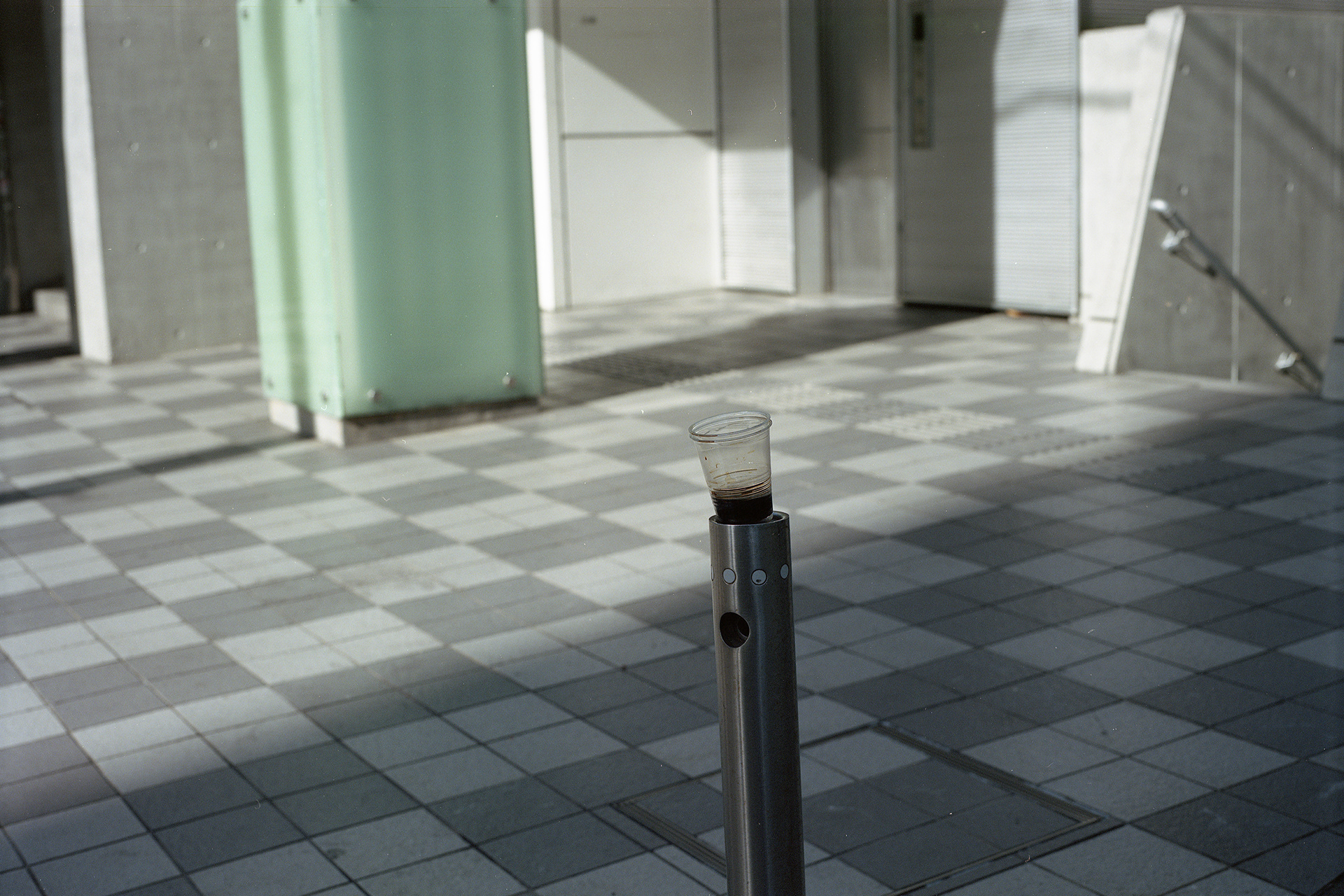
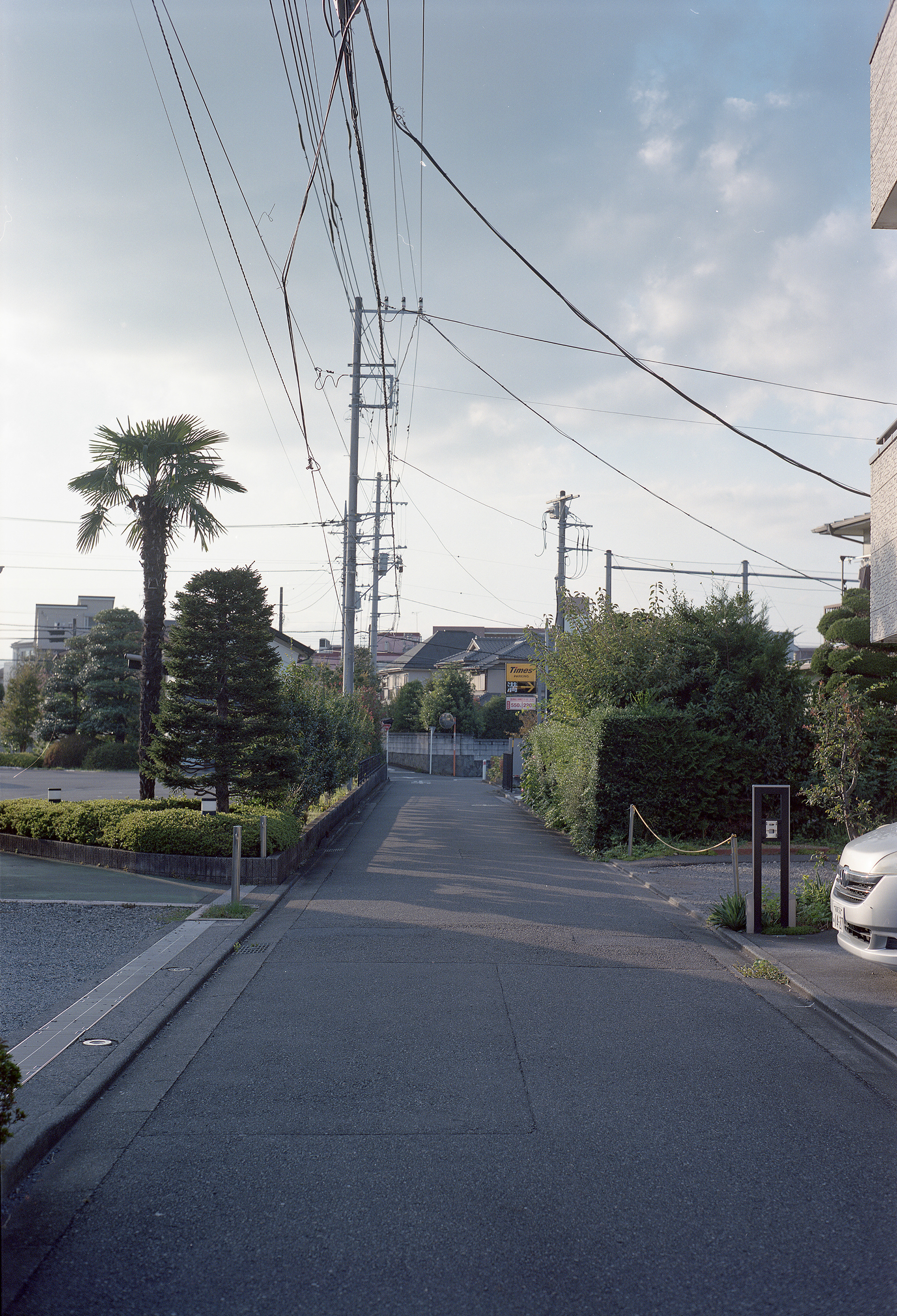
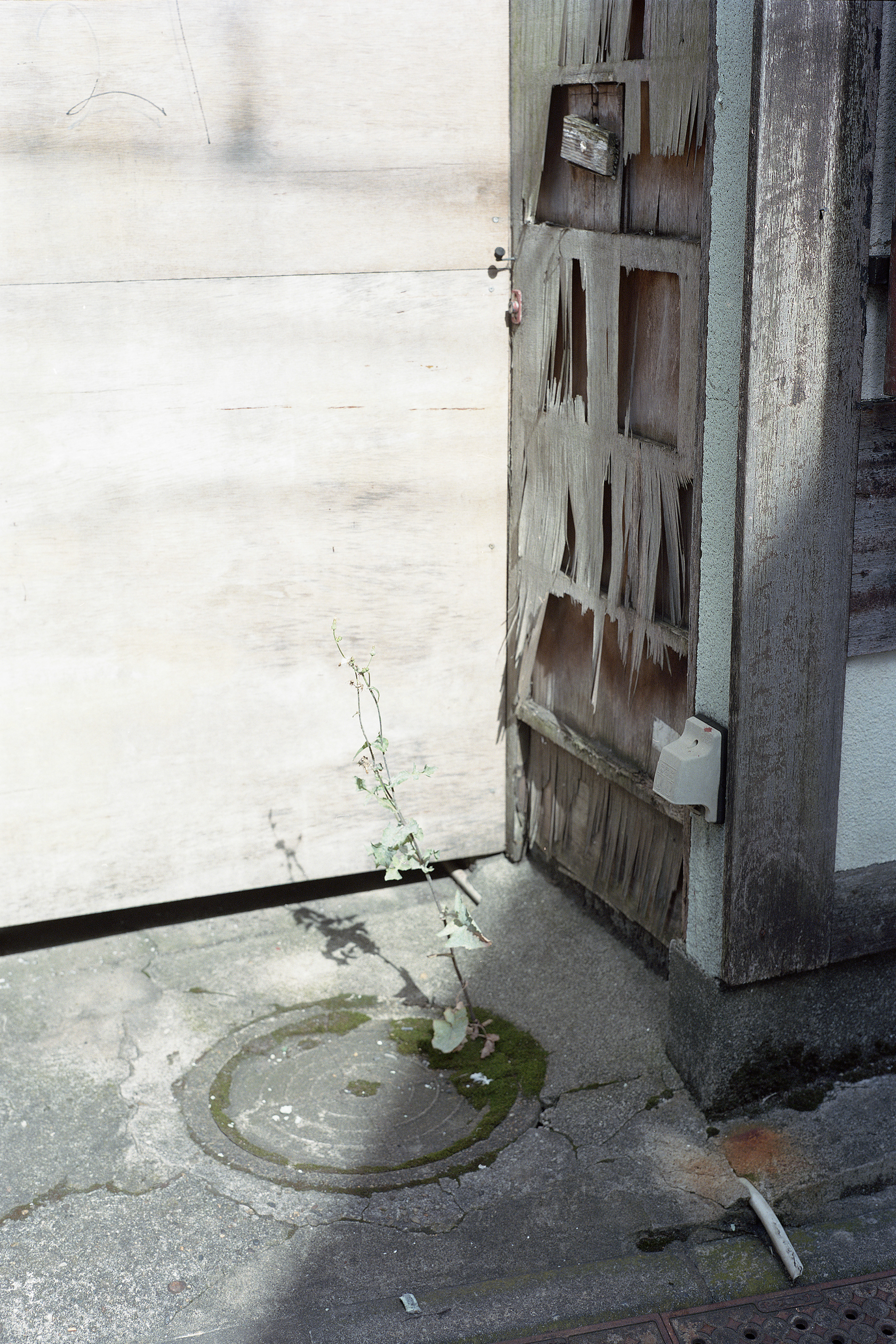
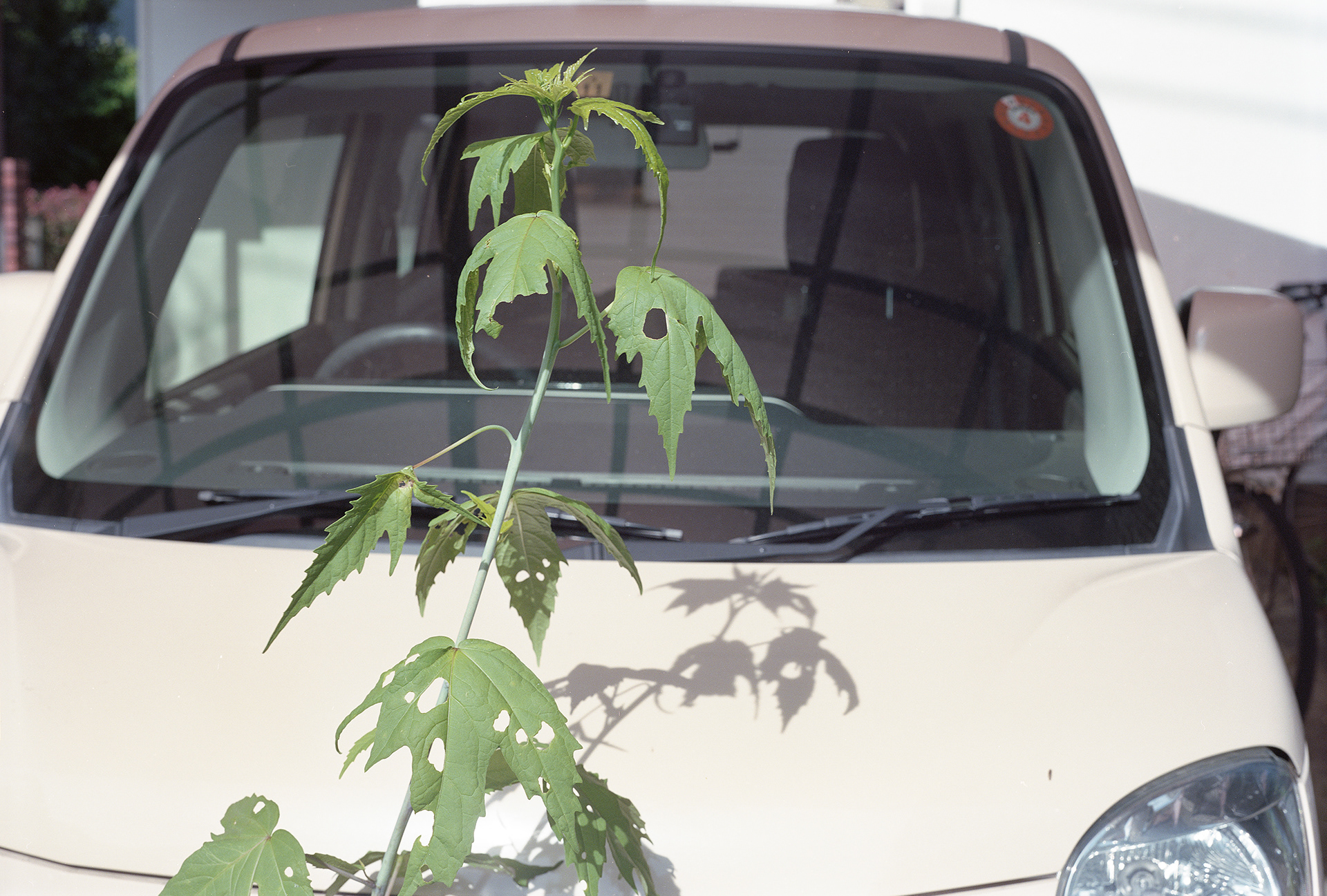
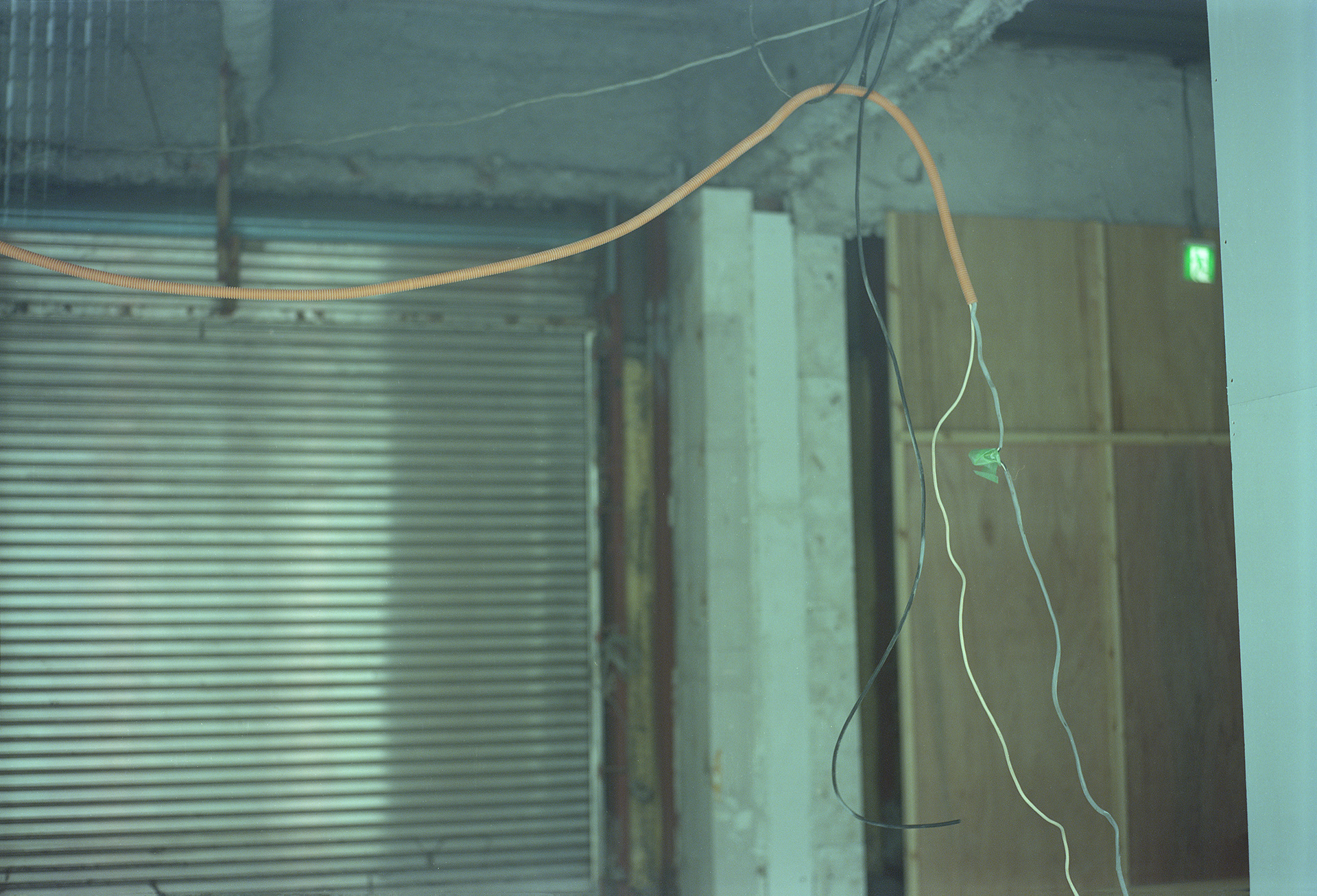
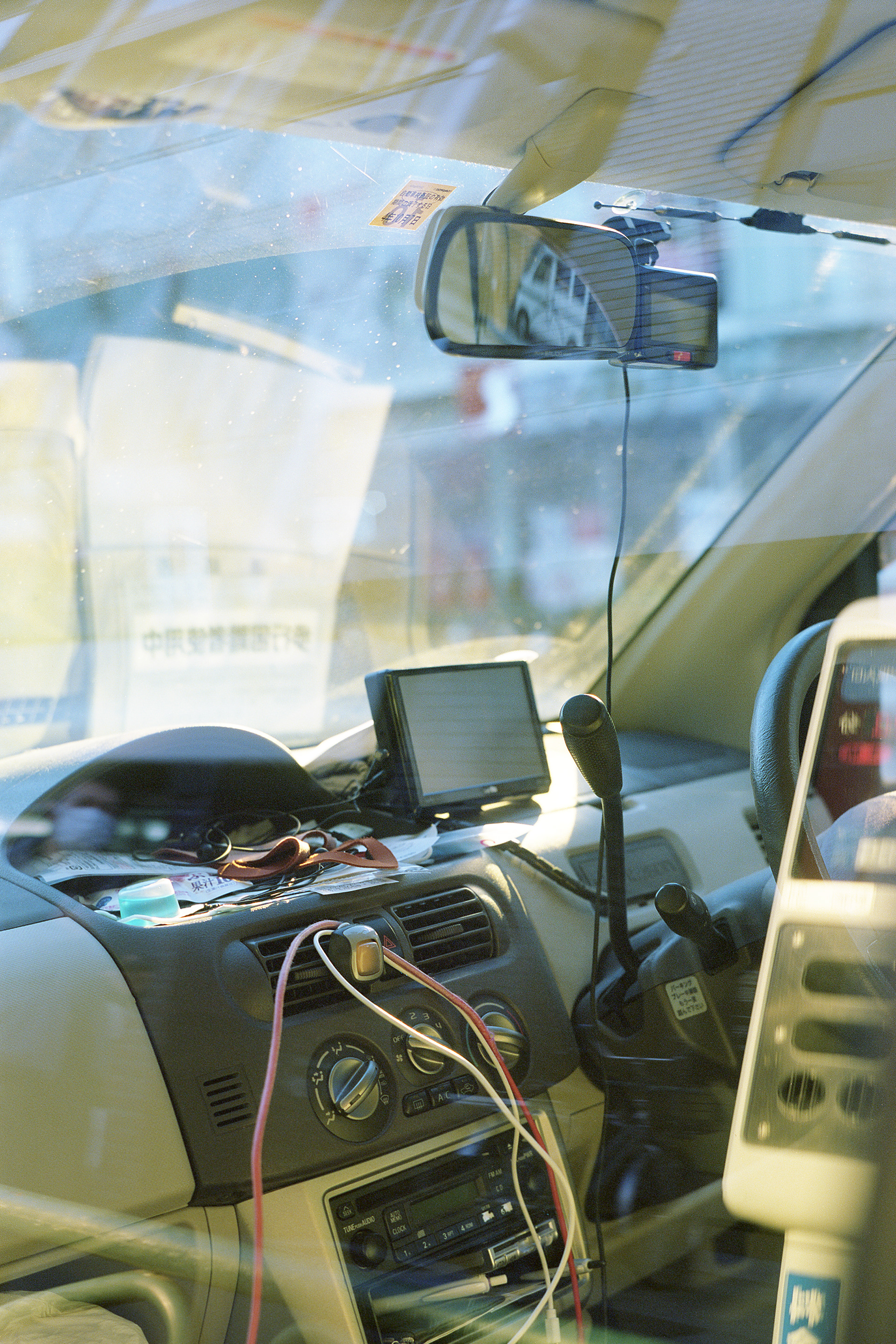
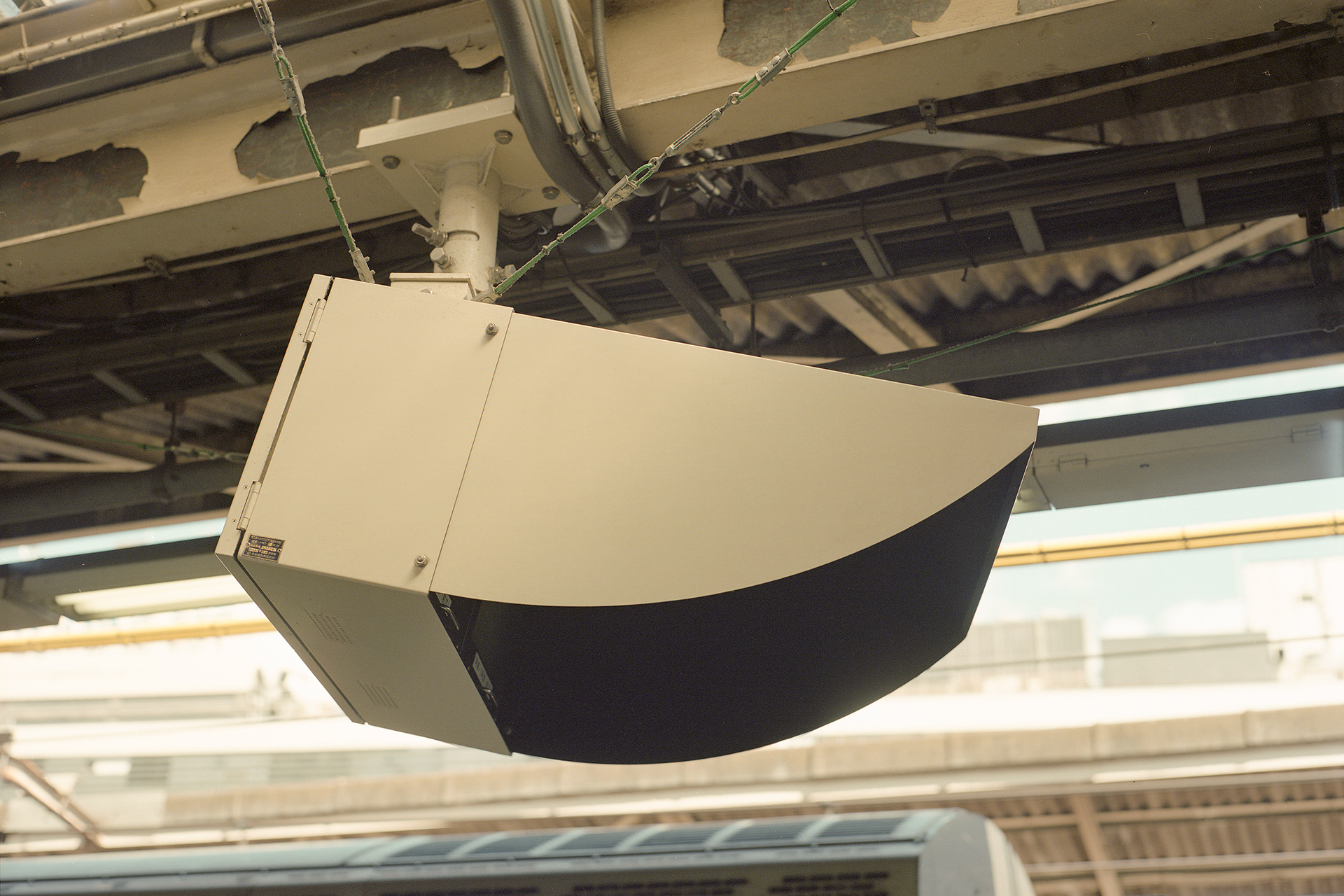
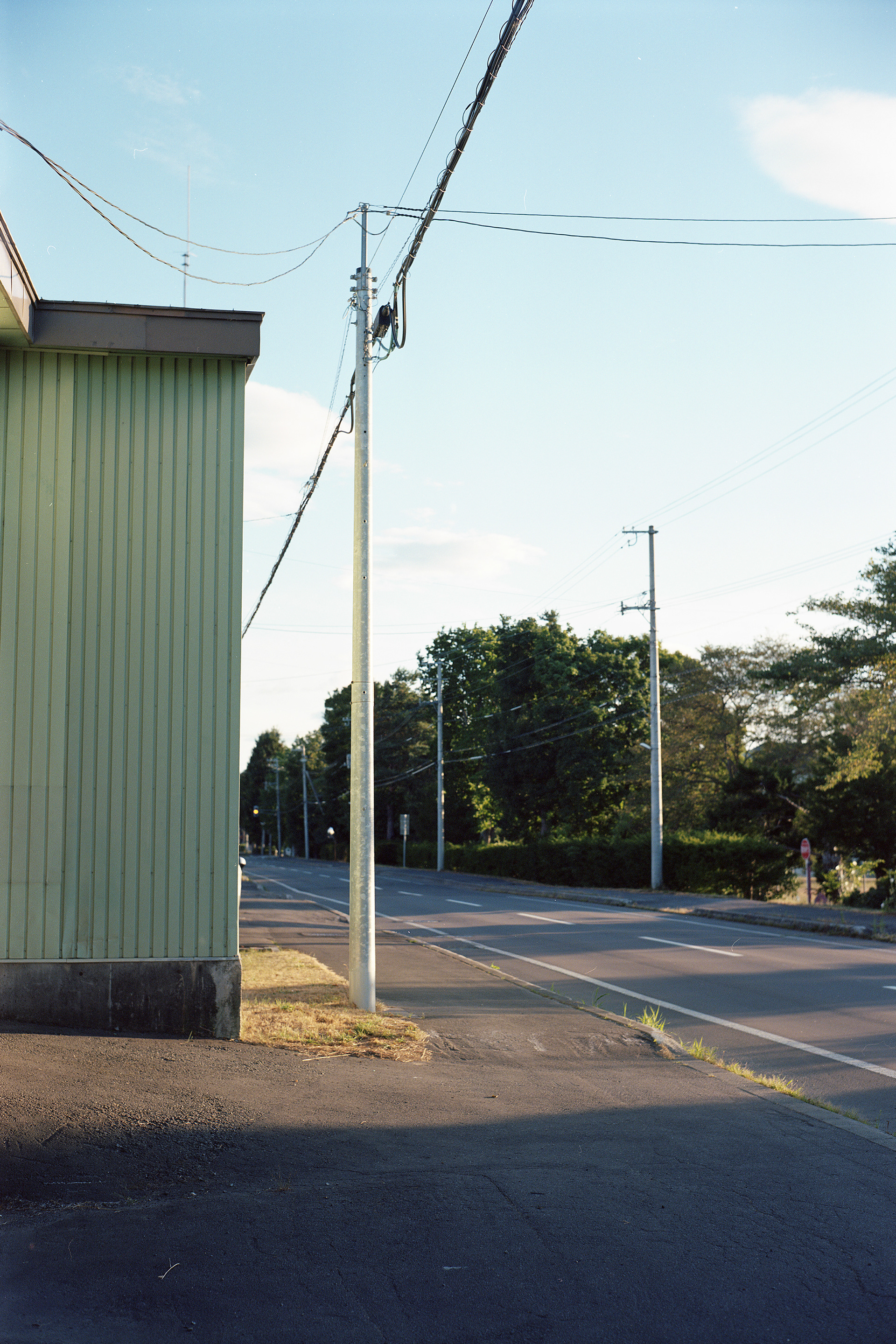
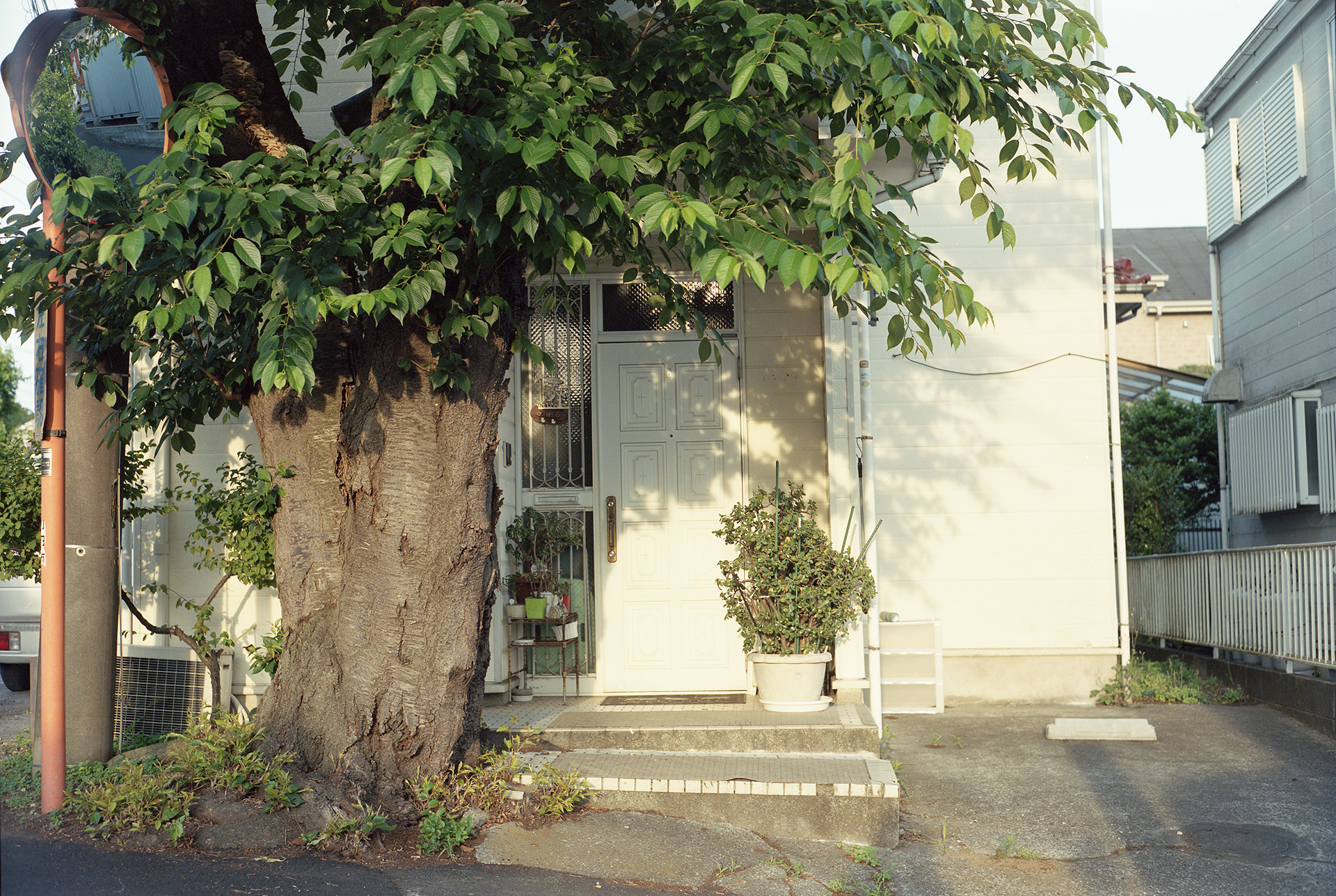
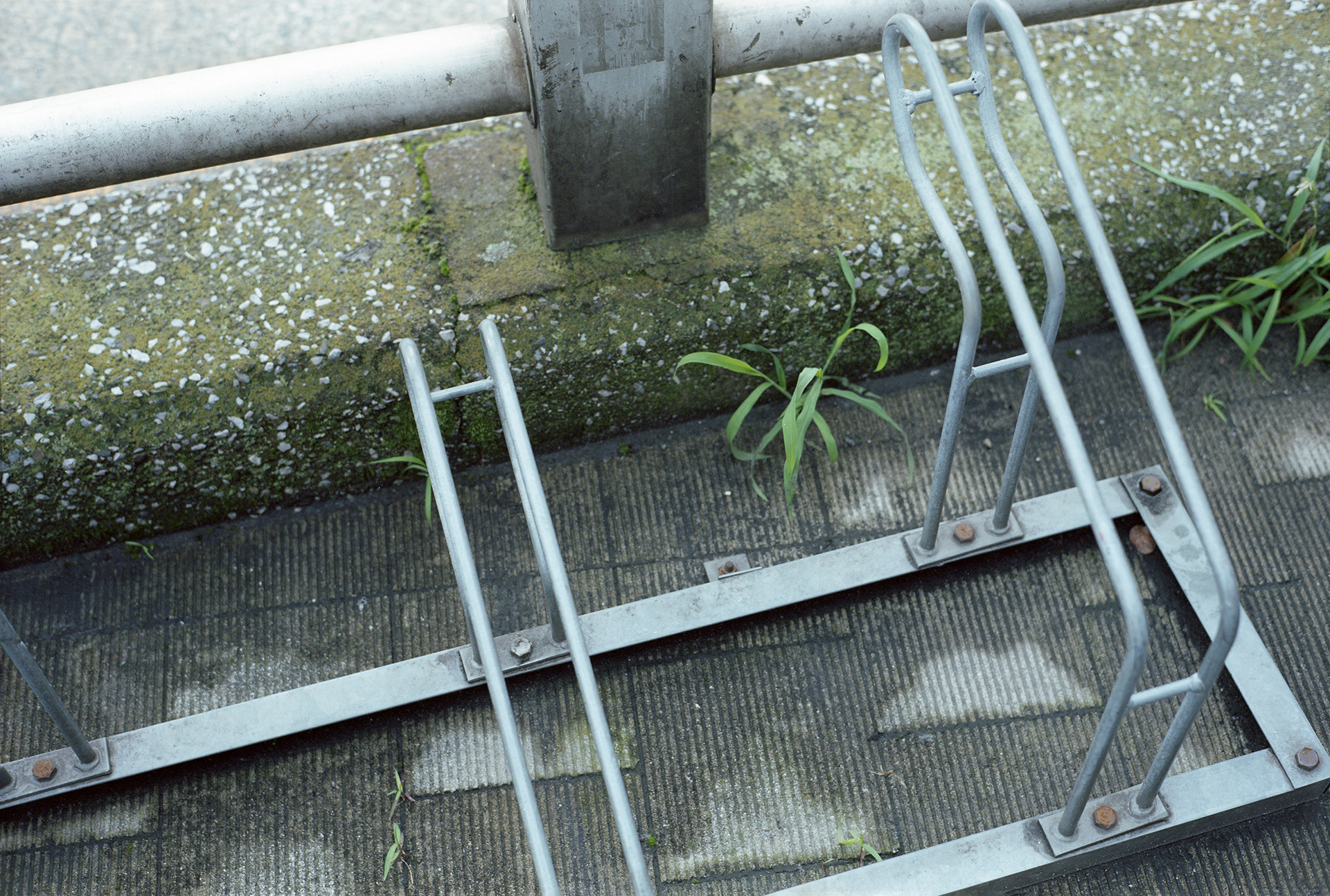
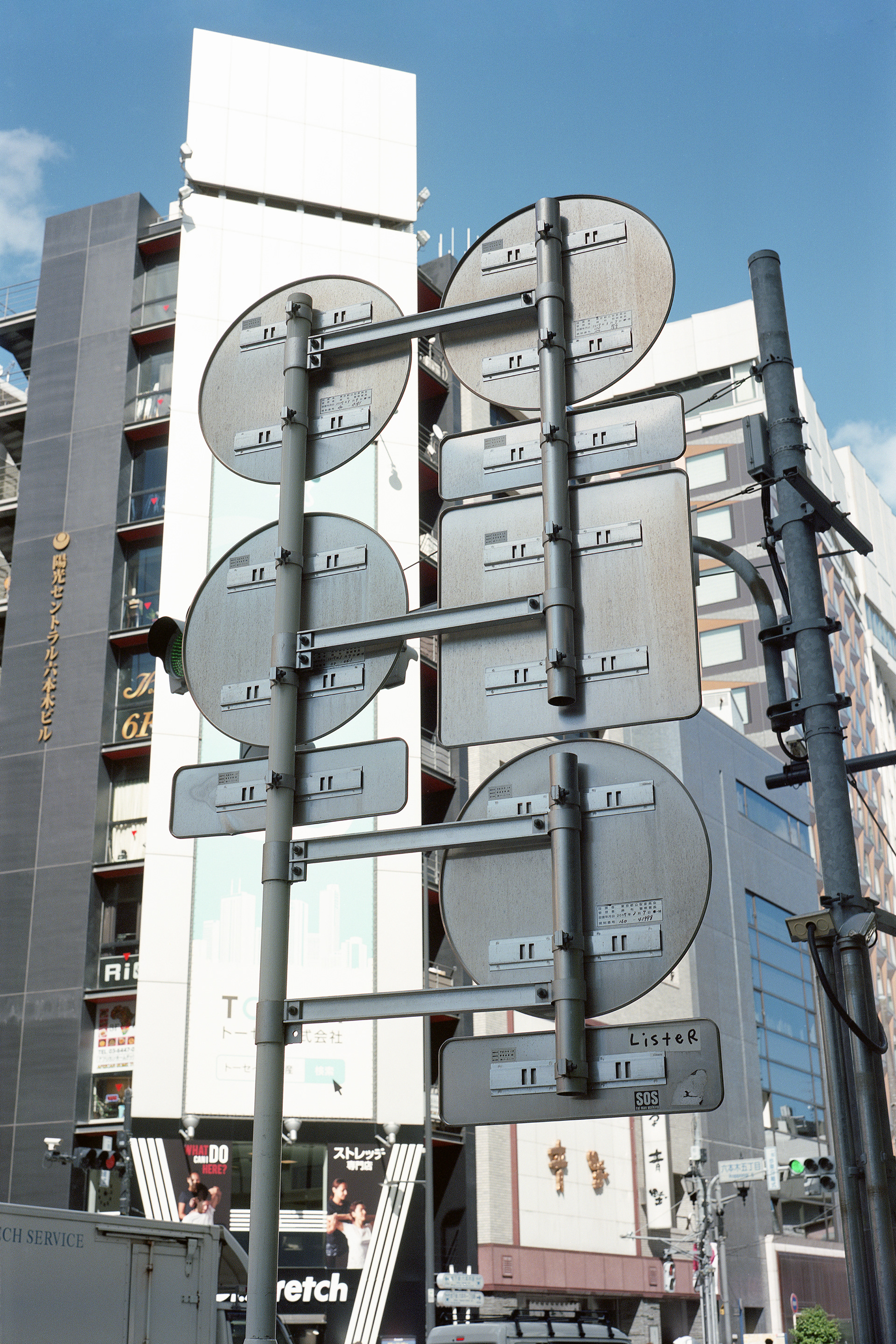
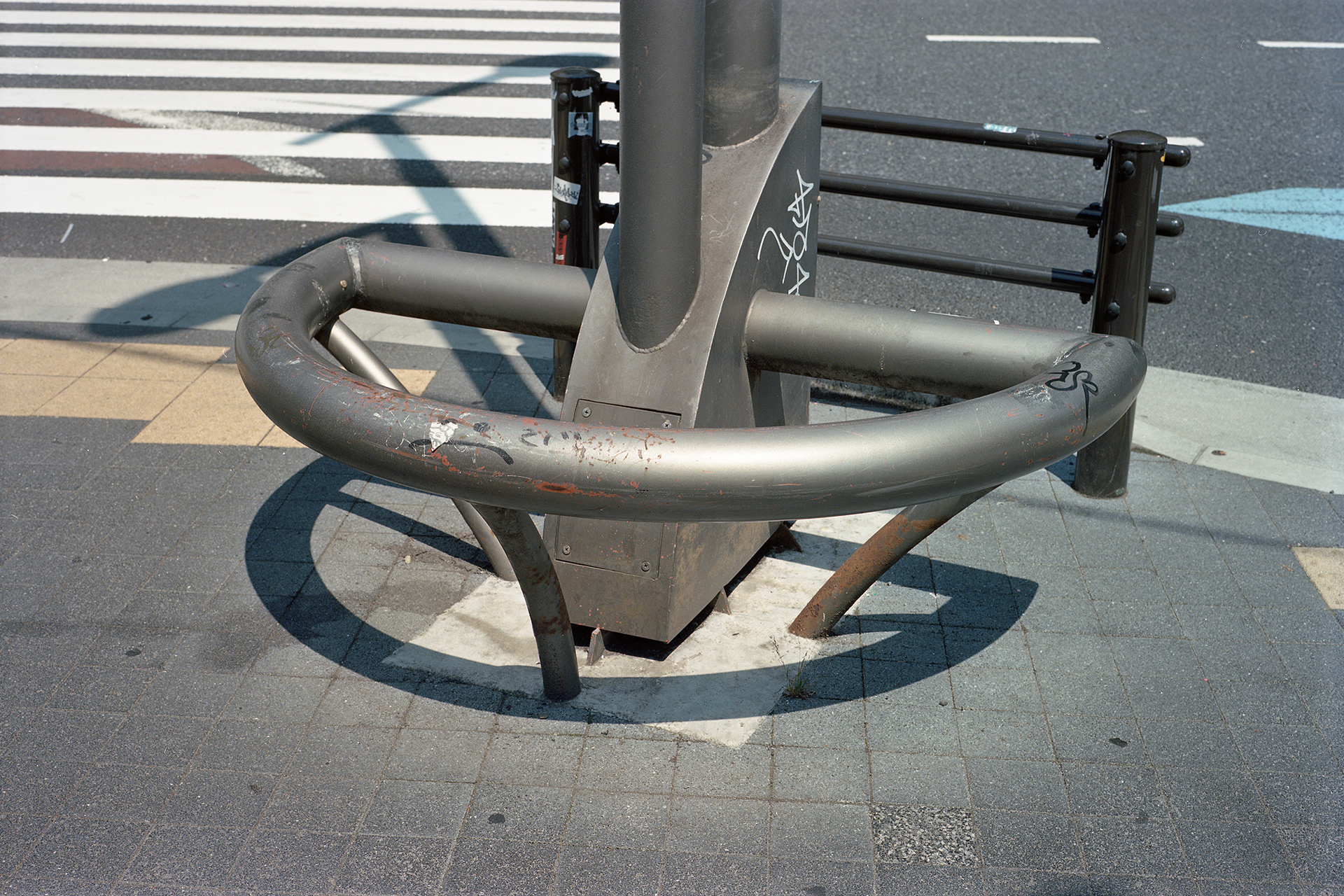
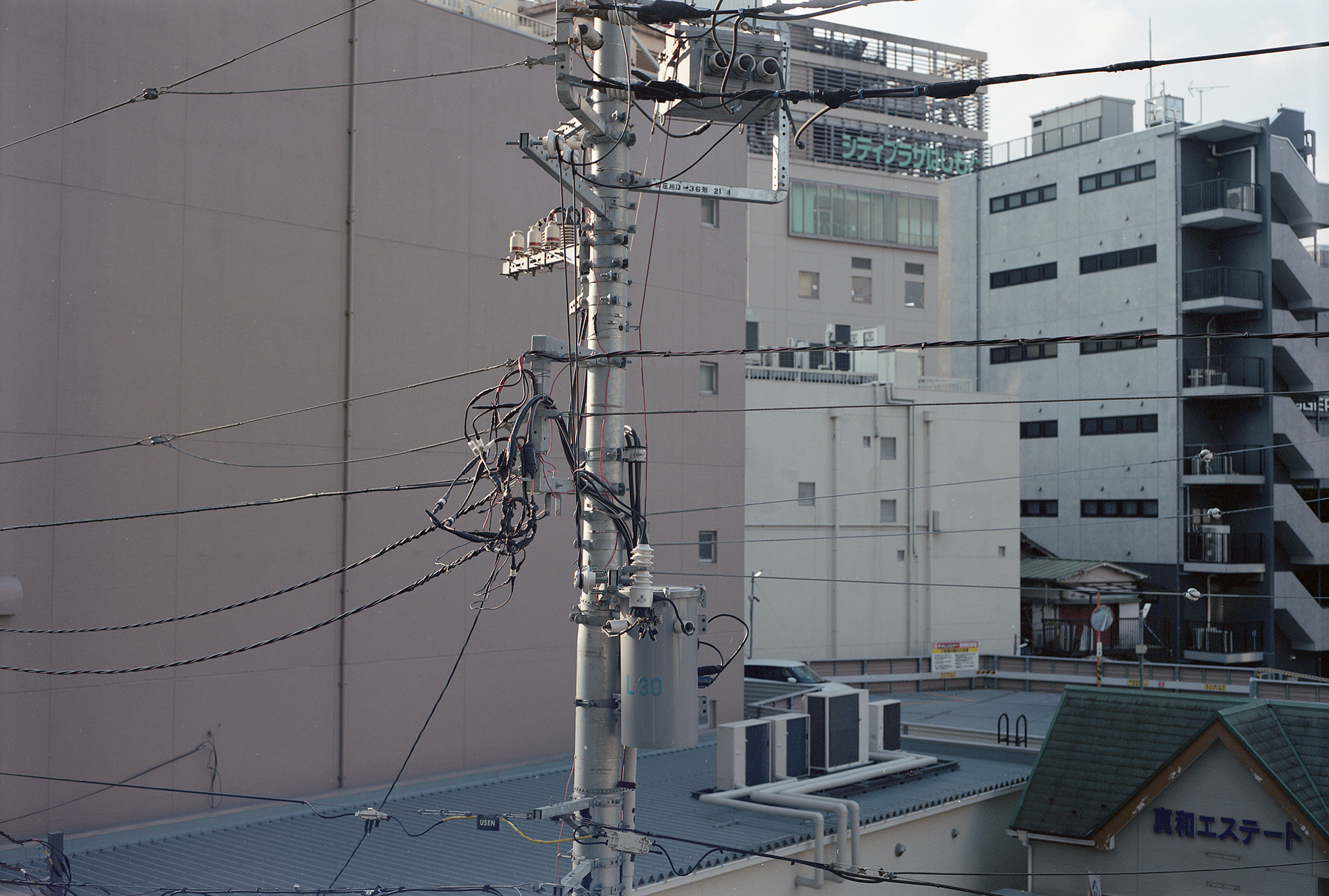
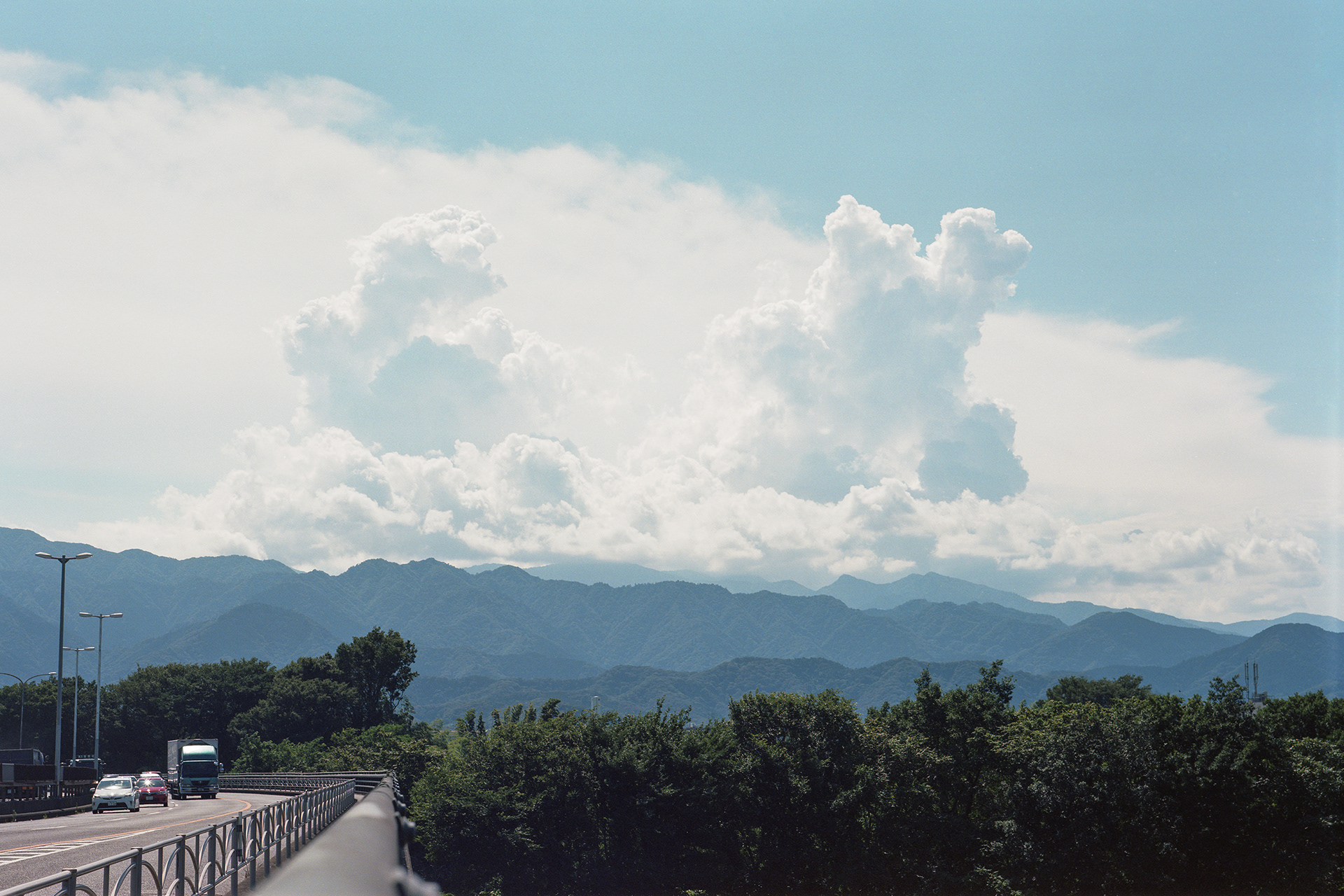
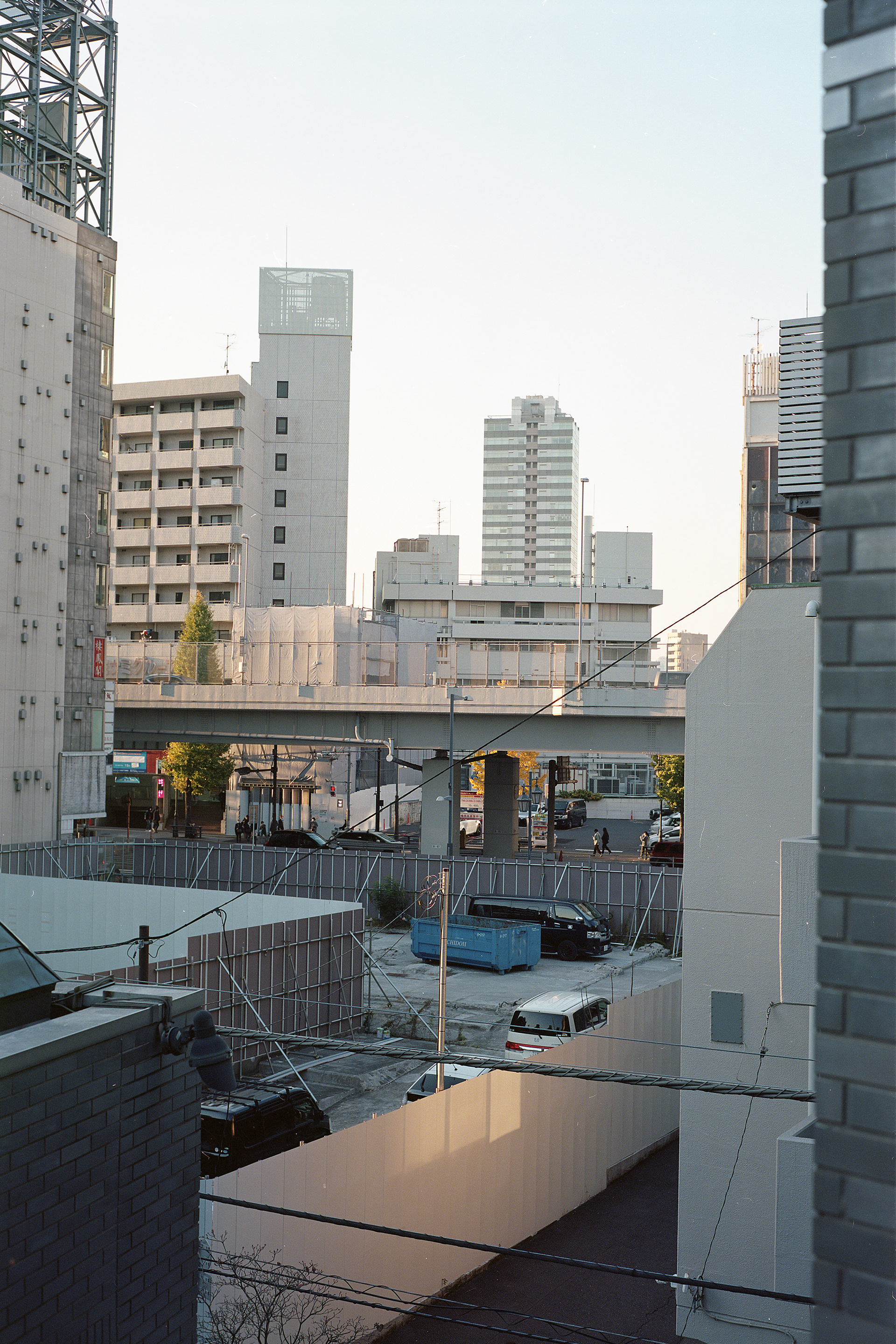
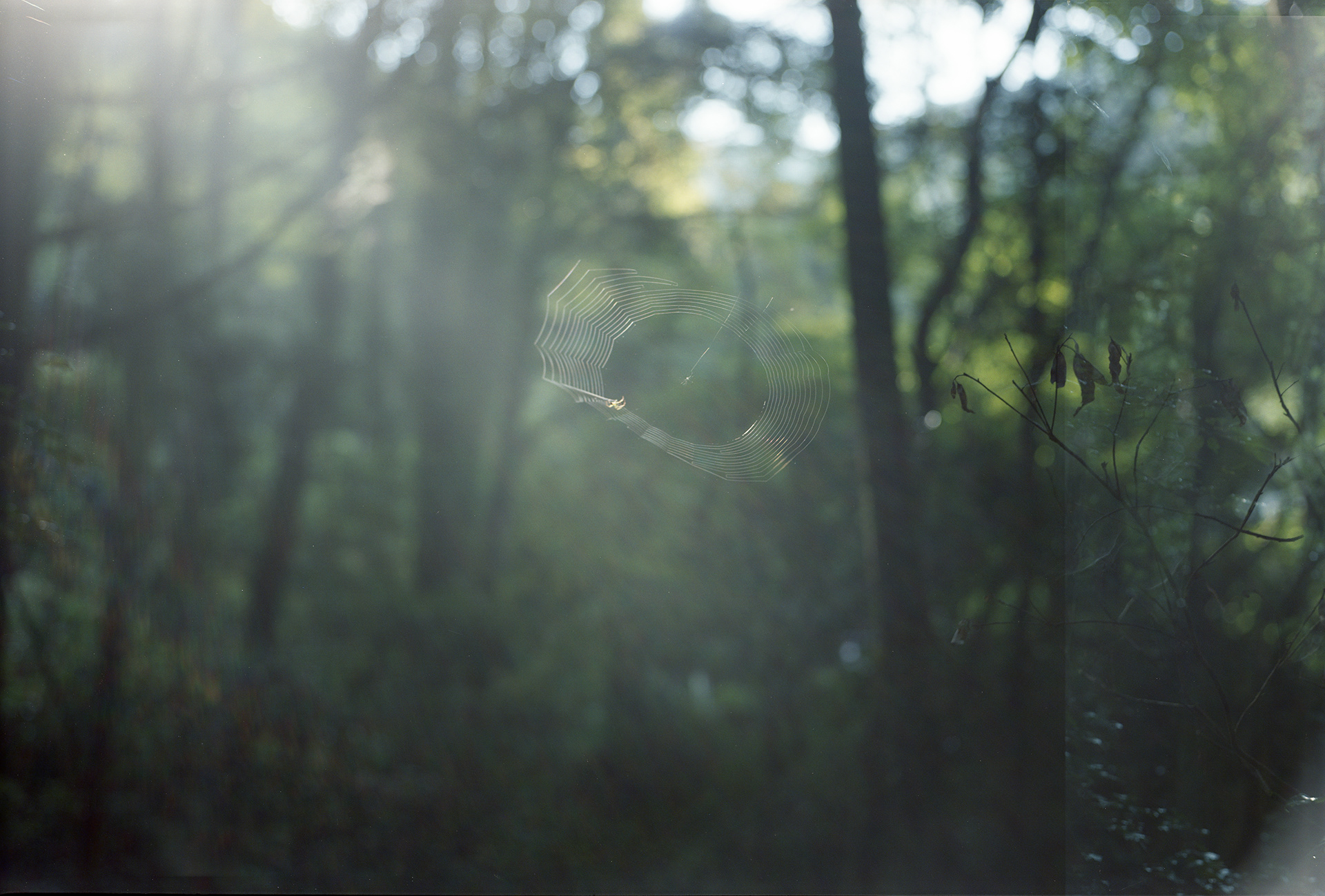
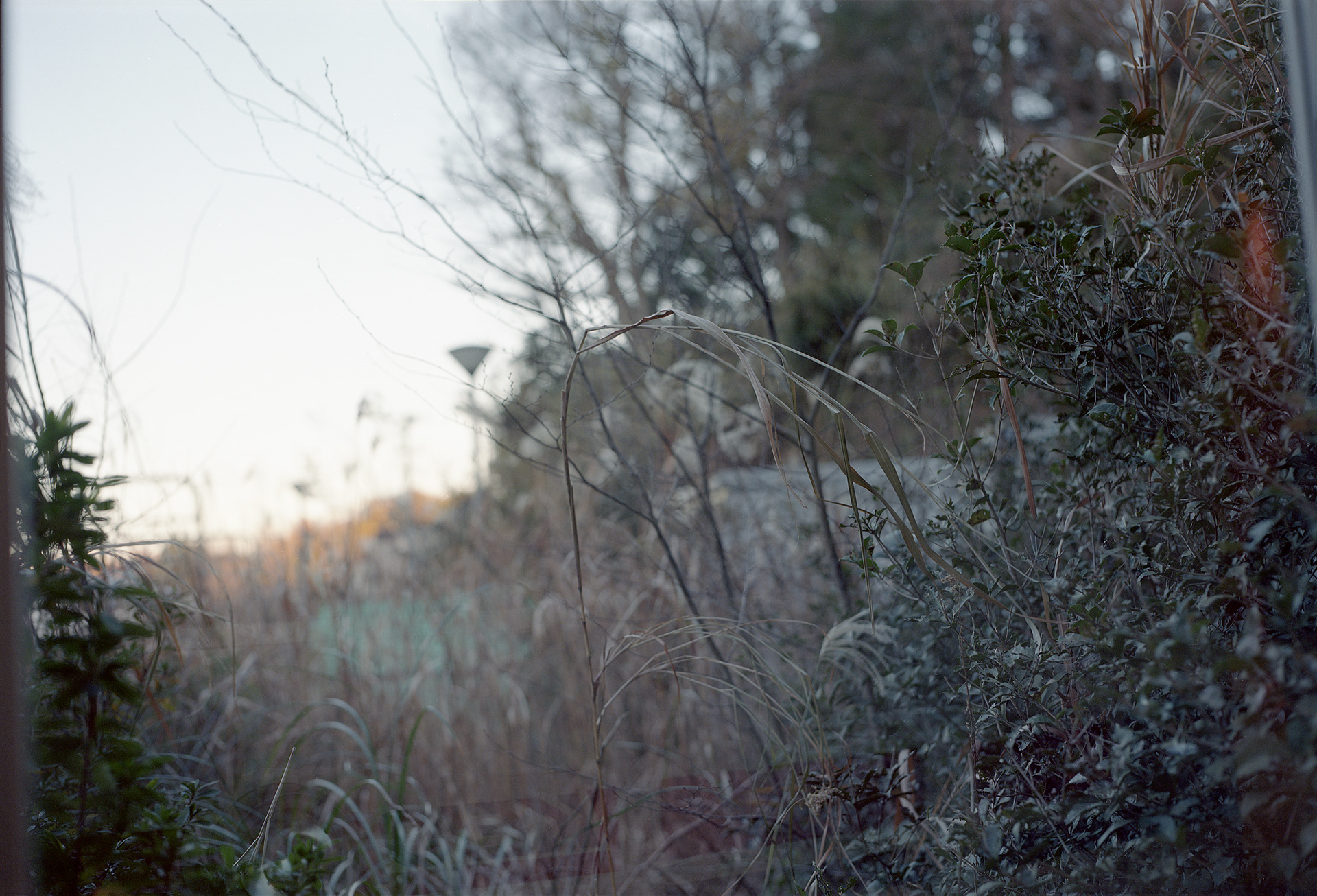
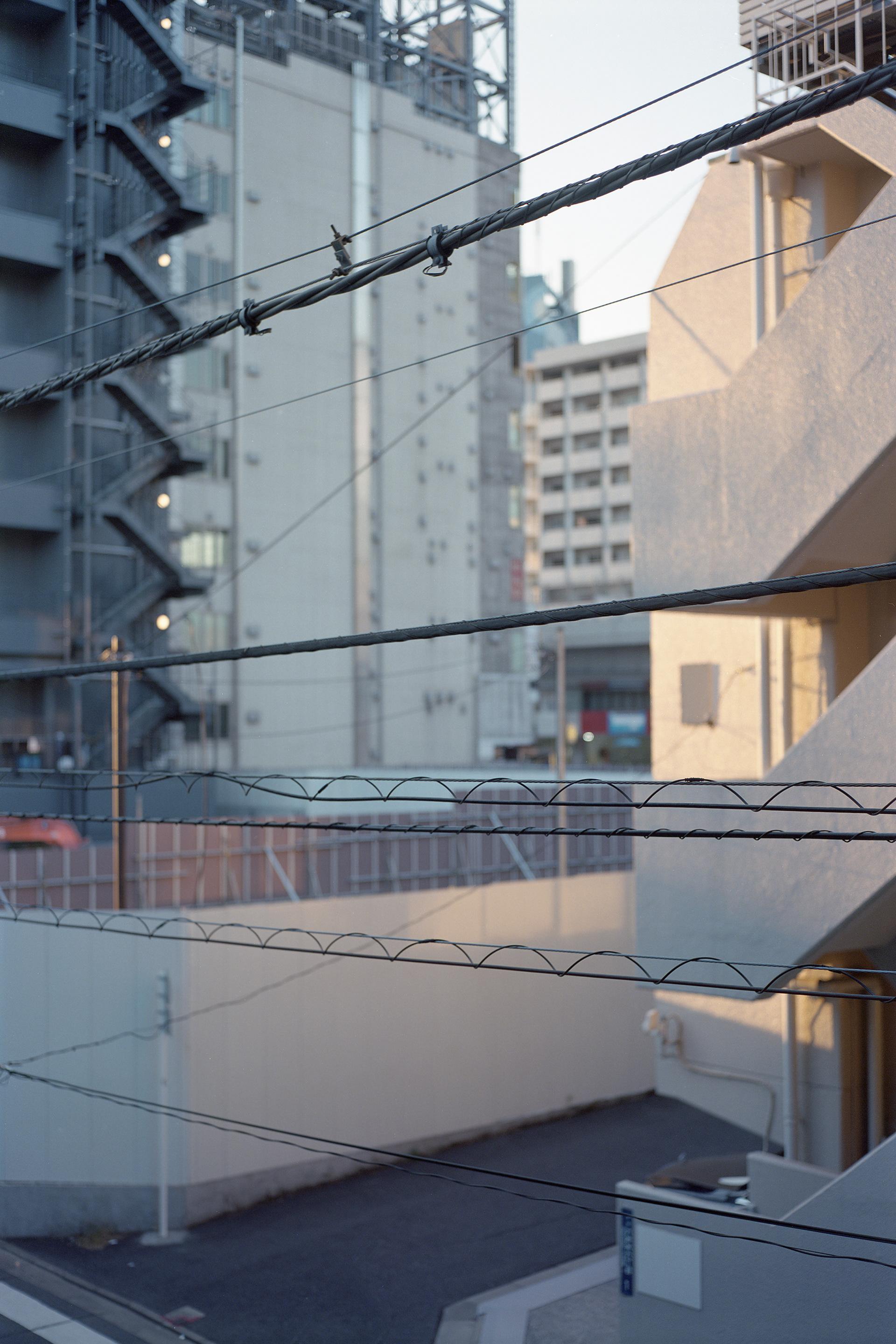
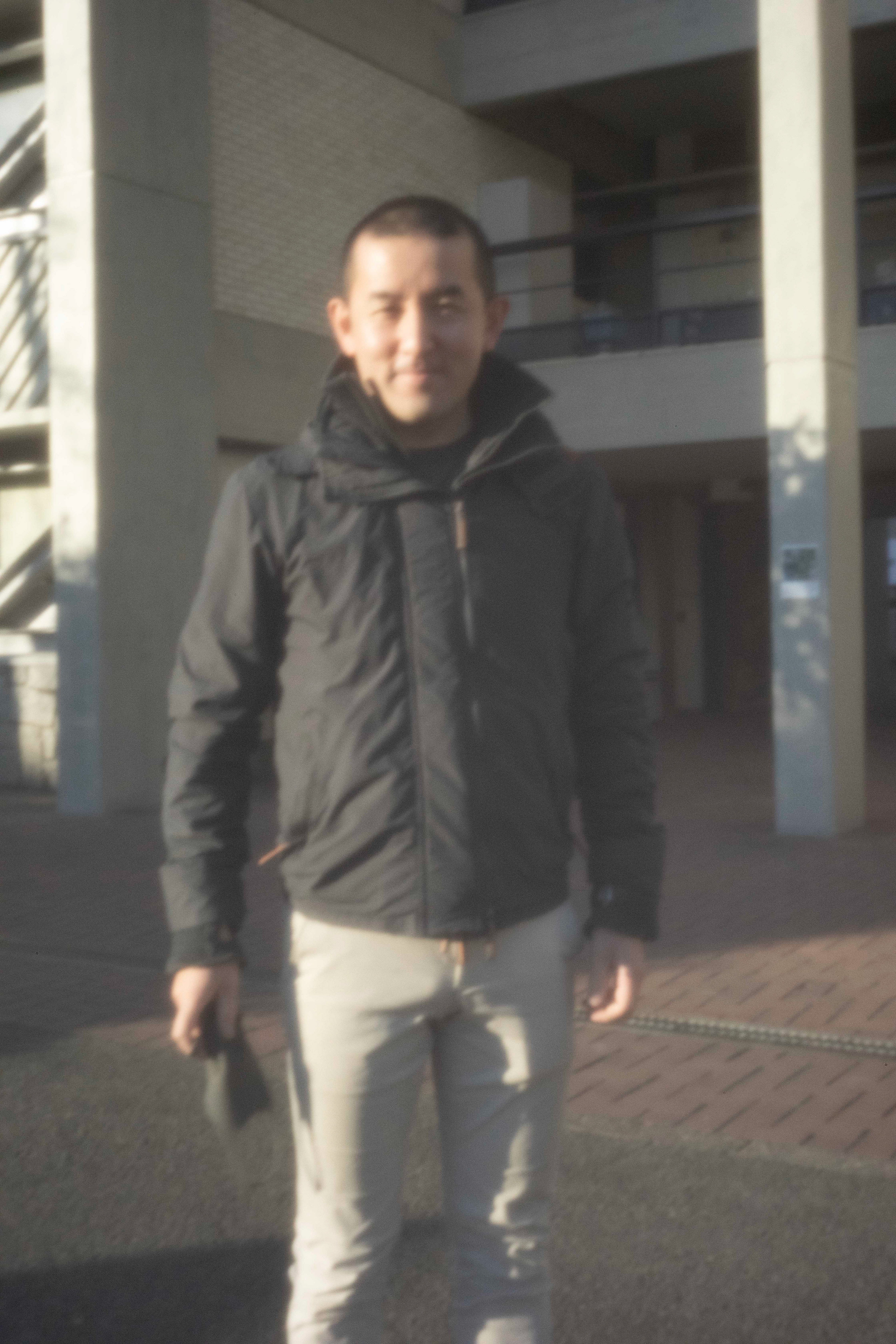
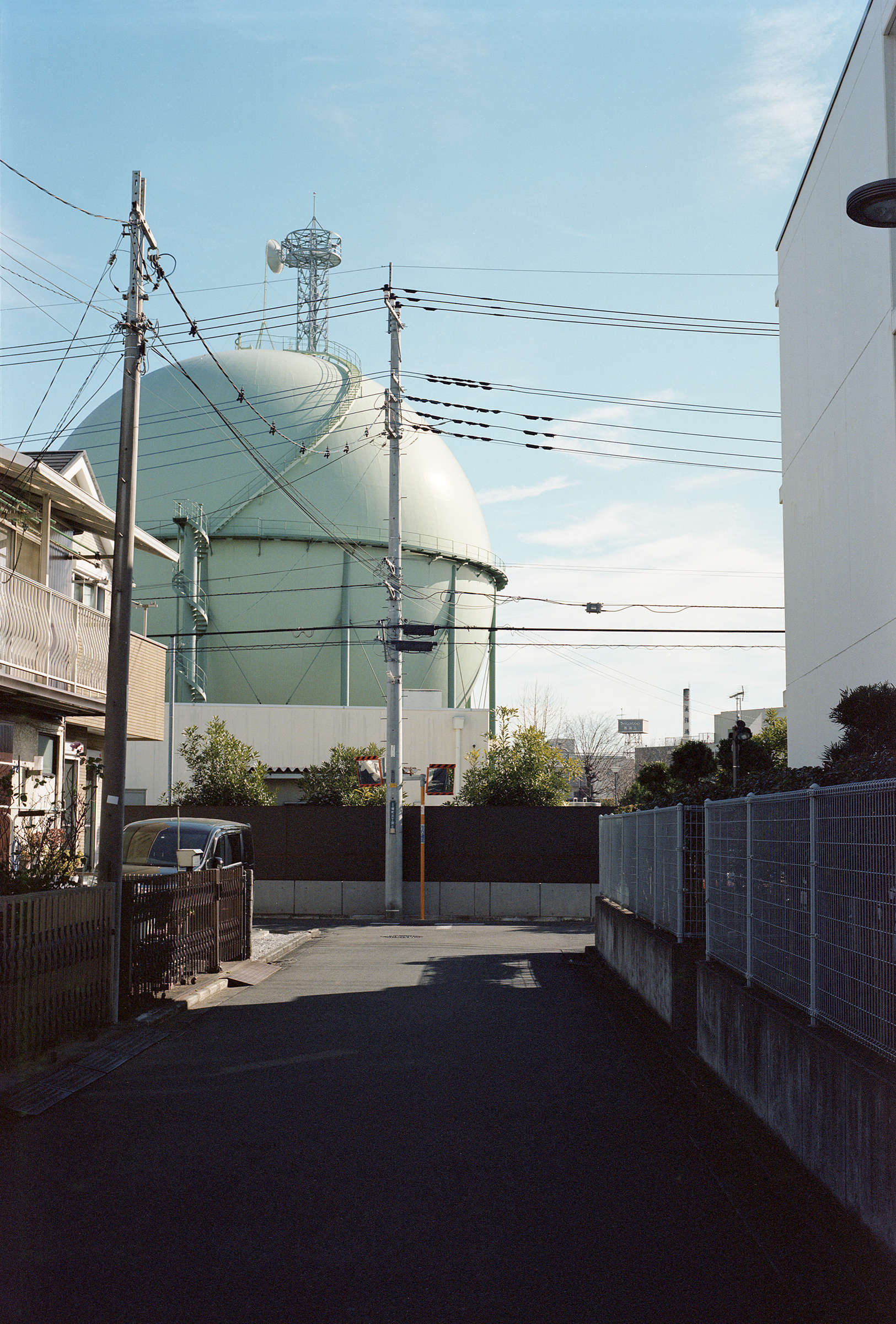
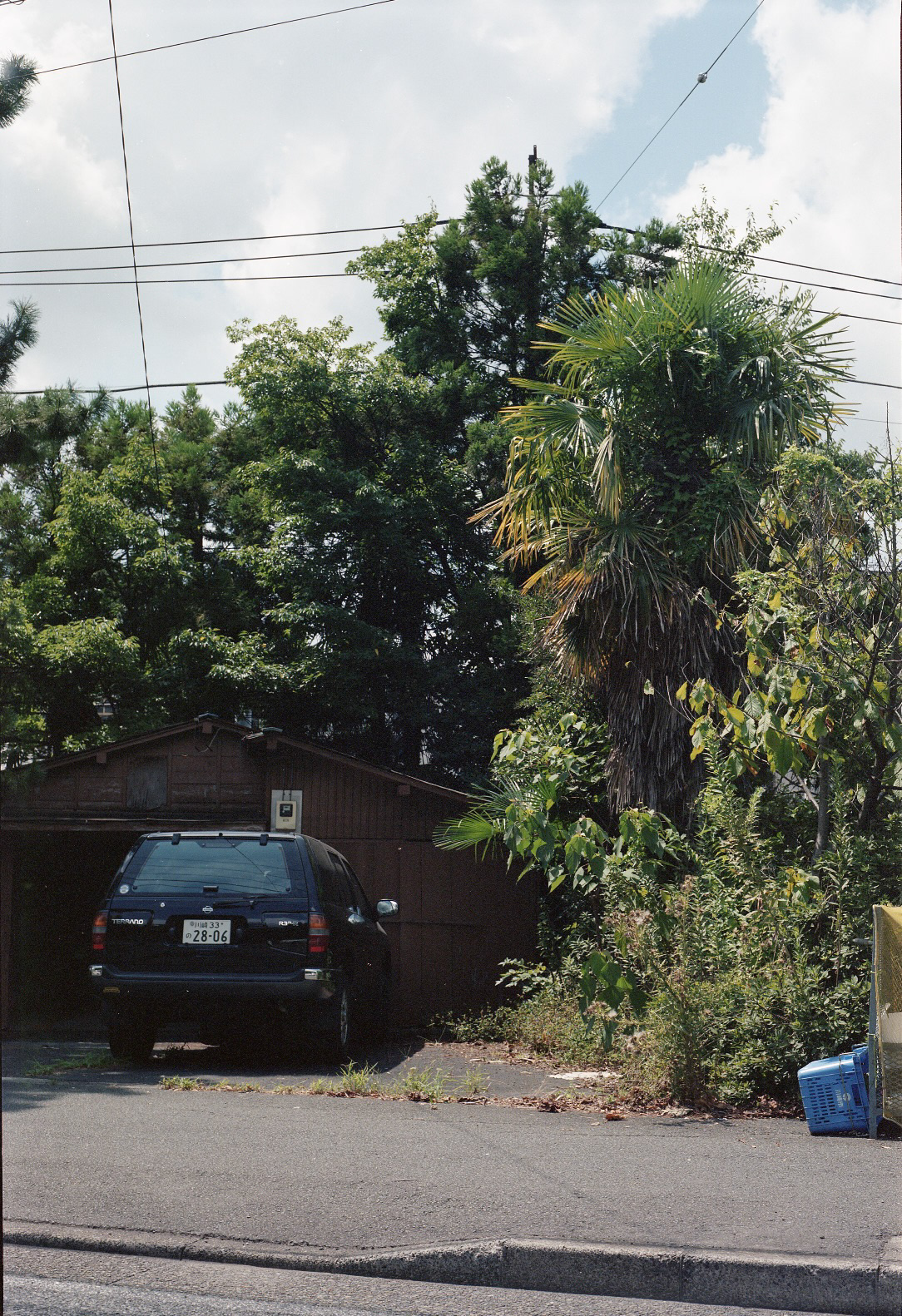
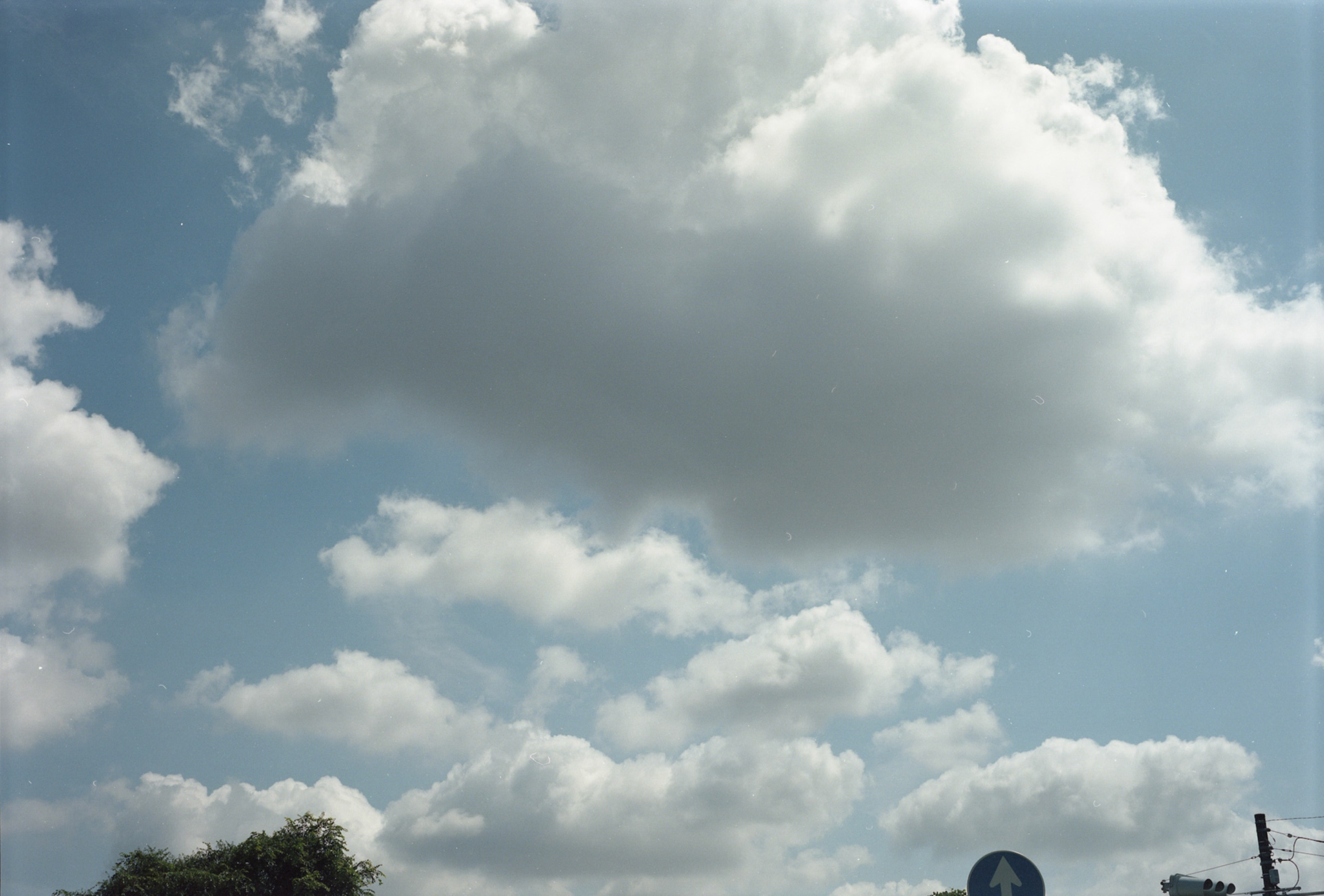
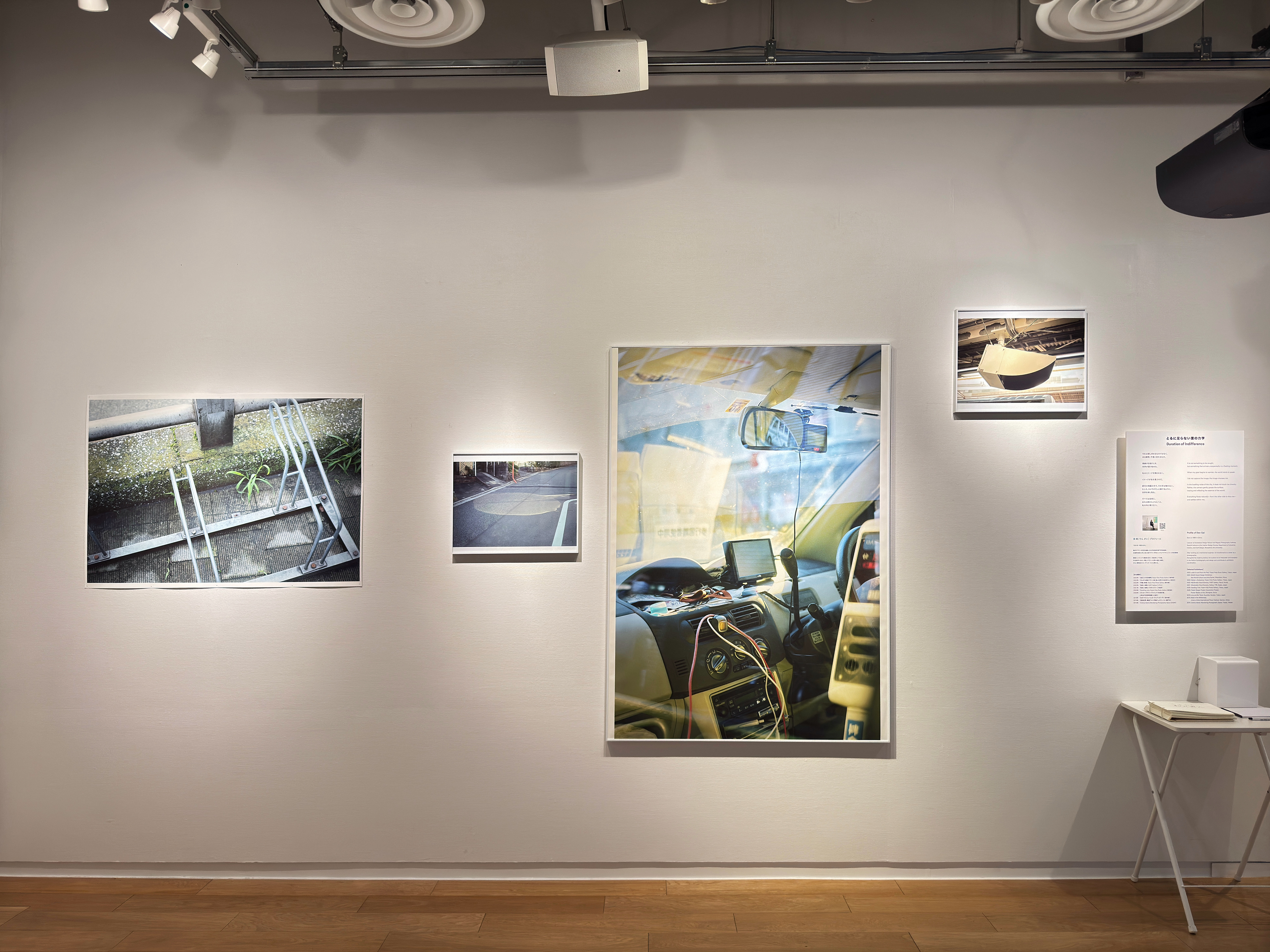
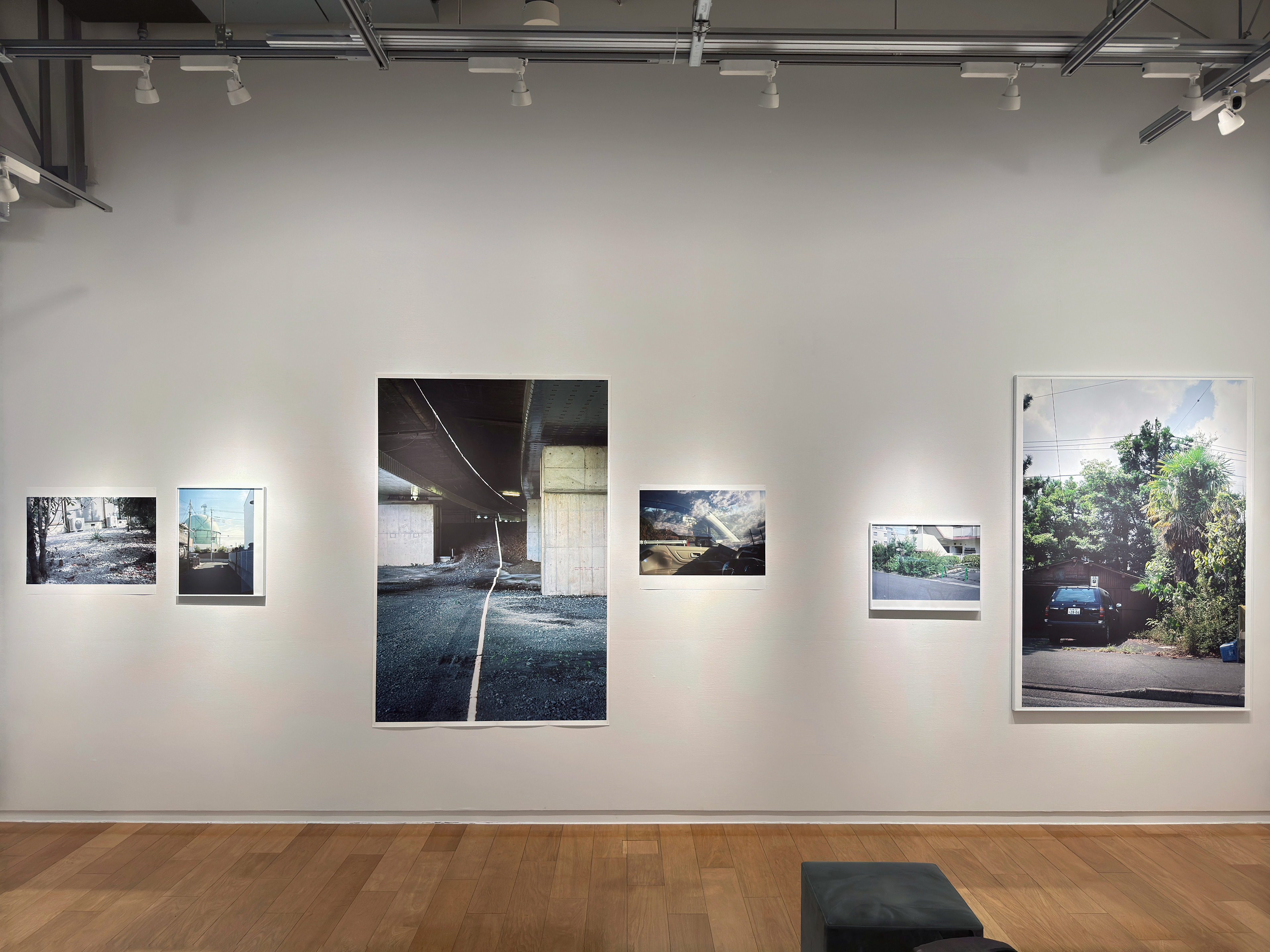
[Statement]
Just past noon at an intersection, the windshield of a dark steel-gray car suddenly turns into a screen under the sunlight. What should be transparent glass instead rises as a double surface—transmitting and reflecting at once—superimposing the shadows of the car interior with the wall, the fence, the parking meter, envelopes, and even the parked cars across the street. Along the arcs of the wipers, thin dust draws lines, faintly painted over by the red of a shop sign, while the afterimages of passersby slide along the lower edge. Am I looking inside the vehicle, or at the city’s skin? The gaze is suspended in that oscillation. At this moment, “meaning” is not an essence hidden within the object but an event arriving belatedly on the surface of the glass. The flicker of reflections, the particles of dirt, settle into the body as small, pre-linguistic stimuli, which words only later struggle to catch. Though we read the signs of the street, the brands of the cars, the daylight’s color temperature, what ultimately arrests us is the contingent edge of reflection summoned by the shutter. What should arise from distance emerges instead through overlapping proximity, inscribed as “closeness within distance” in the singular exposure. The eye is not only an organ that sees the world but also a surface touched by the world. The windshield, as a double screen, renders this reversibility visible—pulling vision back into action, sensation back into movement.
Shift the scene. In a hallway where daylight through glass doors intersects with ceiling lamps, the artificial marble floor glimmers dully, and the wall holds a double shadow of a solitary body. Multiple light sources and reflections split the contour into two lines that overlap and separate in turn. The instant one asks which is the “real shadow,” the question itself loses meaning. A shadow is not an object but a non-objective event produced by optical arrangement, an occurrence surfacing on a plane. Photography gives that occurrence the weight of a thin fragment of time. In being pressed into an image, the shadow appears not as proof of existence but as a fissure in identity. Though we are here, now, the image lags slightly, sliding just ahead. This delay lingers in the body as a register of weak emotions—uncertainty, hesitation, unease—slowing down the pace of perception. It inverts the common assumption of photography as a medium of fixed meaning. The pleasure of instant comprehension is stripped away; slowness of looking becomes the first true encounter.
Step further outside. On the mesh covering the outer wall of a shopping complex, a withered leaf carried by the wind clings quietly. Across the regular grid of the net, the delicate veins of the leaf overwrite order with accident, reweaving design into a fragile script. The leaf does not merely stay—it alters the path of the gaze, transforming the “function” of the mesh into another lattice of meaning. More than indexicality, what attaches here is affect, experienced materially in the retina, cortically in the brain. Its paradox—so light one might overlook it, yet so adhesive one cannot stop looking—photography endures well. Exposure historicizes this chance encounter as an unrepeatable arrangement, preserving the contact between mesh and leaf not as a concept but as tension inscribed on the surface, where order and deviation, control and flux, co-exist.
The works I present situate us not before “the world’s façade,” but at its points of contact. The windshield reflection catches vision between reality and illusion; the doubled shadow exposes the deferral that splits identity; the leaf entangled in mesh quietly discloses the politics of contingency inscribed within order. Photography here does not transmit information but operates as a device that disturbs, delays, redistributes meaning. Meaning is not an essence buried in things, but a surface effect arising between word and object, body and world. The photographic plane functions like a table for such events: intensities glide across the image, then belatedly cling to the viewer’s body.
This is why it must be photography. Reflections, afterimages, glare, overlapping shadows, minute misfocus, the blur inscribed by shutter speed, even the grains borne by sensor or film—all of these are optical-temporal contingencies, wagers that cannot be matched by the procedures of painting. Photography accepts the moment when light touches surface as an irreversible unit. Absence is transformed into “presence-as-lack”; void becomes the viscosity of meaning’s delayed arrival.
Once more, I stand before the car window. The fissure of cloud floating on the glass overlaps the shadow of power lines, each time becoming another momentum. Fragments of urban signage make mirrors, as the sleeve of a passerby lifts the screen’s chromatic pitch. Meaning happens before it is grasped. In front of doubled shadows, the body should be one, yet the image is two—a paradox true on the same surface. The leaf that should have fallen, but stayed, stitches a malfunction of chance into the mesh of order. Before these, we receive not conclusion but delay and attachment. A viewer’s common sense first reads the studium—place, history, material, author—then is pricked by punctum in minute details: the sheen of gloss, motes of dust, the tilt of a nail, the rust, the torn edge of a sticker. Yet what the work induces is not cathartic exaltation, but “weak emotions”—suspension, irritation, ennui, anxiety. These affective registers convert delay in photographic meaning into a critical experience, drawing the viewer into the practice of slow observation and repeated gaze.
Here lies the ethics of photography: not to grant immediate legibility, but to invite slowness, to distribute not strong but enduring weak emotions—groping, suspension, faint unease—across the image. What must be emphasized is that the power generated by “slow observation” and “repeated gaze” is not a grand force promising revelation, but a minute one. Yet this minuteness is decisive. Each time the gaze lingers and returns to the same image, meaning arises not as a fixed value but as an event reaffirmed. This is the “amateur’s gaze”—not immaturity, but a deliberate slowing of habitual reflexes—capable of registering the ubiquitous contact surfaces between body and city. Visually, the images may seem light and tranquil; conceptually, they hold taut tensions between order/deviation, control/flux. This fragile but insistent force subtly recalibrates perception, disrupting the short circuit of “seeing equals understanding.” The image functions not to supply information, but as a device to decelerate immediacy. Meaning continues to arrive belatedly.
This minute force does not uncover hidden essences, but catalyzes the recurrence of small events on the surface. The amateur’s slowness allows perception of minute differences, opening thresholds where clumsy, singular stimuli redistribute into intensities of sensation. Ultimately, the “amateur’s eye,” sustained by slowness and repetition, does not impoverish the world but thickens its contact surfaces. Upon that thin but certain thickness, I begin again the practice of seeing.
[とるに足らない雲の力学]
正午を少し過ぎた交差点で、くろがね色の乗用車のフロントガラスが、陽を受けて不意にひとつのスクリーンに変わる。透明であるはずのガラスは、透過と反射という二重の機能を同時に立ち上げ、通りの向こうの壁面やフェンス、パーキングメーター、封筒、向かい側の駐車同士までもを、車室内の影と重ね合わせて映しだす。ワイパーの軌跡に沿って薄い埃が線を描き、その上を店舗看板の赤がうっすらと塗り、通行人の残像が下段を滑ってゆく。見ているのは車内なのか、街の表面なのか—視線はその往還のさなかに宙吊りにされる。このとき「意味」は、対象の内部に眠る本質ではなく、ガラスという表面で生じる出来事として、遅れて到来する。反射の瞬きや汚れの粒は、説明を先取りしない小さな「刺激」として身体に沈着し、やがて言葉のほうがそれに追いつこうとする。街路の記号や車の銘柄、都市の昼の色温度を読みながらも、最終的に私たちを捉えるのは、シャッターの触発に呼応して現れる偶有的な反射の縁である。距離を保つことで立ち上がるはずの気配は、むしろ近接と重なり合って生まれ、「遠さのなかの近さ」として露光の一回性に刻まれる。眼は世界を見る器官であると同時に、世界に触れられる表面でもある。フロントガラスという二重のスクリーンは、まさしくその可逆性を可視化し、見ることを行為へ、感覚を運動へと引き戻す。
場所を移す。ガラス扉越しの自然光と天井の灯が交錯する廊下で、人工大理石の床が鈍く光り、壁にはひとりの身体の二重の影が浮いている。複数の光源と反射によって輪郭は二本の線に分かれ、ところどころで重なり、また離れてゆく。どちらが「本当の影」か、と問うた瞬間、その問いは意味を失う。影は物体ではなく、光学的配置が生みだす非物体的な出来事であり、表面に浮かぶ事件である。写真はこの事件に薄い時間の断片という重みを与える。押し込められた瞬間、影は存在の証明ではなく、同一性の裂け目として現前する。私たちはいま・ここにいるはずなのに、像はわずかに遅れ、少し先へ滑る。その遅延は、不安や手探りといった“弱い感情”の音程で身体に残り、鑑賞の速度を抑える。「写真=意味を固定するメディア」という通念を明確に反転する。「すぐに分かる」ことの快楽が剝ぎ取られ、遅く観ることが、はじめての経験となる。
さらに外へ。商業施設の外壁に張られた網目に、風に運ばれてきた枯葉がひっそりと付着している。等間隔のメッシュを横切るように葉脈の微細な線が重なり、人工の秩序と自然の偶然が、図案の上で一枚の作法を編み直す。葉はただ留まっているのではない。そこに留まることで、視線の通り道をわずかにねじり、網の「機能」を別の意味の格子へと変換する。インデックス以上に、情動の付着は、物質的にも、大脳皮質的にも経験される。見逃してしまいそうな軽さと、見続けてしまう粘りーその矛盾に、写真はよく耐える。露光の一回性は、この偶然をやり直し不能の配置として歴史化し、網と葉の接触が、秩序/逸脱・制御/流動という対立軸を単なる概念ではなく、表面に貼られた緊張として保存する。
私が提示している作品は、いずれも「世界の正面」ではなく、接触面に私たちを据える。フロントガラスの映り込みは、現実と虚像の境界に視線を挟み込み、影の二重化は、存在の同一性を裂く差延を体験させ、網目の落葉は、秩序にとり憑く偶然の政治学を静かに露呈する。ここで写真は、情報を伝えるメディアではない。むしろ意味の生成を撹乱し、遅延させ、分配する装置として働く。意味はものの深層に沈む本質ではなく、語と物、身体と世界のあいだで生じる表面の効果であり、非物体的事件である。写真の面(おもて)は、その事件のための卓(テーブル)のように機能し、強度は像の上を滑走しながら、やがて観者の身体に遅れて貼りつく。
だから、写真でなければならない。反射、残像、グレア、影の重なり、微細なピントのズレ、シャッター速度が作るブレ、センサーやフィルムが抱え込む粒子まで、それらは光学—時間的な偶有性であり、絵画的再現の手続きでは同じ賭け金になりえない。写真は、光が表面に触れたそのときを、不可逆の単位として引き受ける。そこで不在は「現前としての欠如」に変わり、虚無は「意味が遅れてやって来る時間の粘性」へと変換される。
もう一度、車の窓ガラスの前に立ってみる。ガラスに浮かぶ雲の裂け目は、電線の影と重なり、そのたびに別の動勢に成り変わる。都市の看板の断片が「鏡像」をつくり、それを通った歩行者の袖の色が、わずかに画面の彩度を引き上げる。意味は把握されるより先に、起きてしまう。二重の影の前では、身体は一つであるはずなのに、像は二つであるというパラドクスが、表面の上で同時に真となる。網目に留まる葉は、落ちるべきものが留まってしまったという偶然の故障を、秩序の図案に縫い込む。私たちはそれらを前に、結論ではなく、遅延と付着を受け取る。観者の常識はまず、場所・歴史・素材・作者情報といったスタディウムの地平を読み、ついで光沢や埃、釘の傾きと錆、ステッカーの断ち切りなど微細な差異にプンクトゥムとして刺される。しかし本作が誘発するのは、カタルシス的な昂揚ではなく、「弱い感情」—保留・苛立ち・倦怠・不安—の領域である。これらの情動が、写真表面における意味の遅延を批評的経験へと転化し、遅い観察と反復凝視の実践へと観者を編入する。
ここにこそ、写真を媒介にすることの倫理がある。観者に迅速な判読を与えるのではなく、遅い観察と反復凝視を促し、強い感情ではないが長く残る弱い感情—手探り、保留、うっすらとした不安—を、像の上に分配する。ここで強調したいのは、「遅い観察」と「反復凝視」が生み出す作用が、派手な発見を約束する大きな力ではなく、むしろとるに足らない微小な力にすぎないという事実である。だが、この微小さこそが決定的だ。視線が表面に長く留まり、同じ像へ幾度も回帰するたびに、意味は確定値としてではなく再確認される出来事として立ち上がる。習熟の自動化から一歩身を引いたアマチュアのような眼差し—未熟の比喩ではなく、常識的鑑賞の反射神経を意図的に遅らせる態度—は、都市と身体のあいだに遍在する接触面を拾い上げる。そこには、視覚的には軽やかで静謐な光景が並ぶ一方で、概念的には秩序/逸脱、制御/流動という対立軸がきしみ合う緊張が、薄く、しかし確かに張り詰めている。この力は、観者の知覚をわずかに再調整し、「見ること=理解すること」という短絡を撹乱する。言い換えれば、像は情報を供給するのではなく、理解の即時性を減速させるための装置として作動し、意味は遅れて到来し続ける。
この微小な力は、深層の本質を暴くのではなく、表面に生起する小さな事件を繰り返し作り出すための触媒である。アマチュア的な遅さが許す微細な差異の感受は、ぶきっちょで単発の刺激から連続的な閾値とひらき、「感覚の強度」として再分配される。結局のところ、この遅さと反復に支えられた「アマチュアの眼」は、世界を貧しくするのではない。むしろ、世界の接触面を濃くする—その薄いが確かな厚みの上で、私はあらためて「みる」ことの練習を始めるのである。
